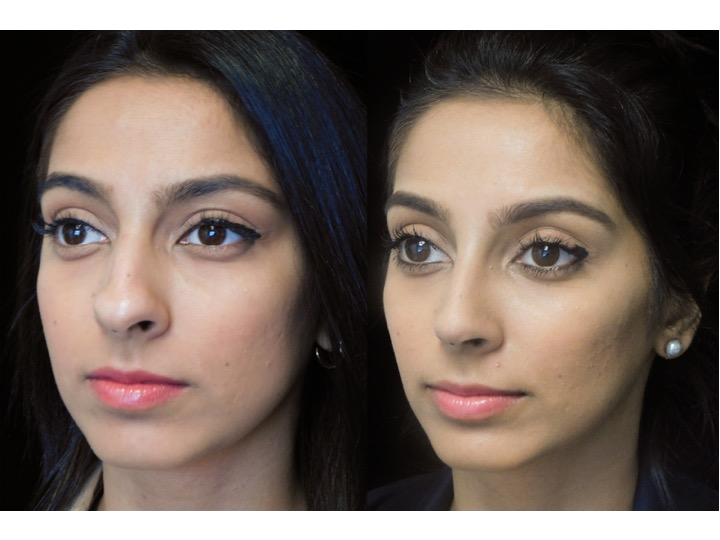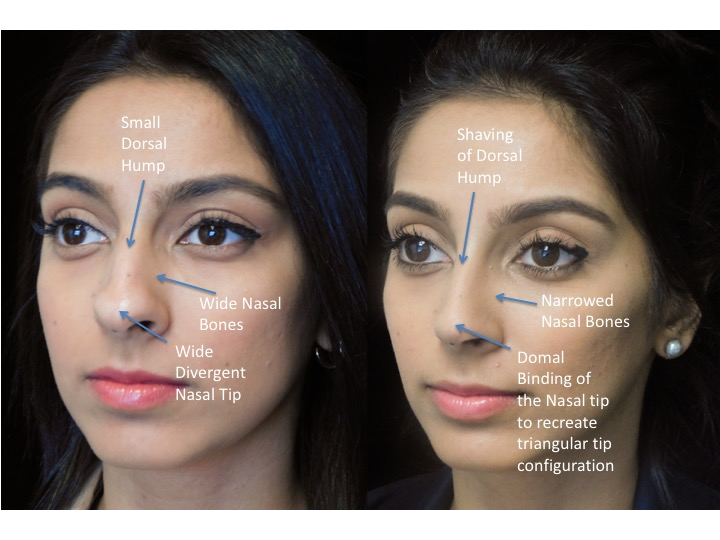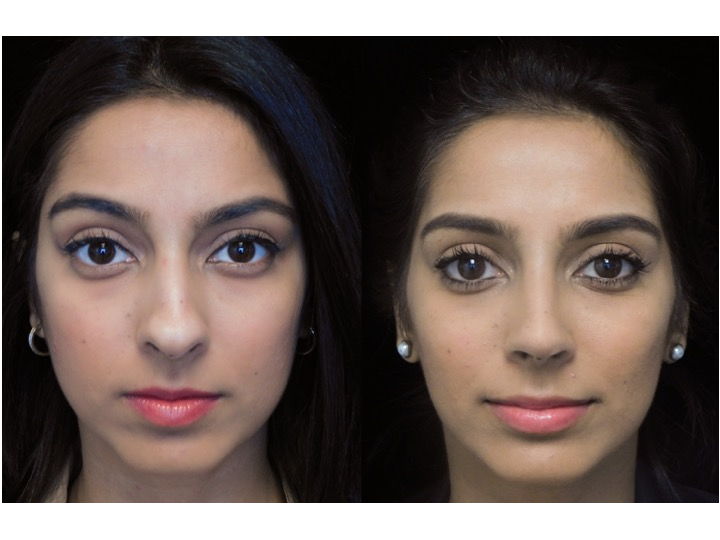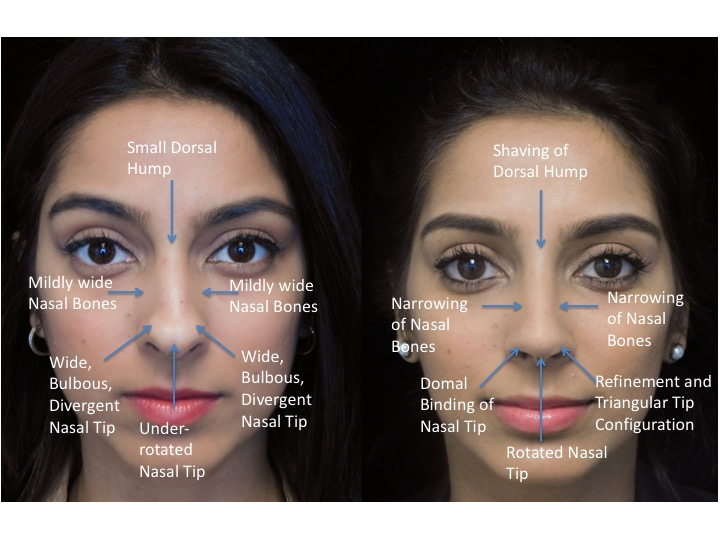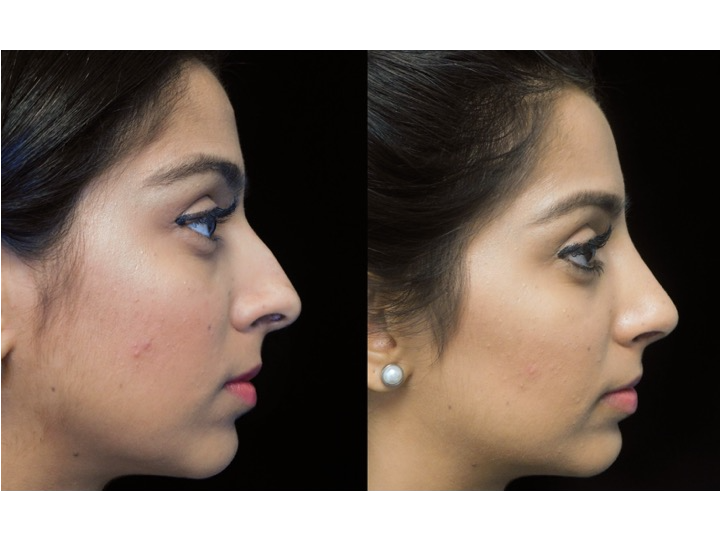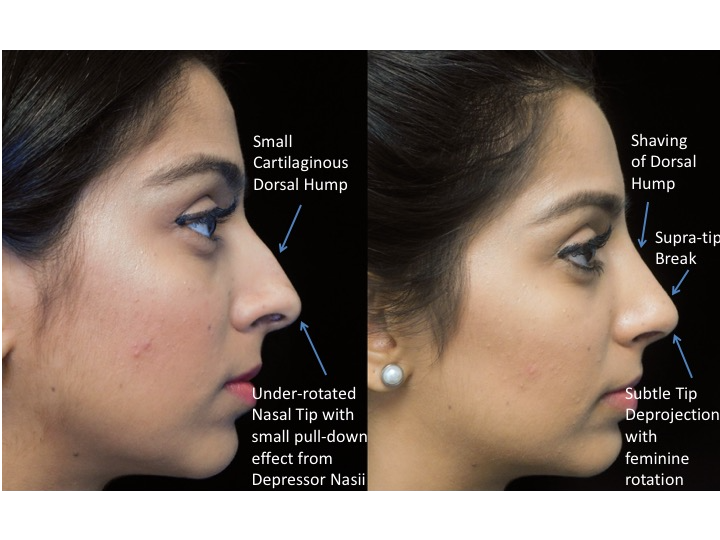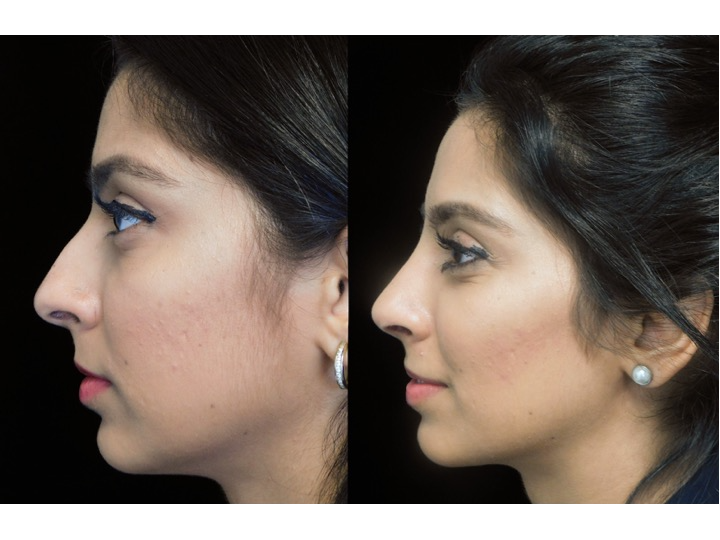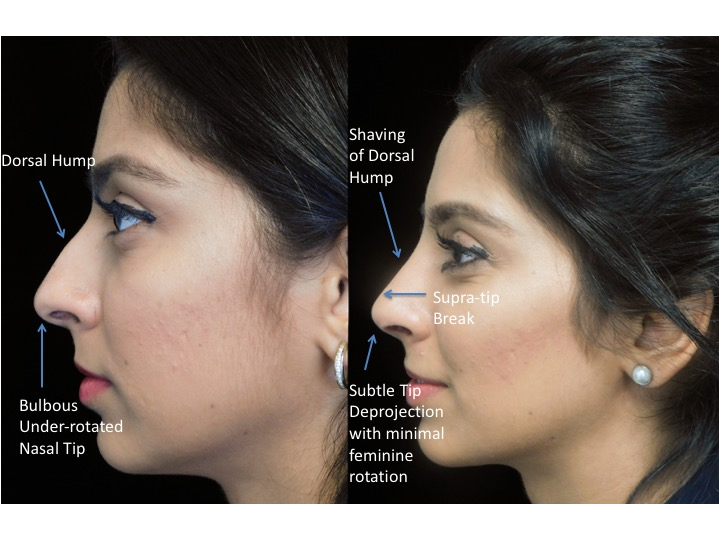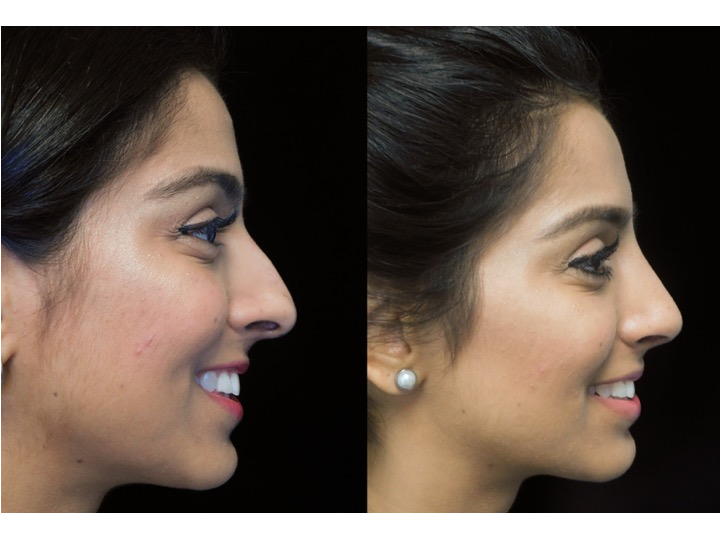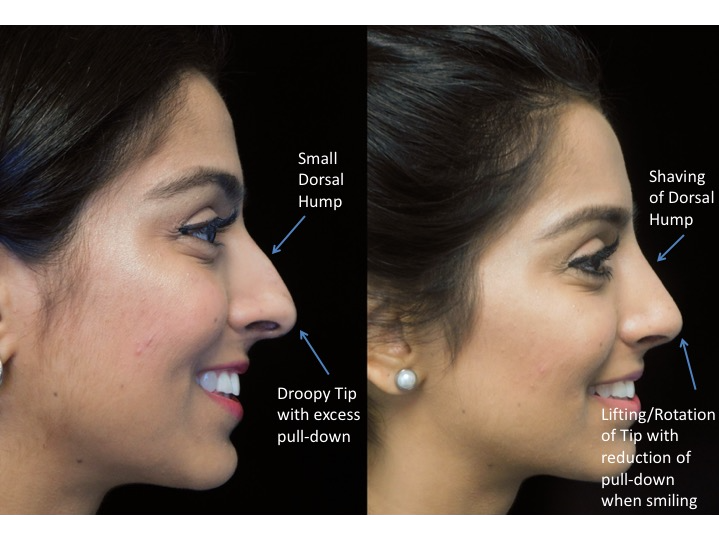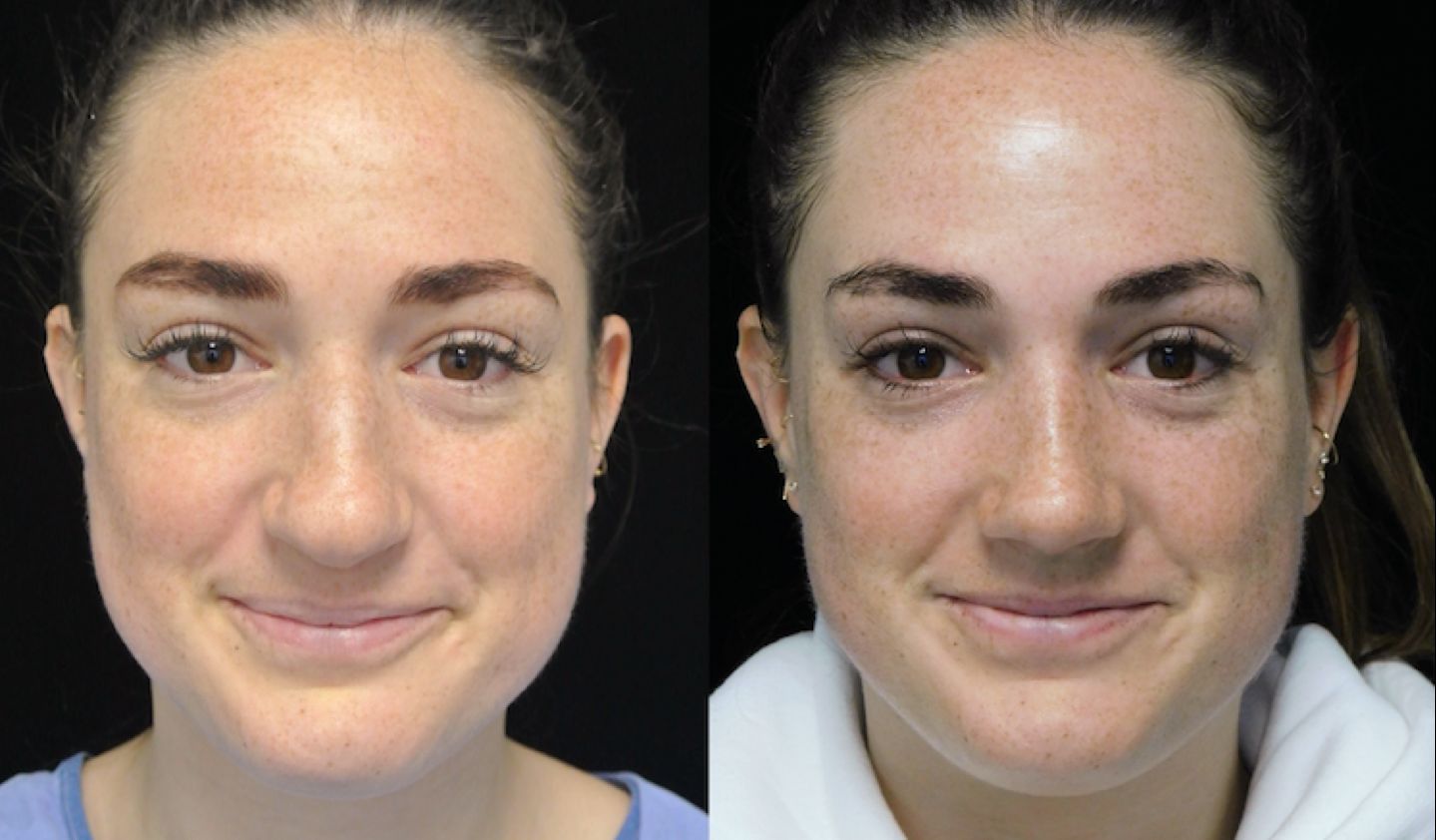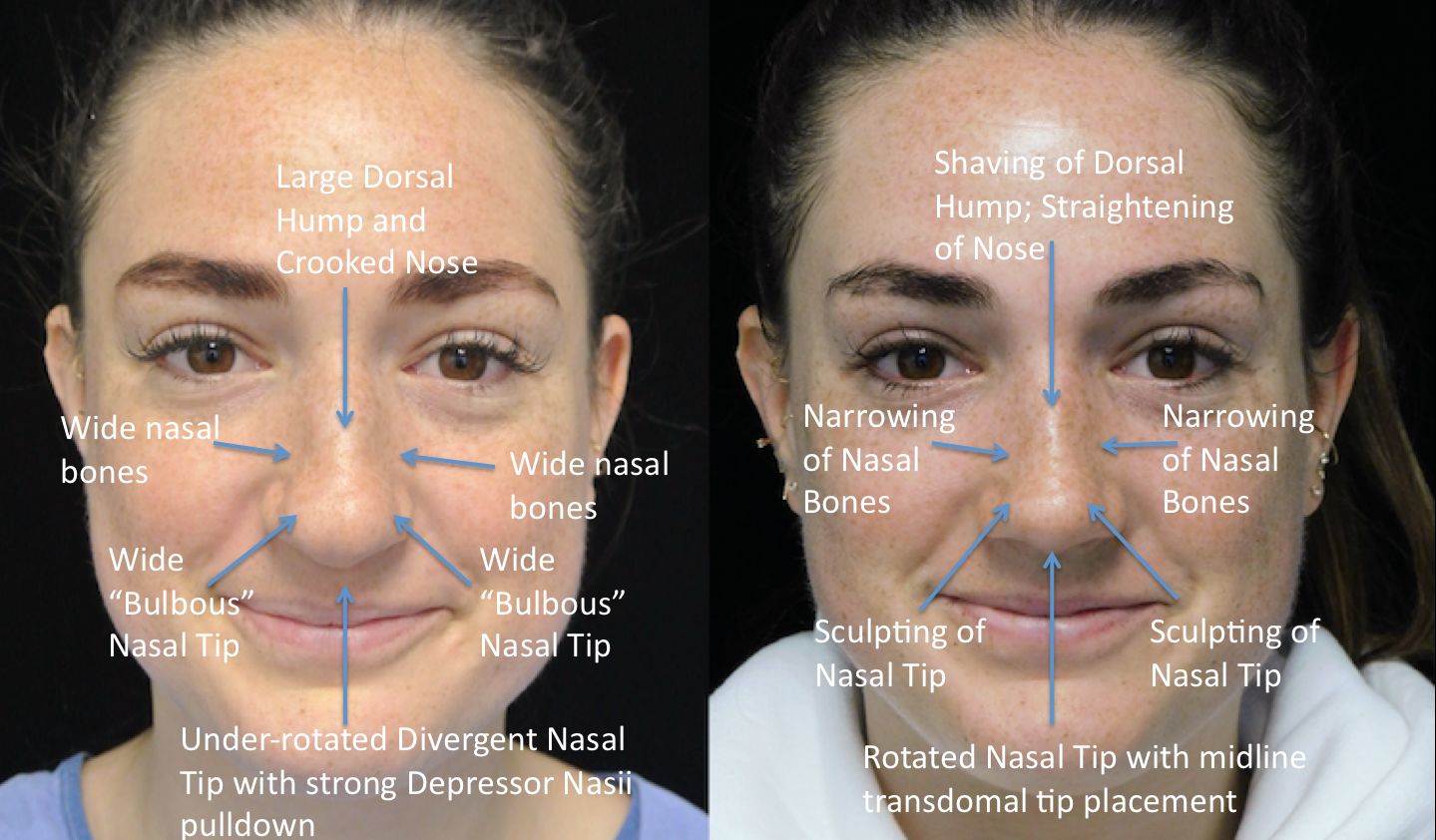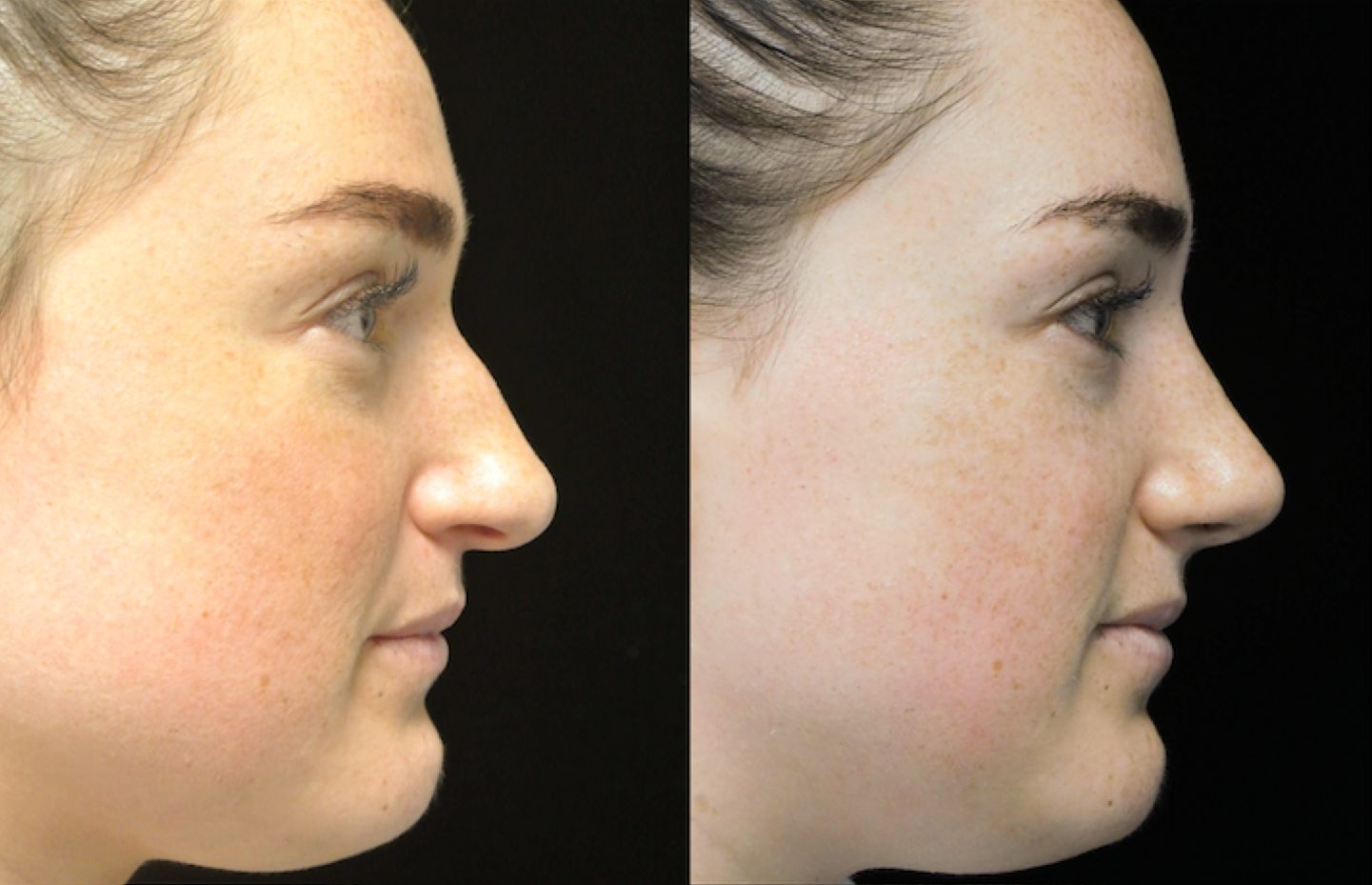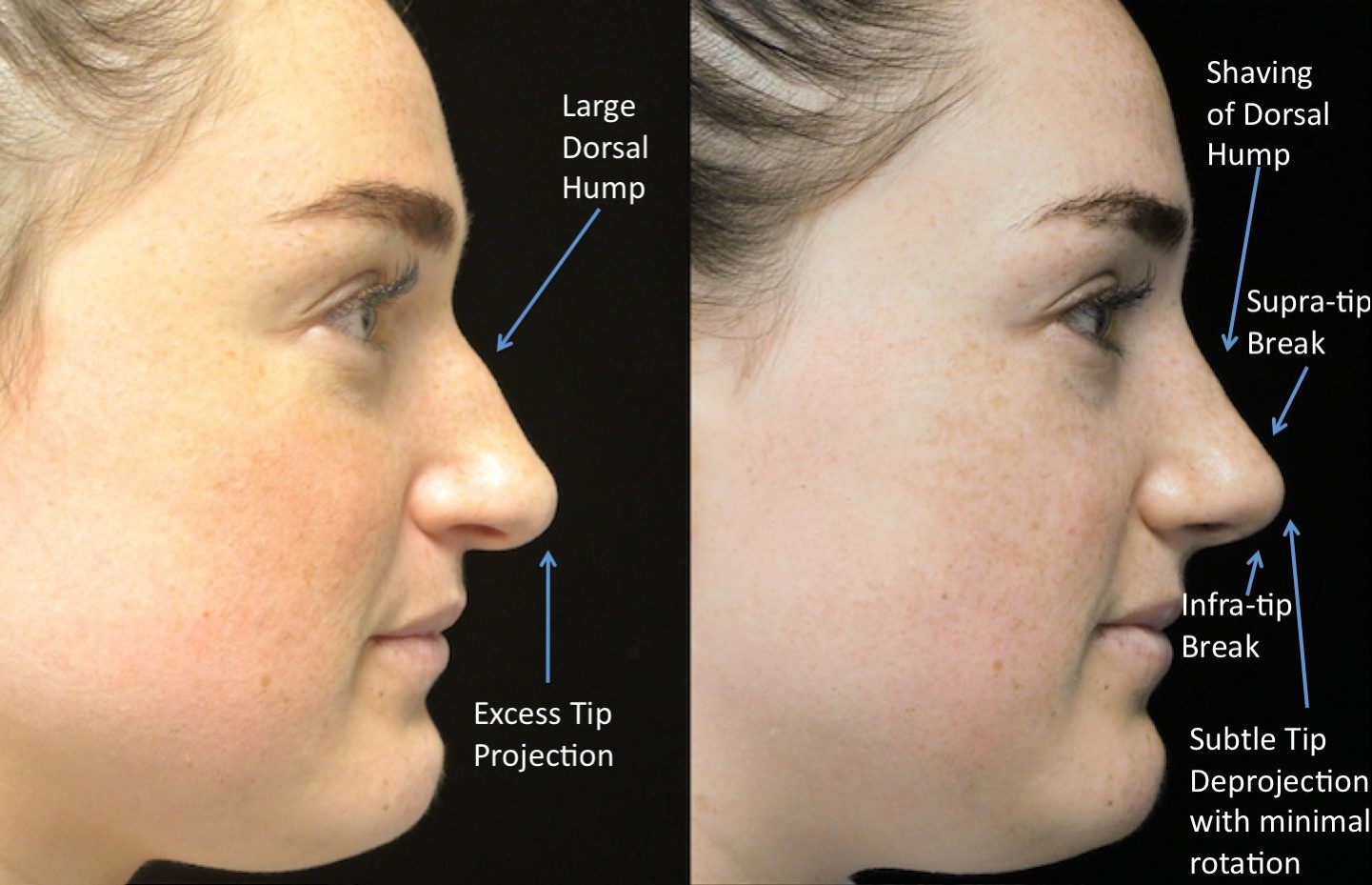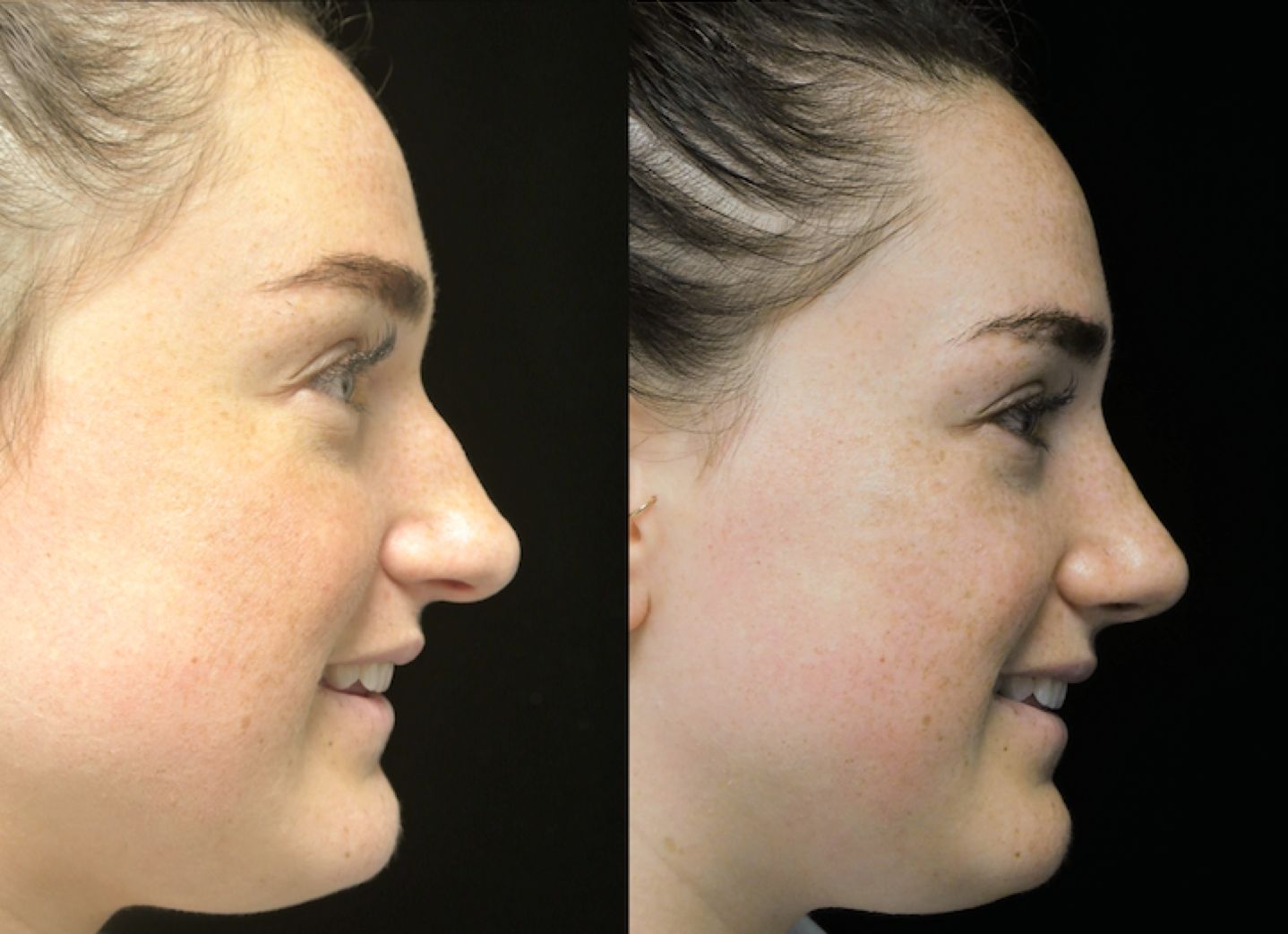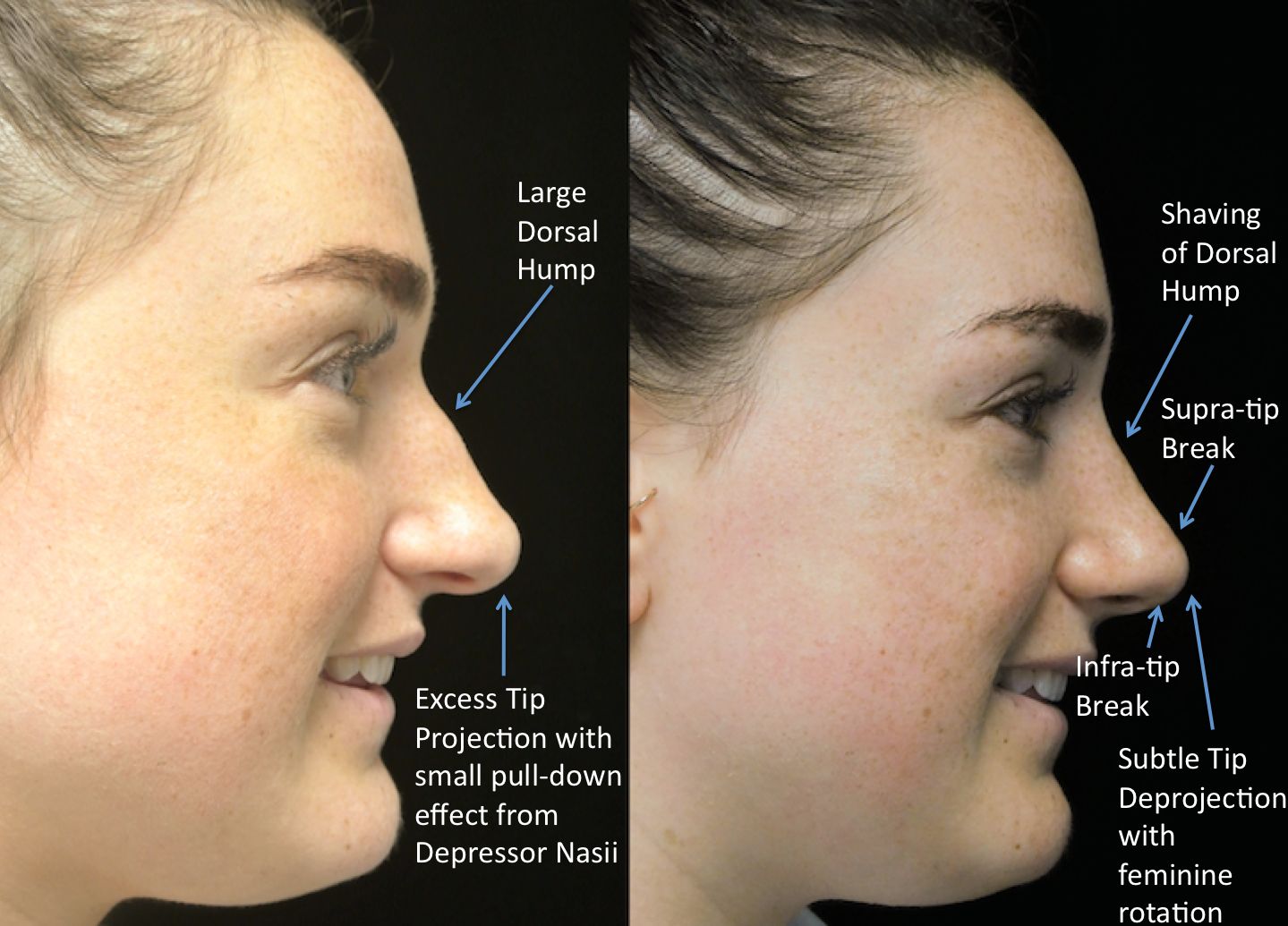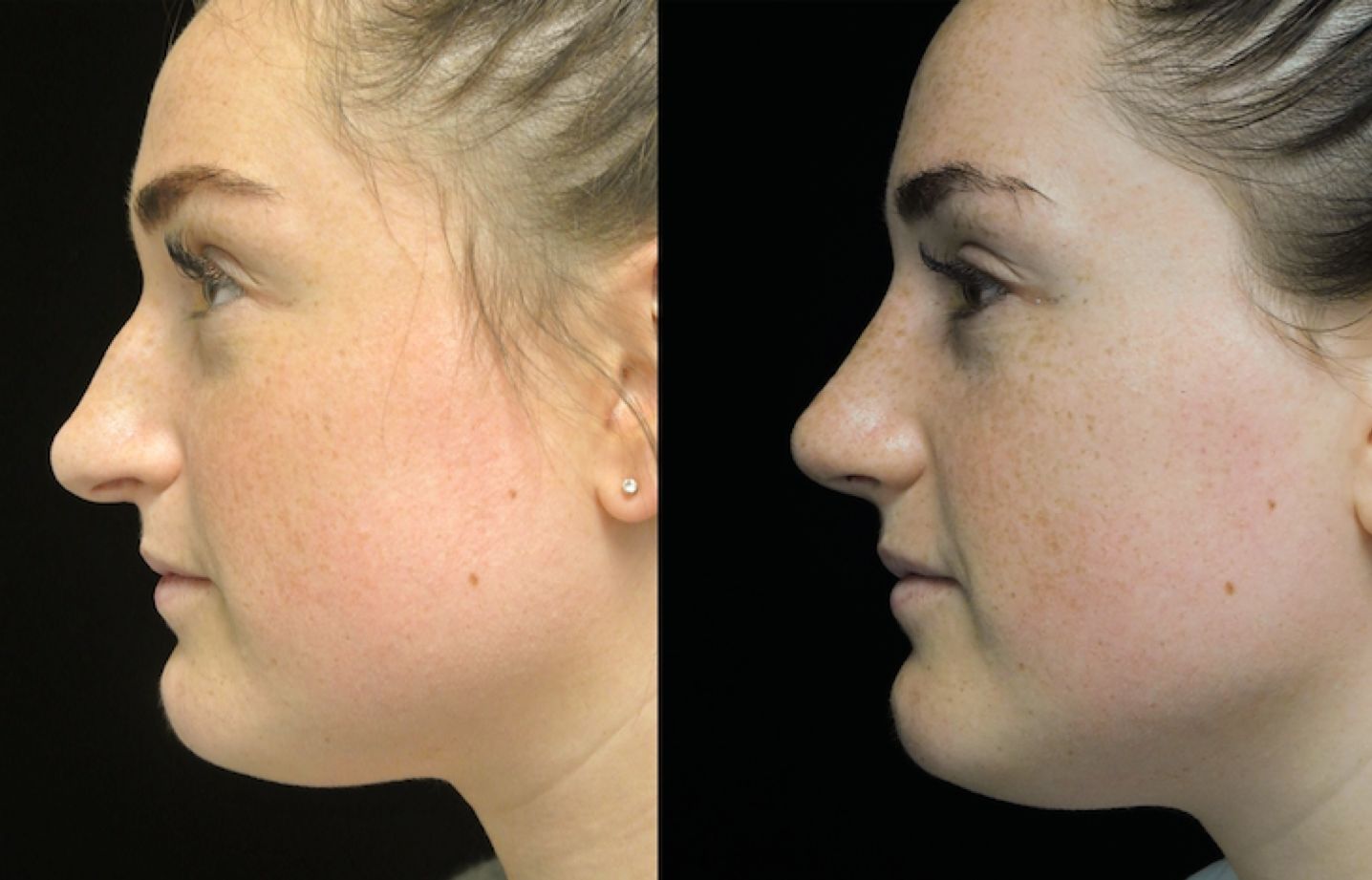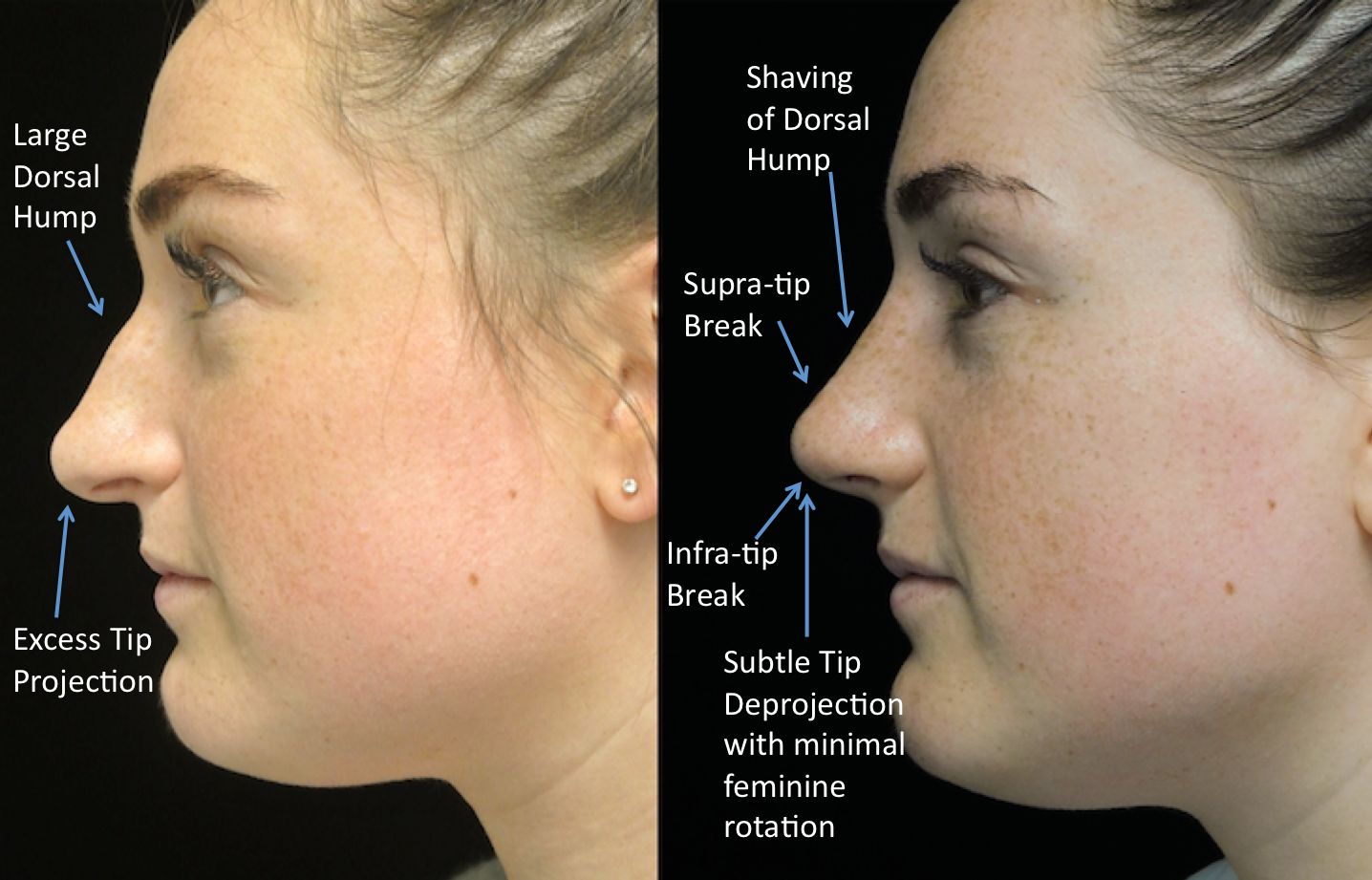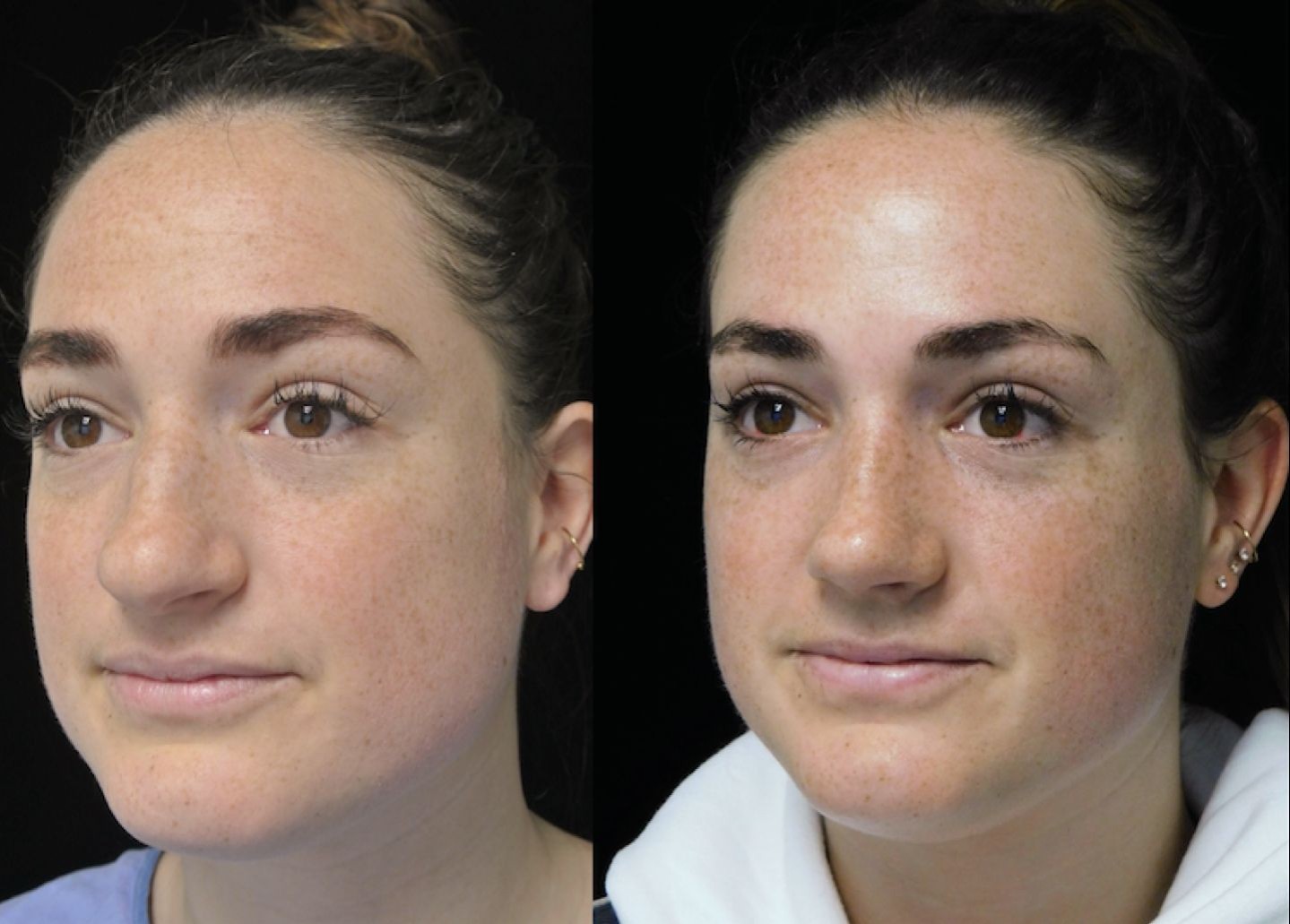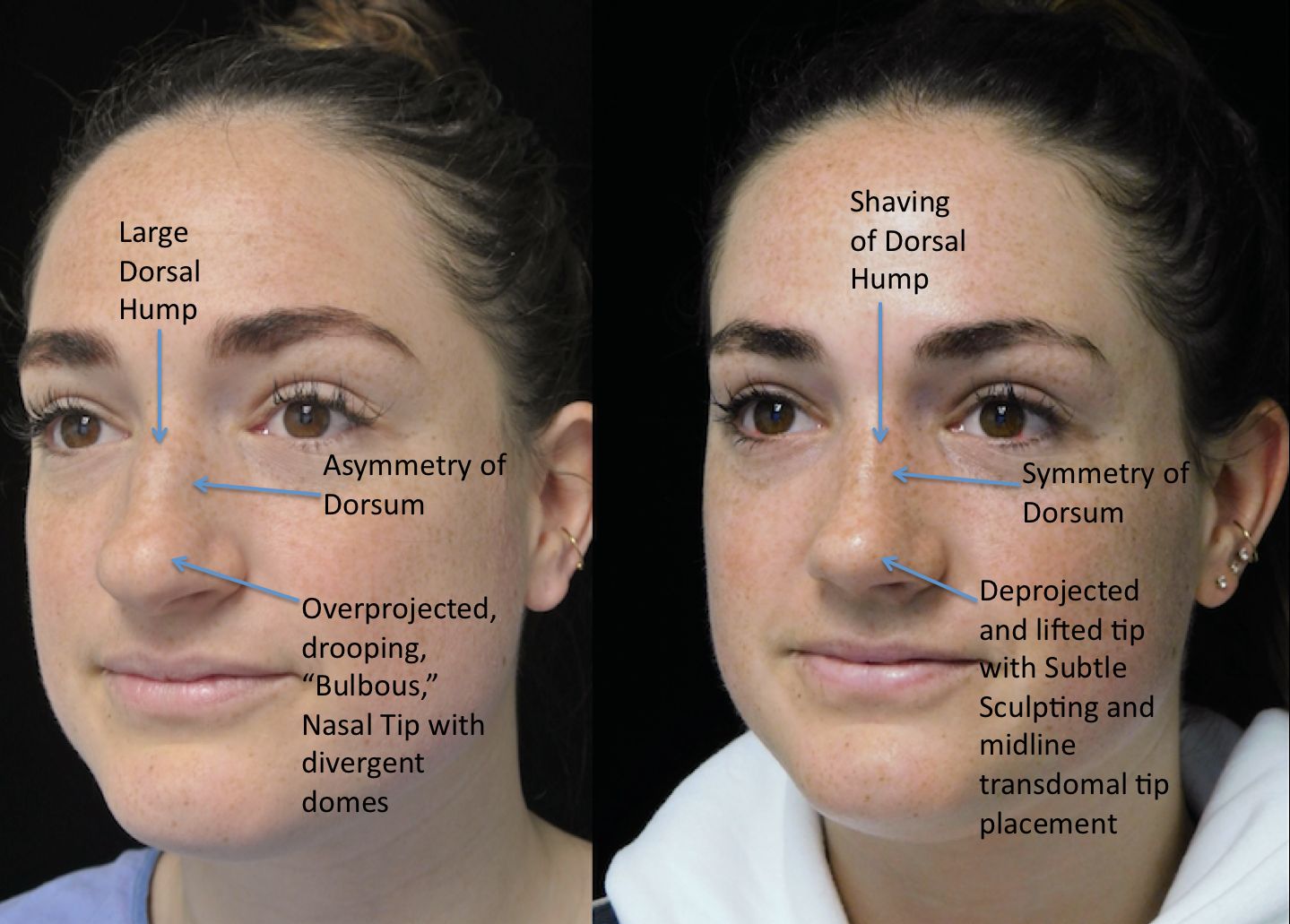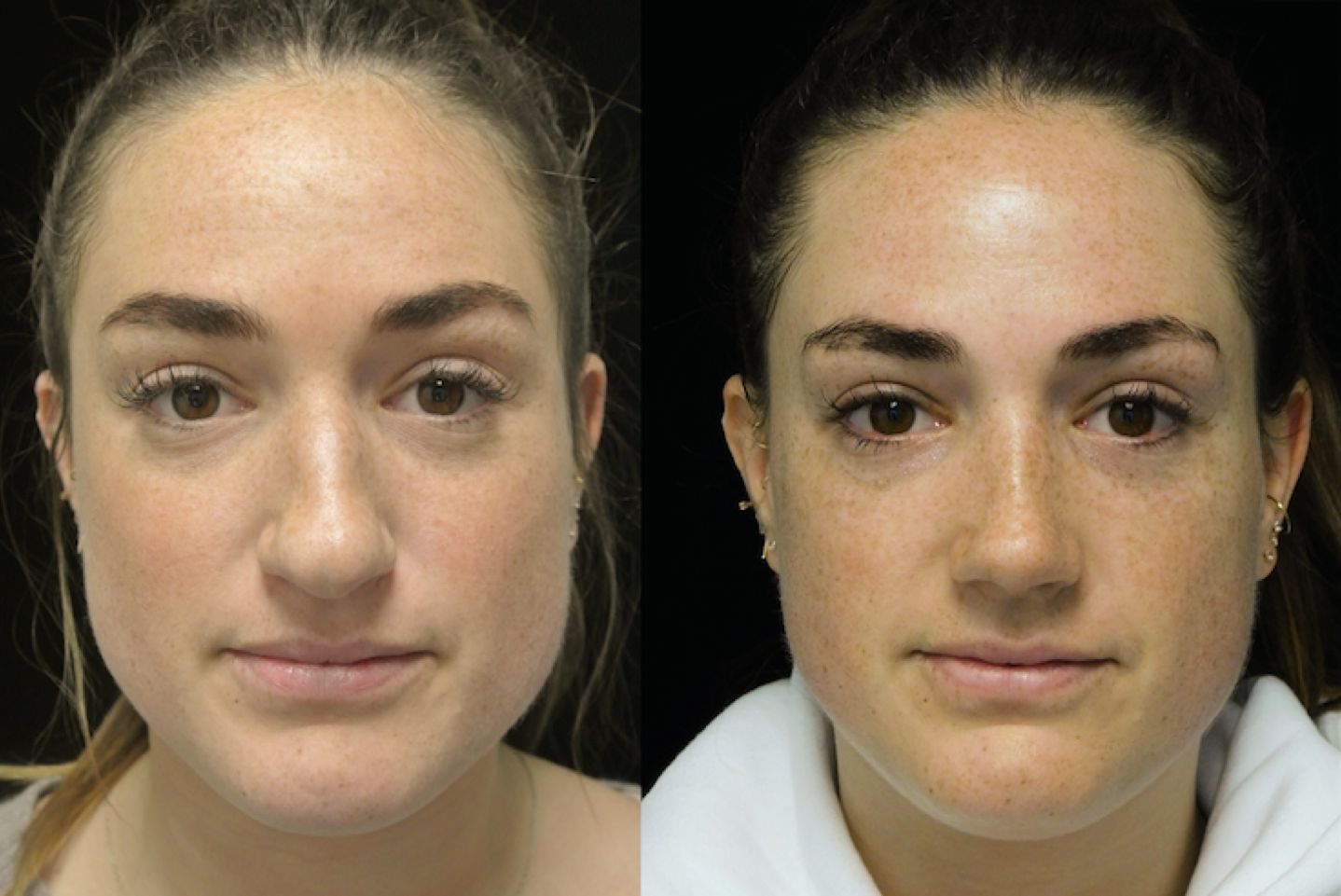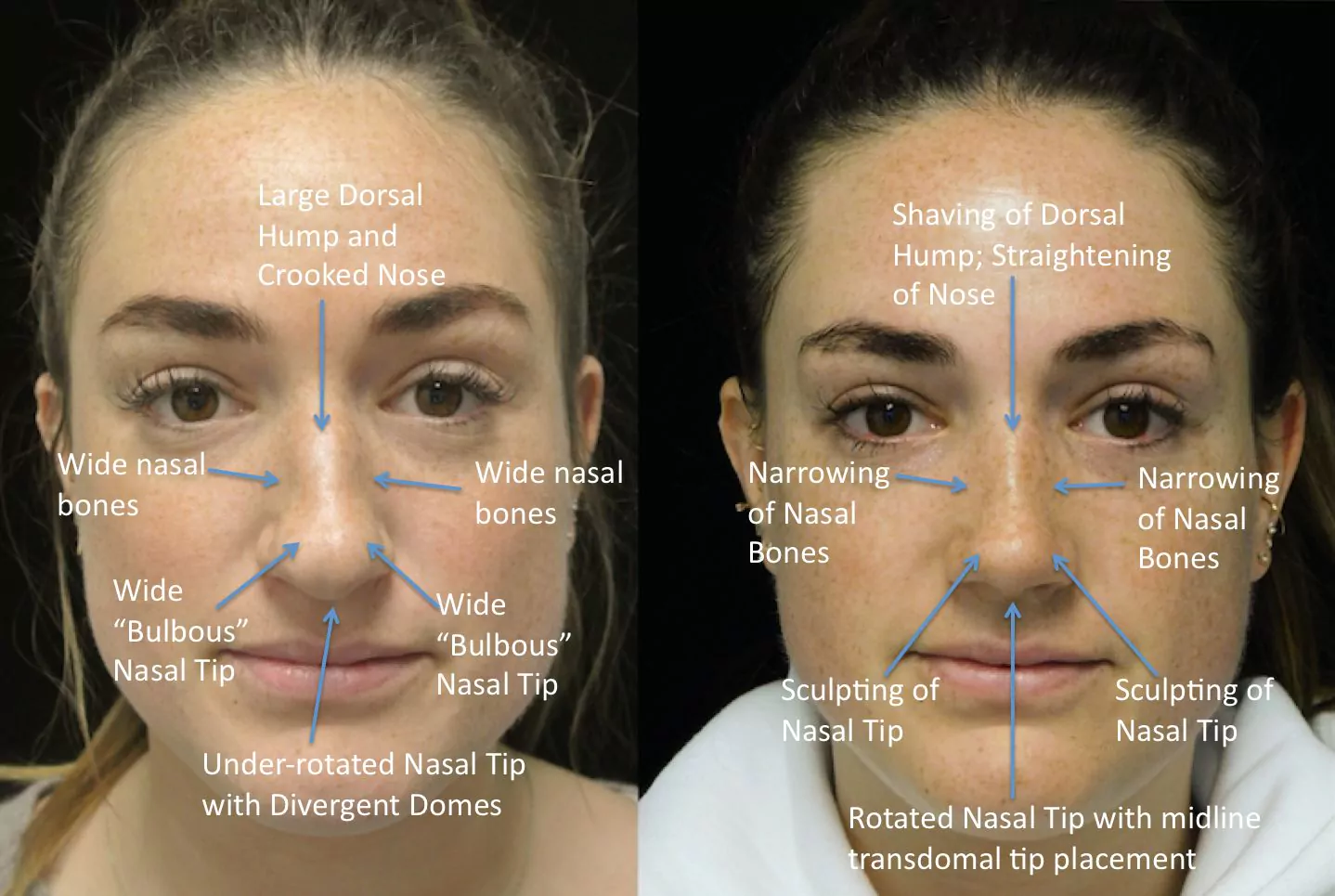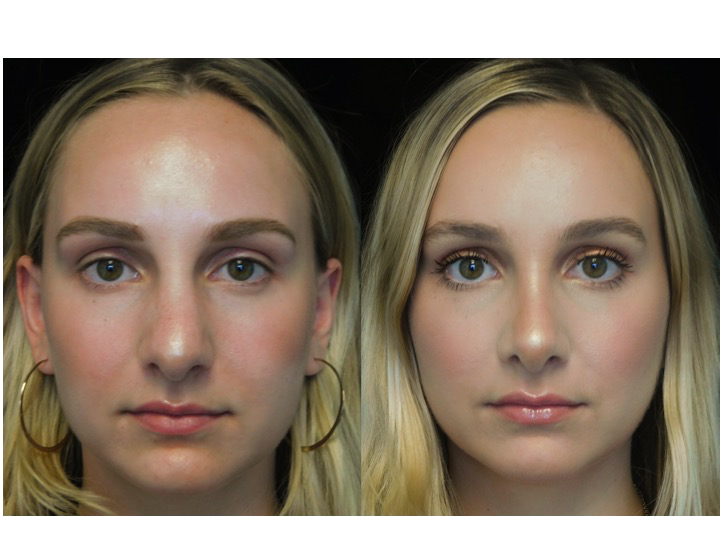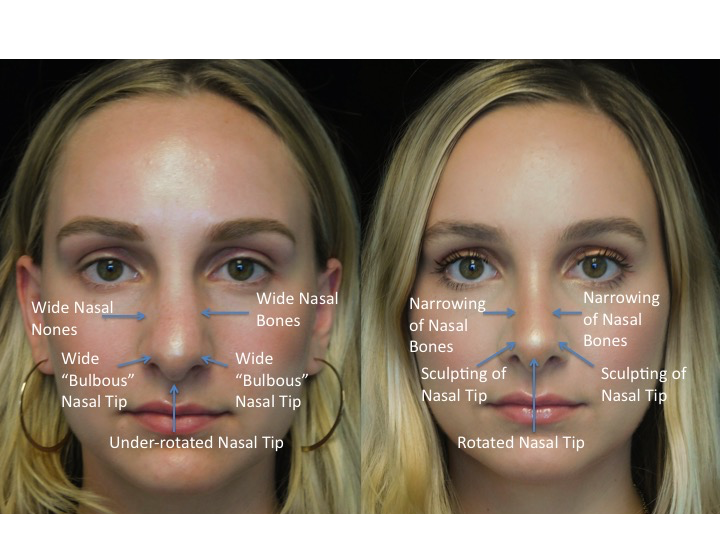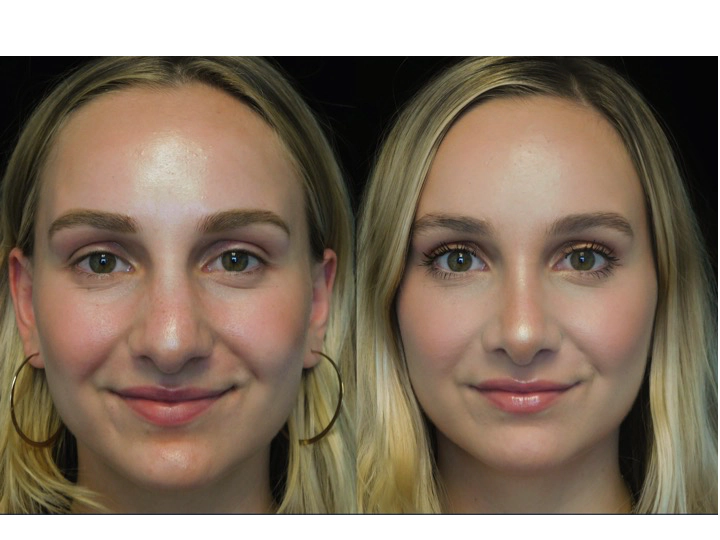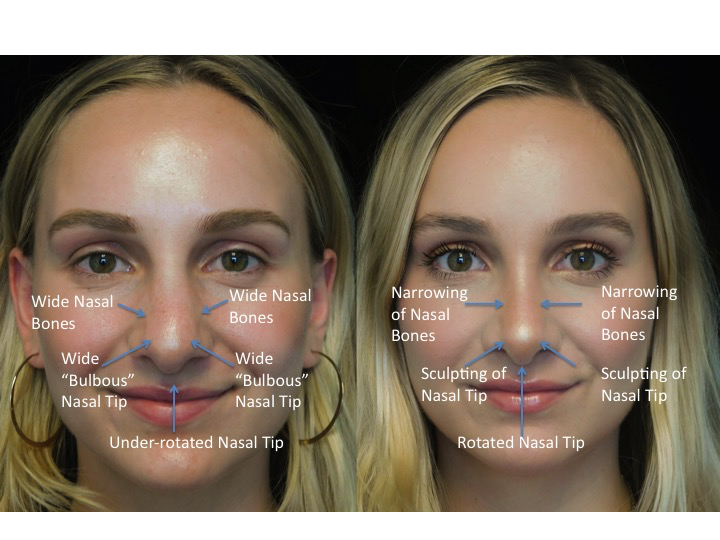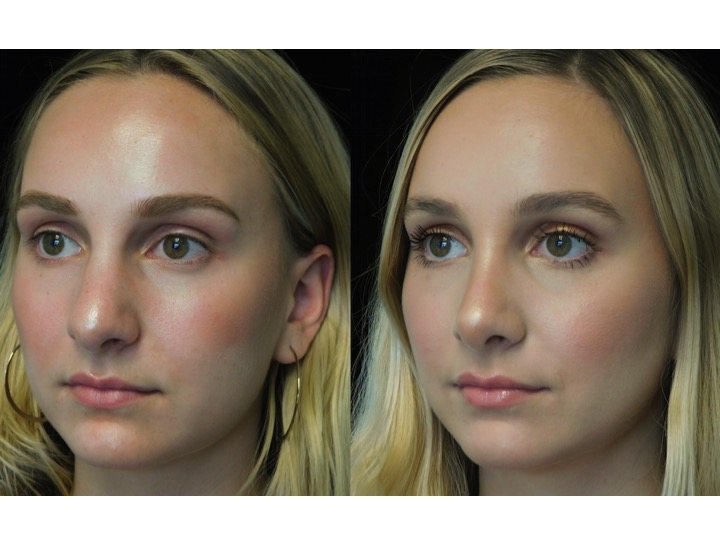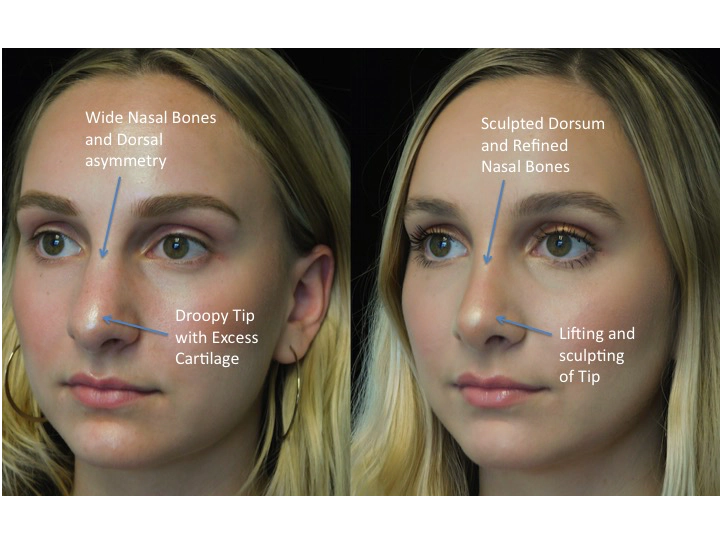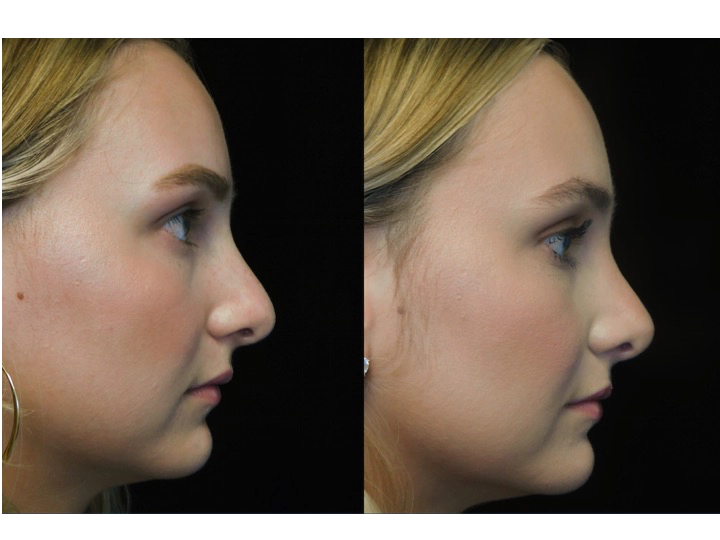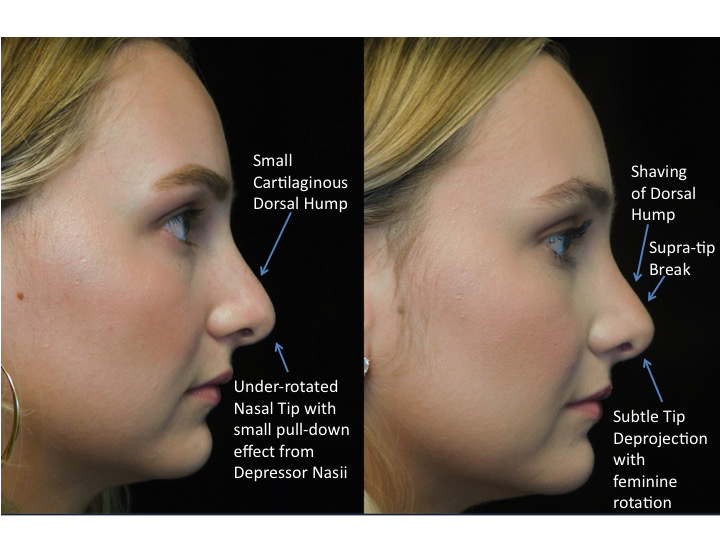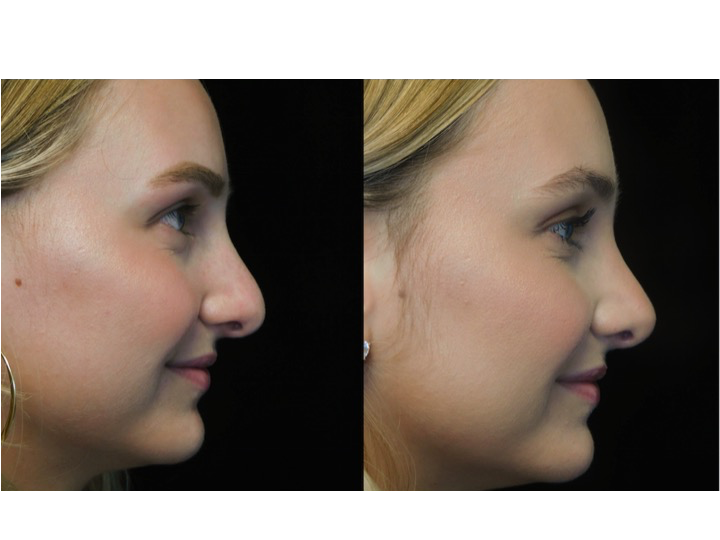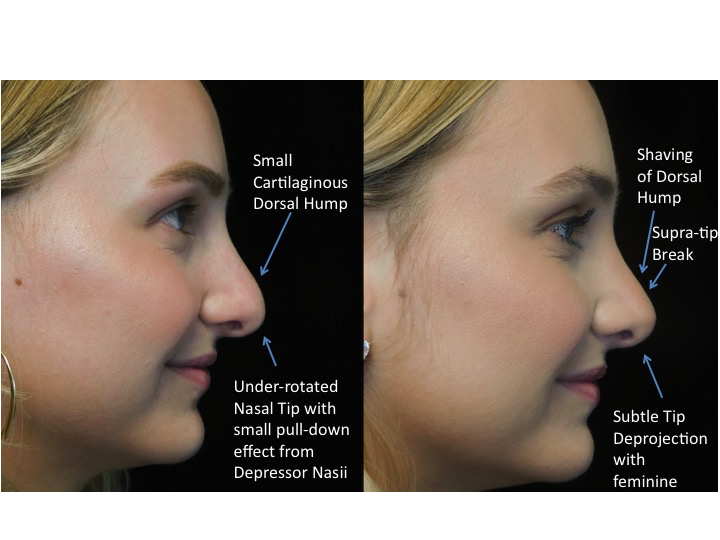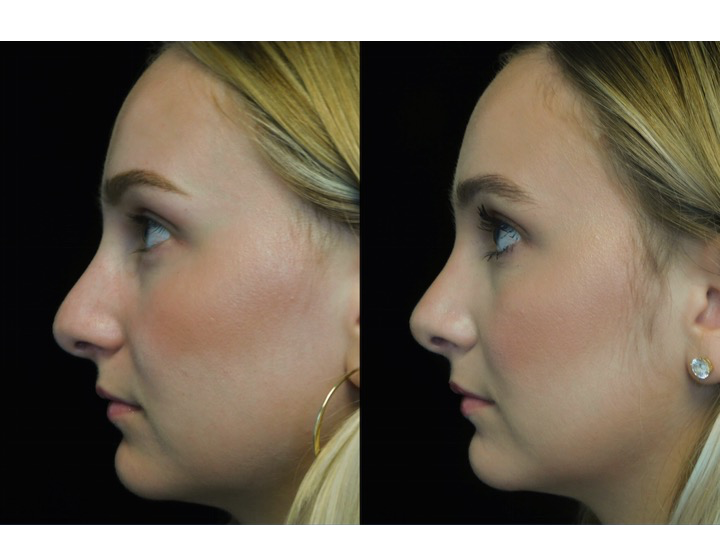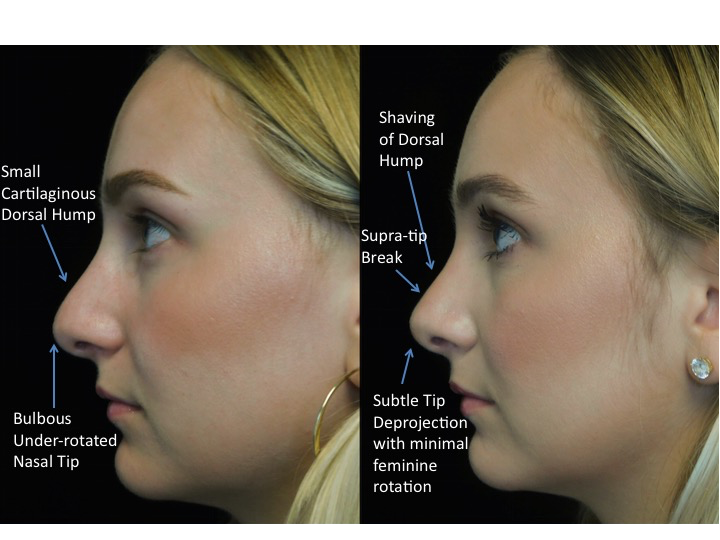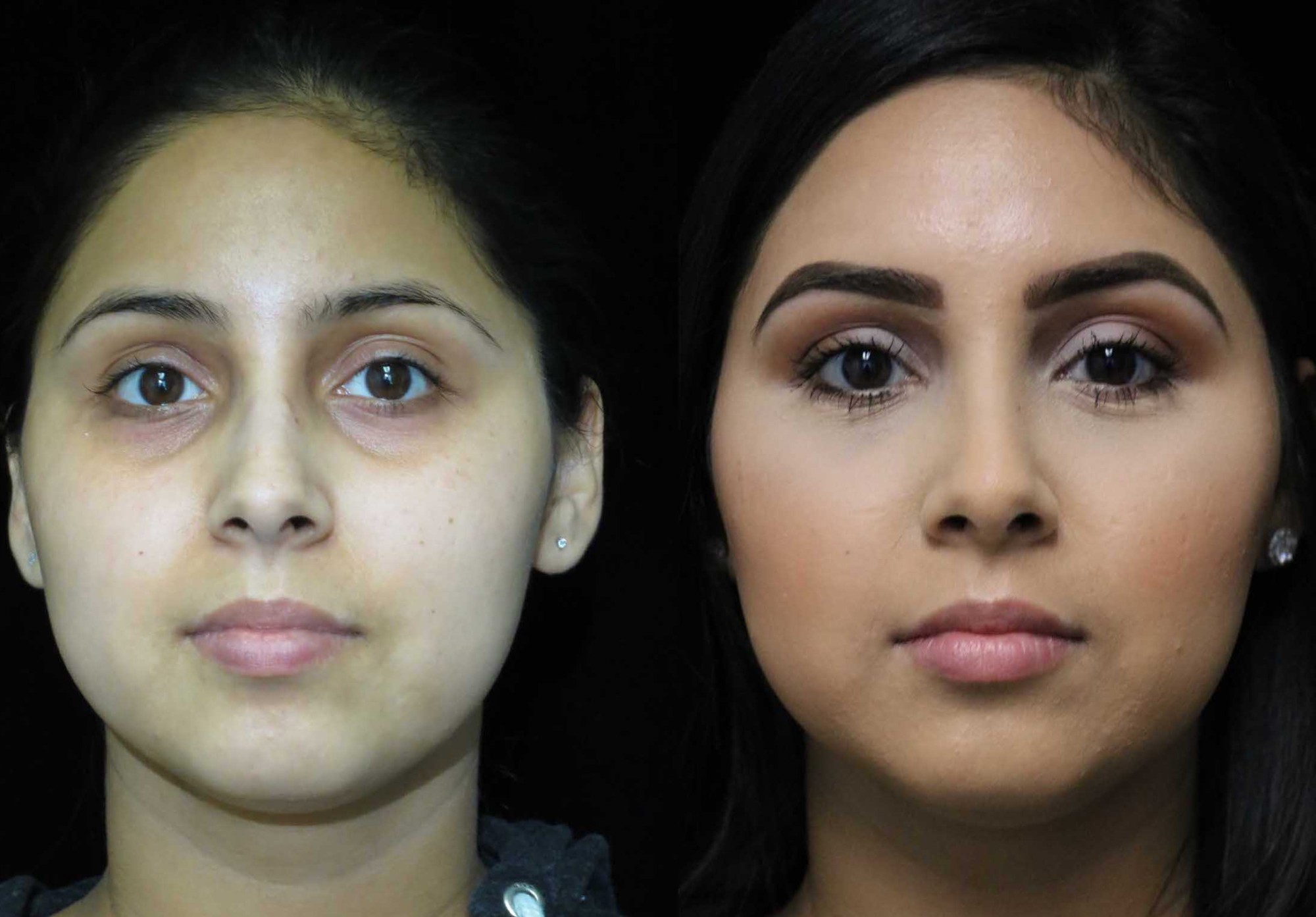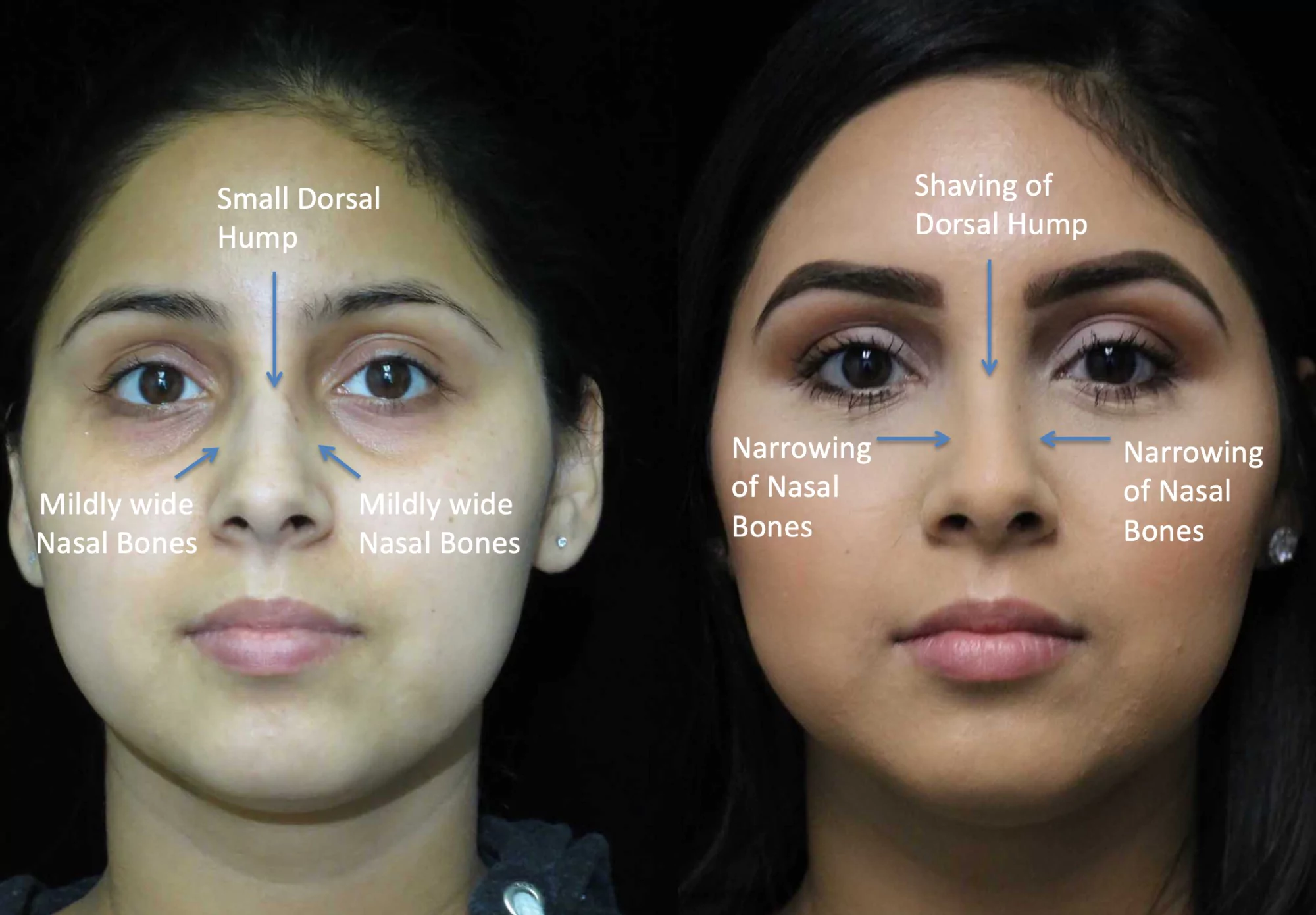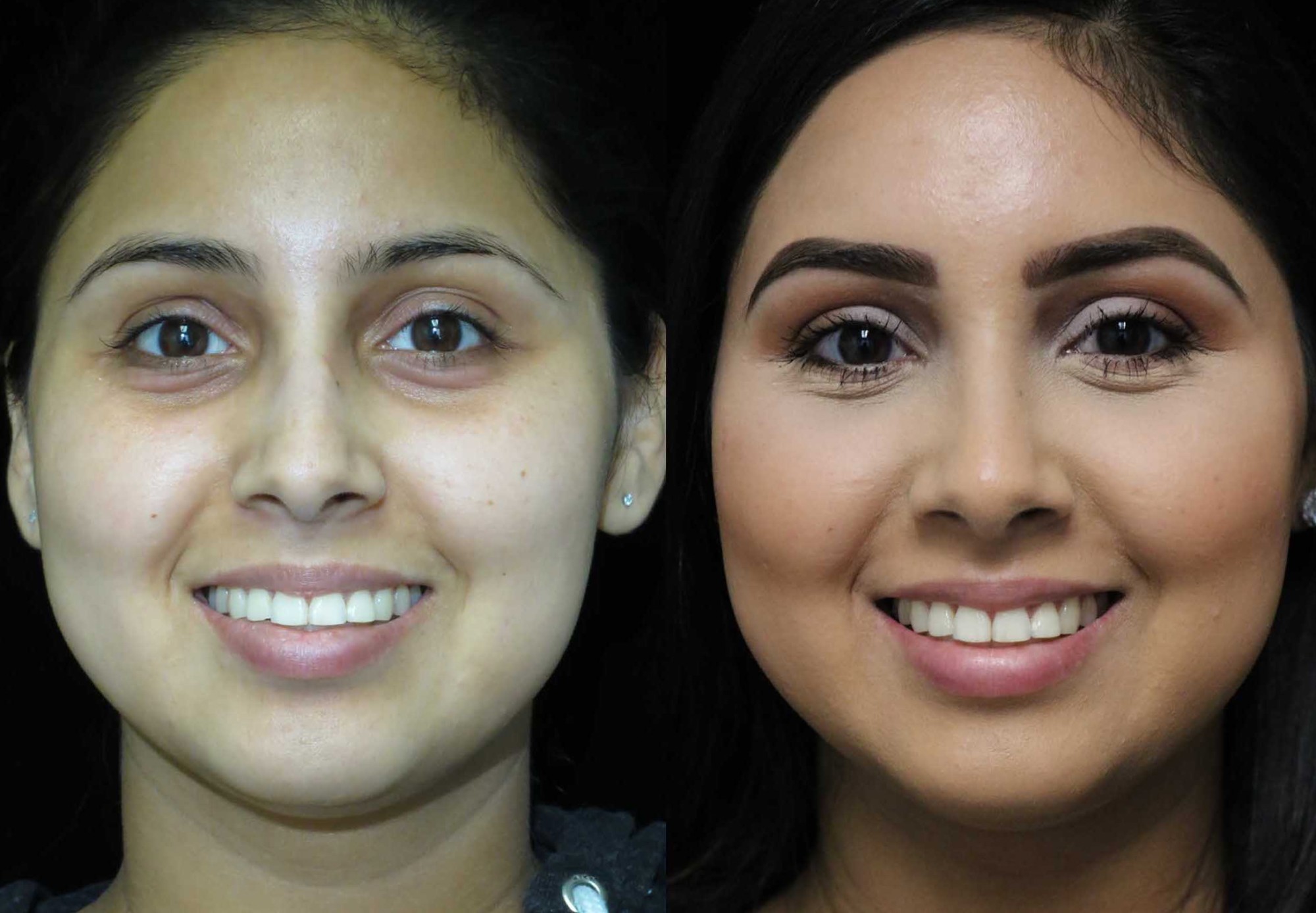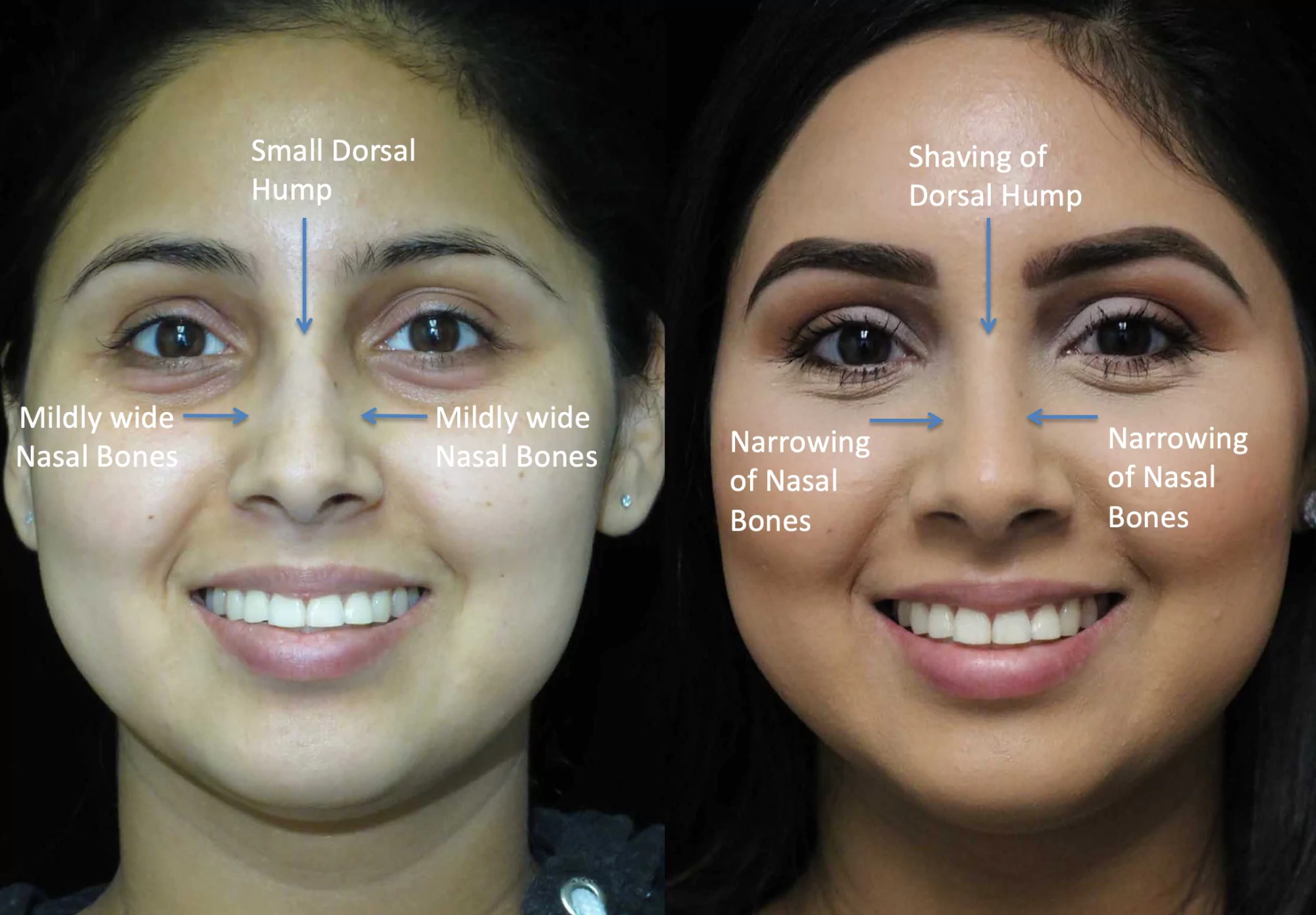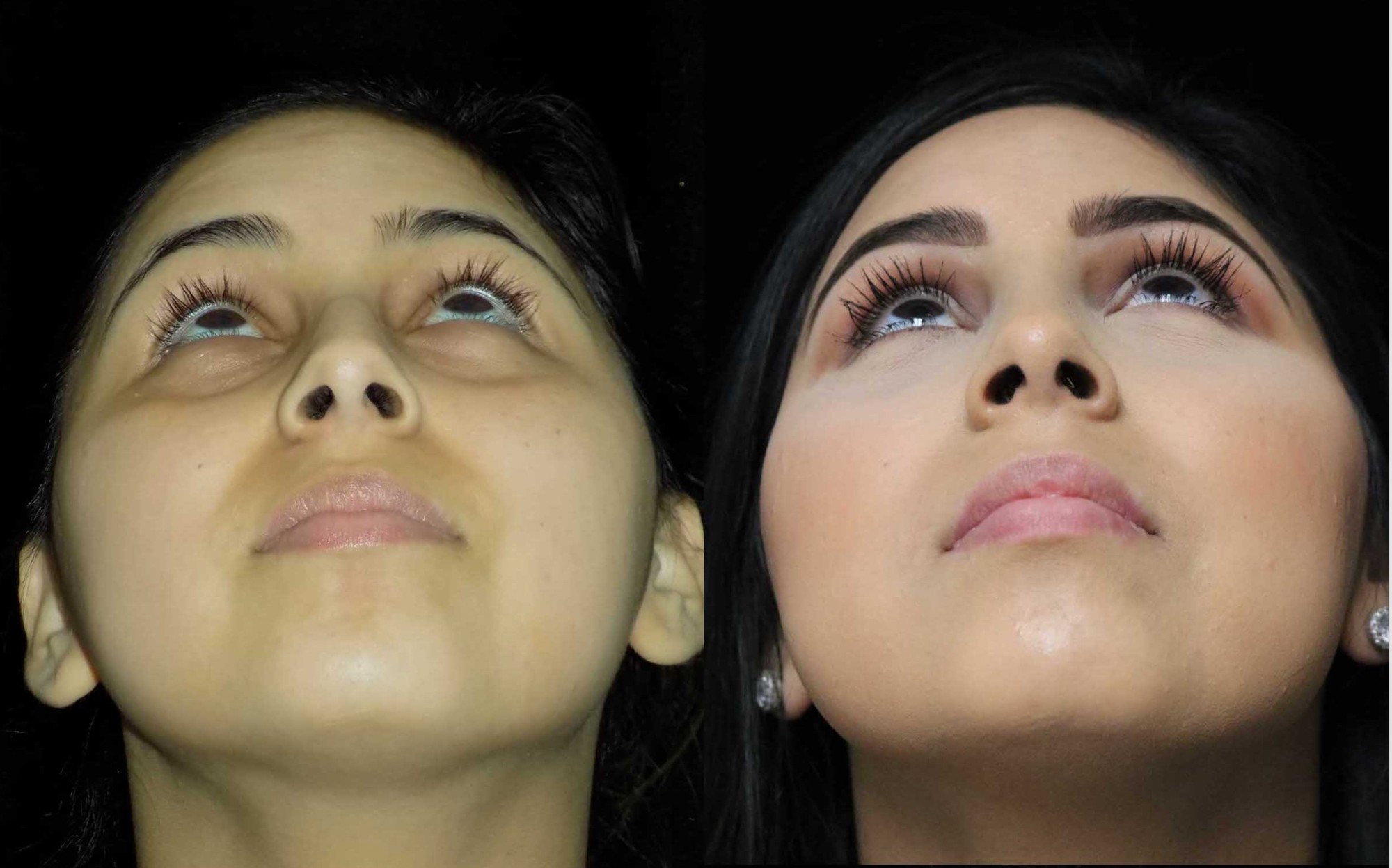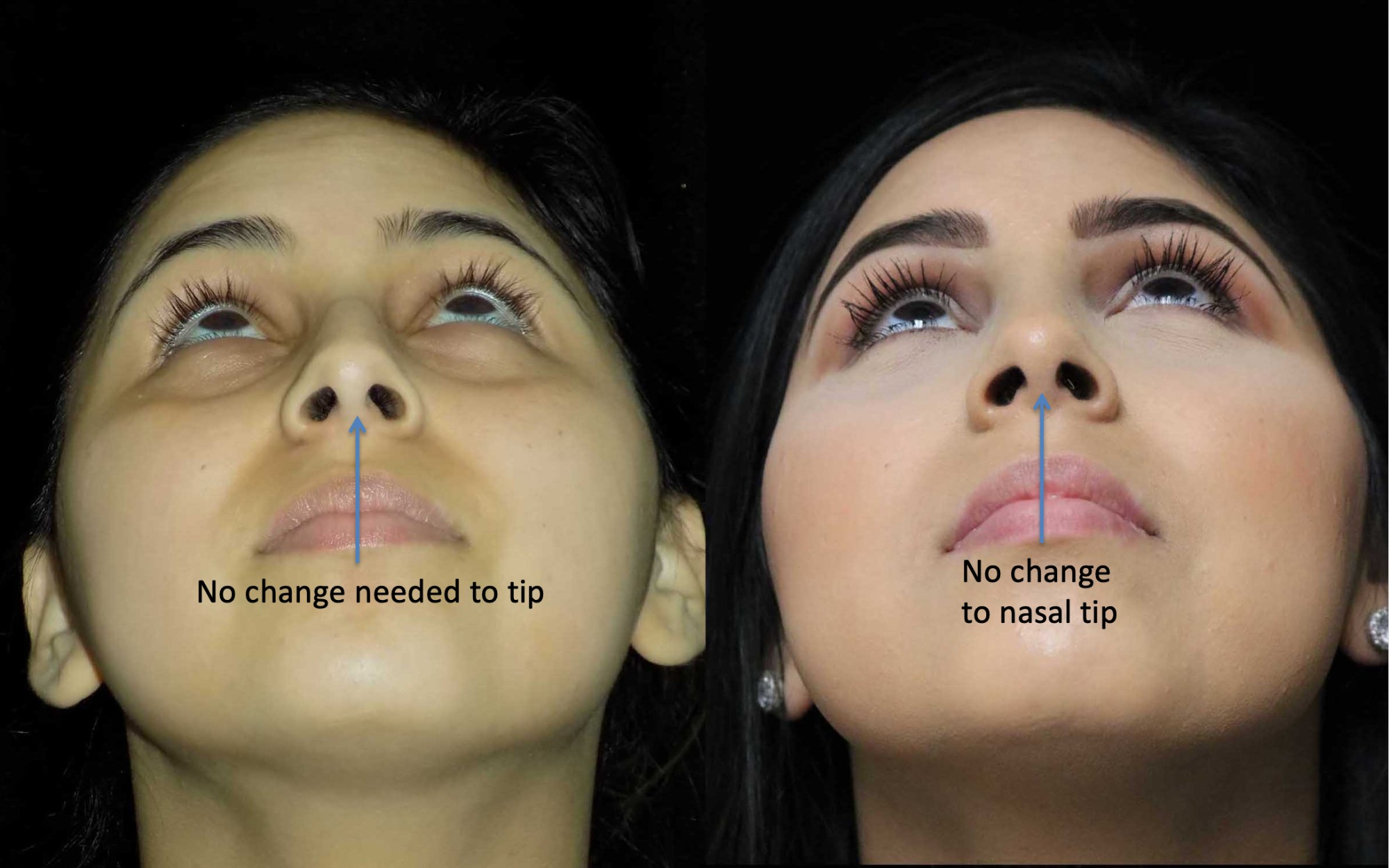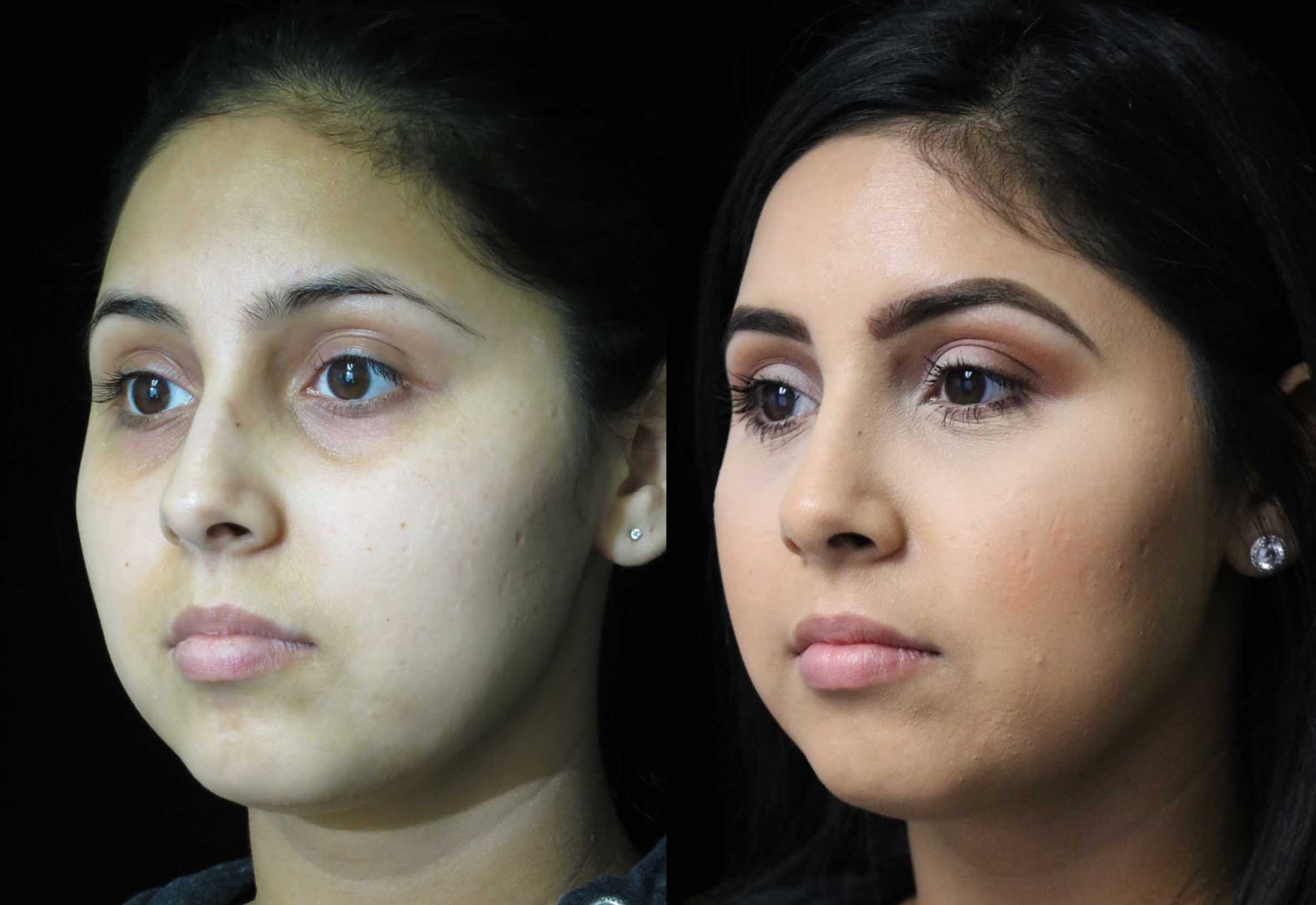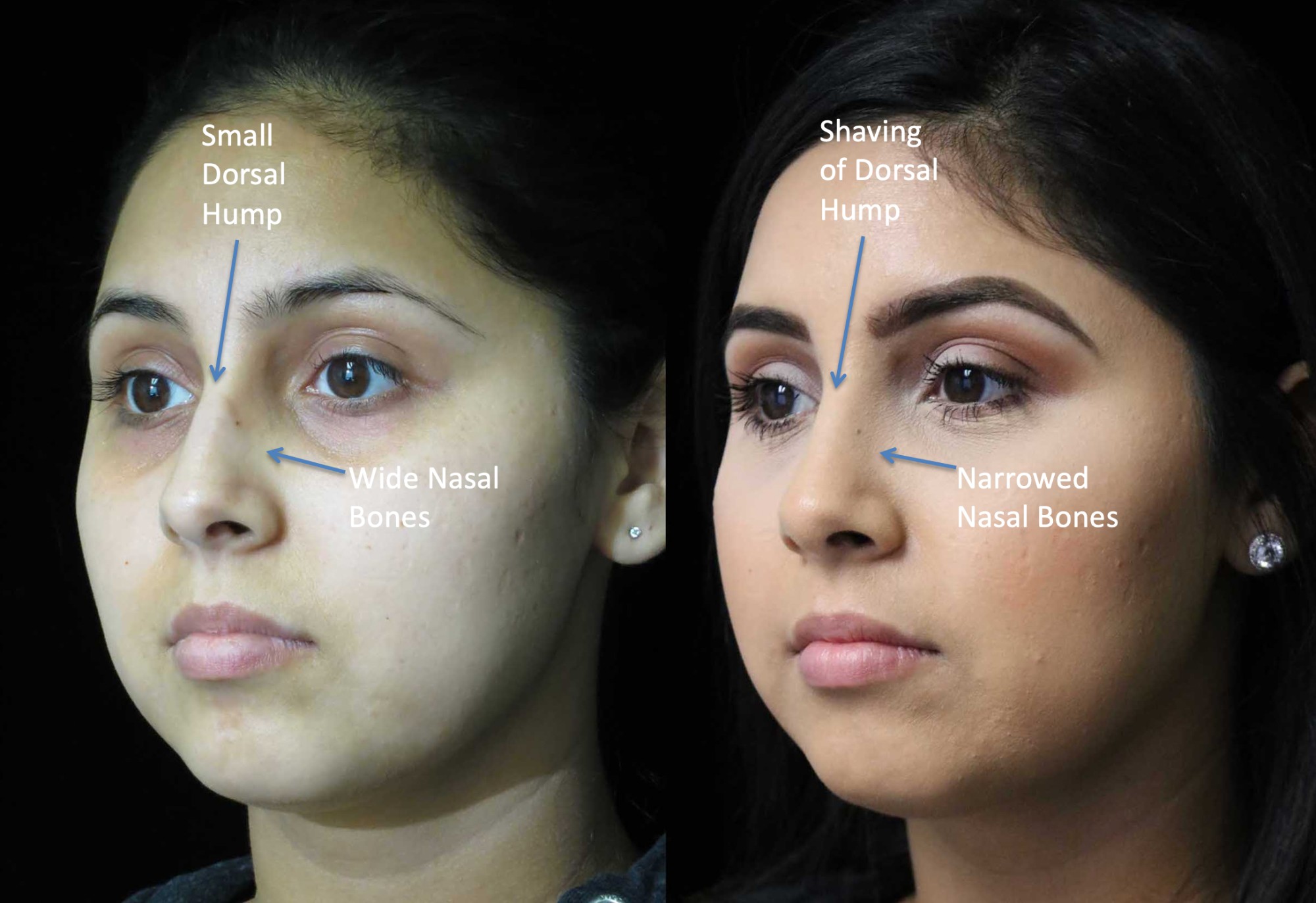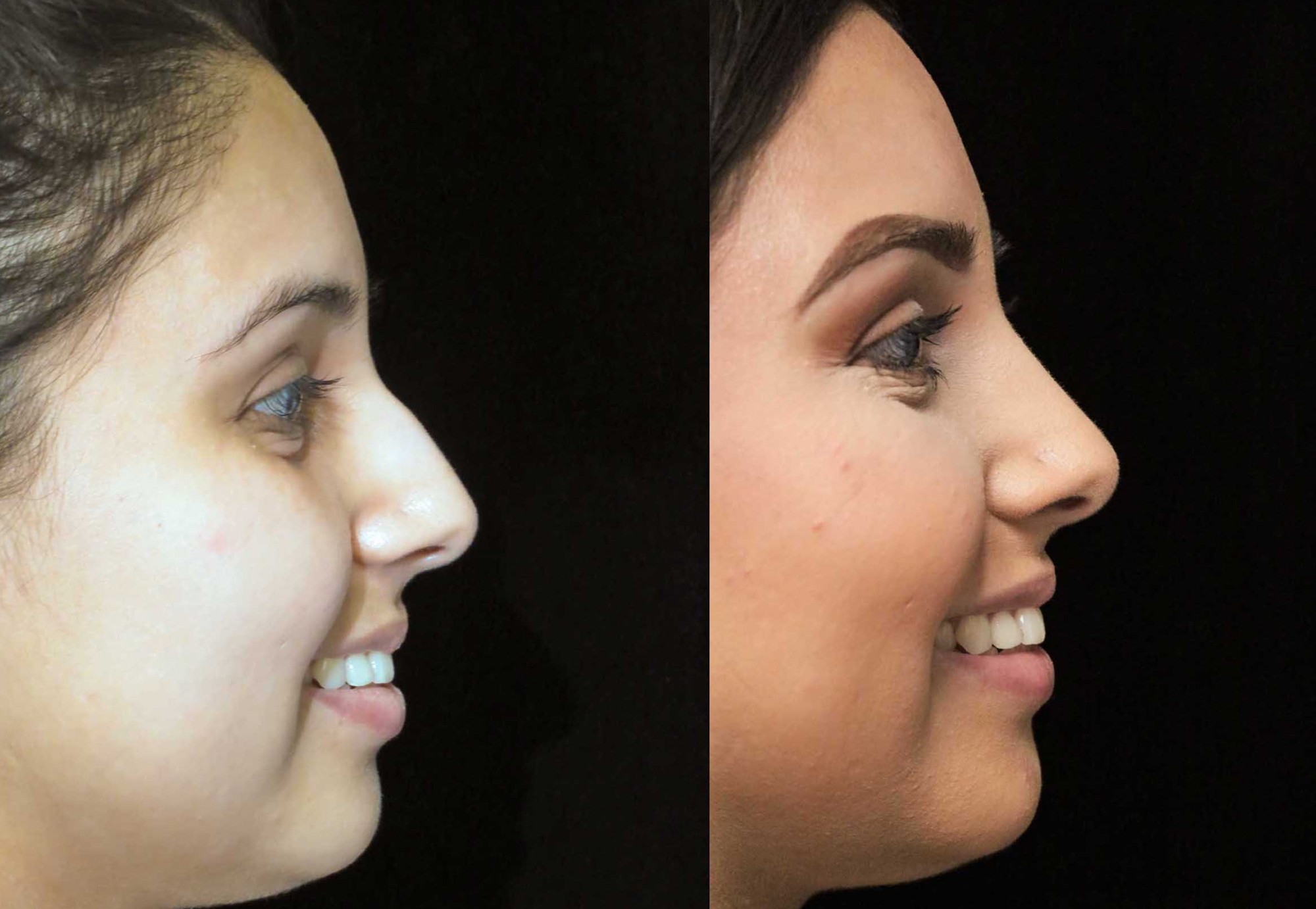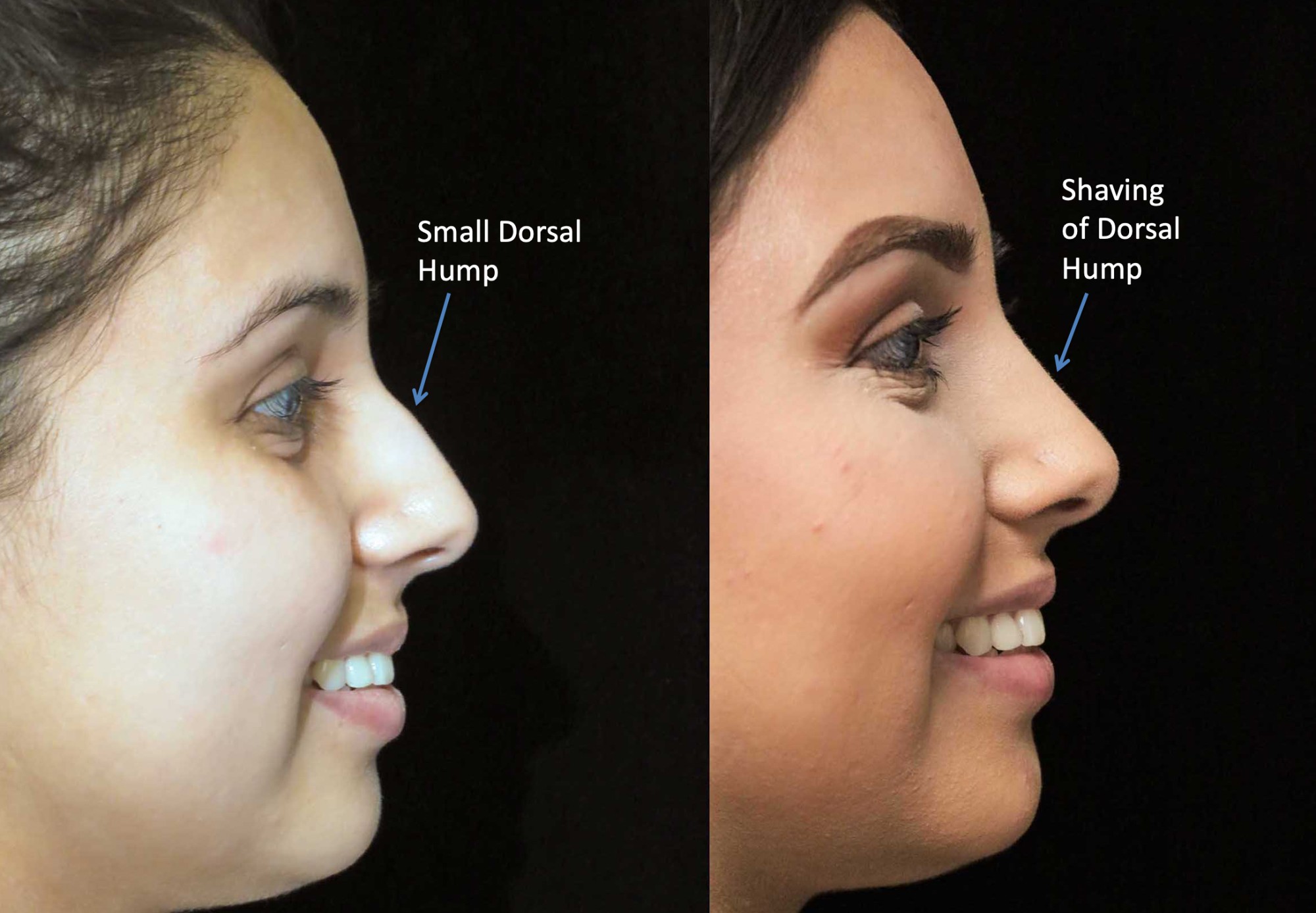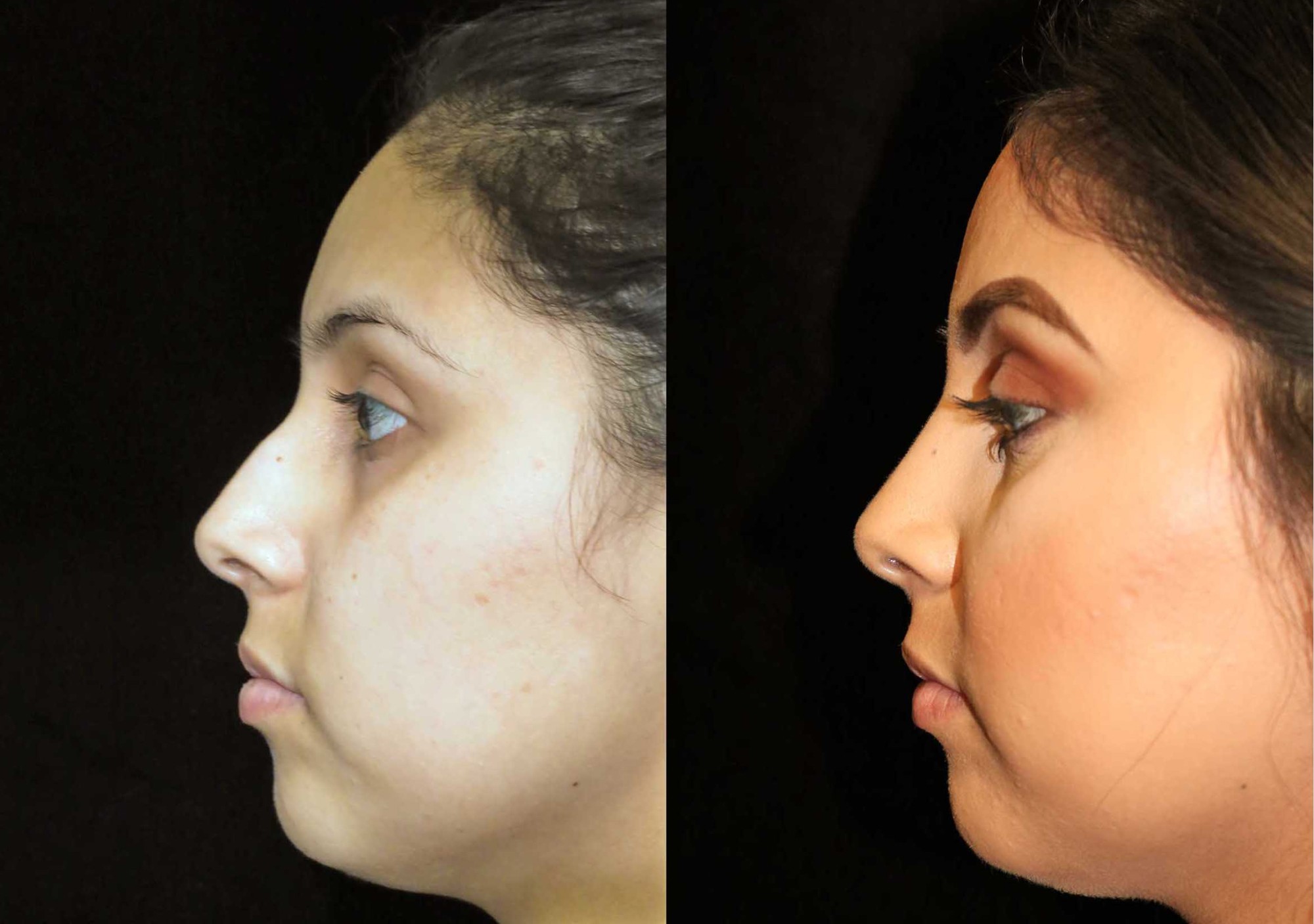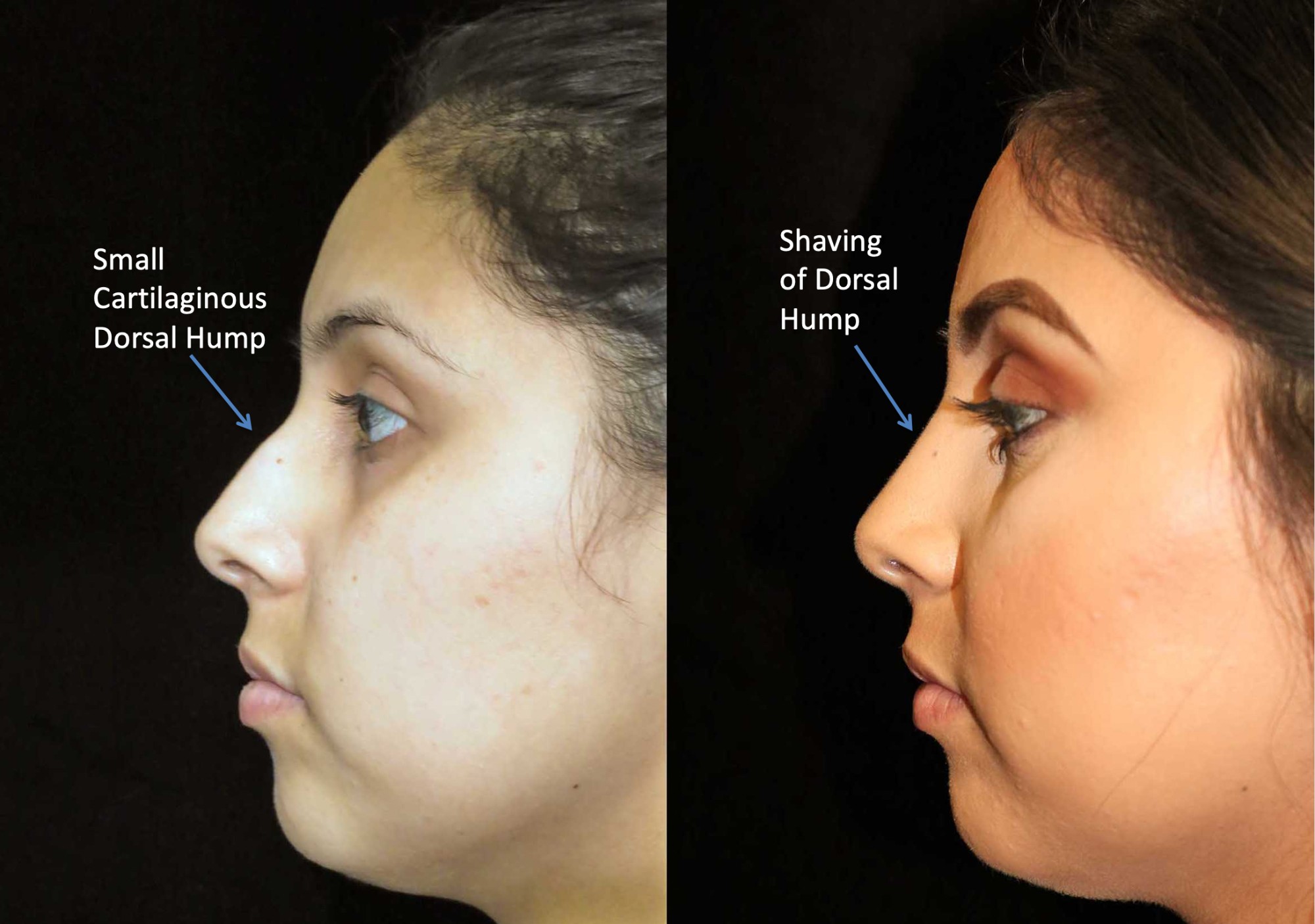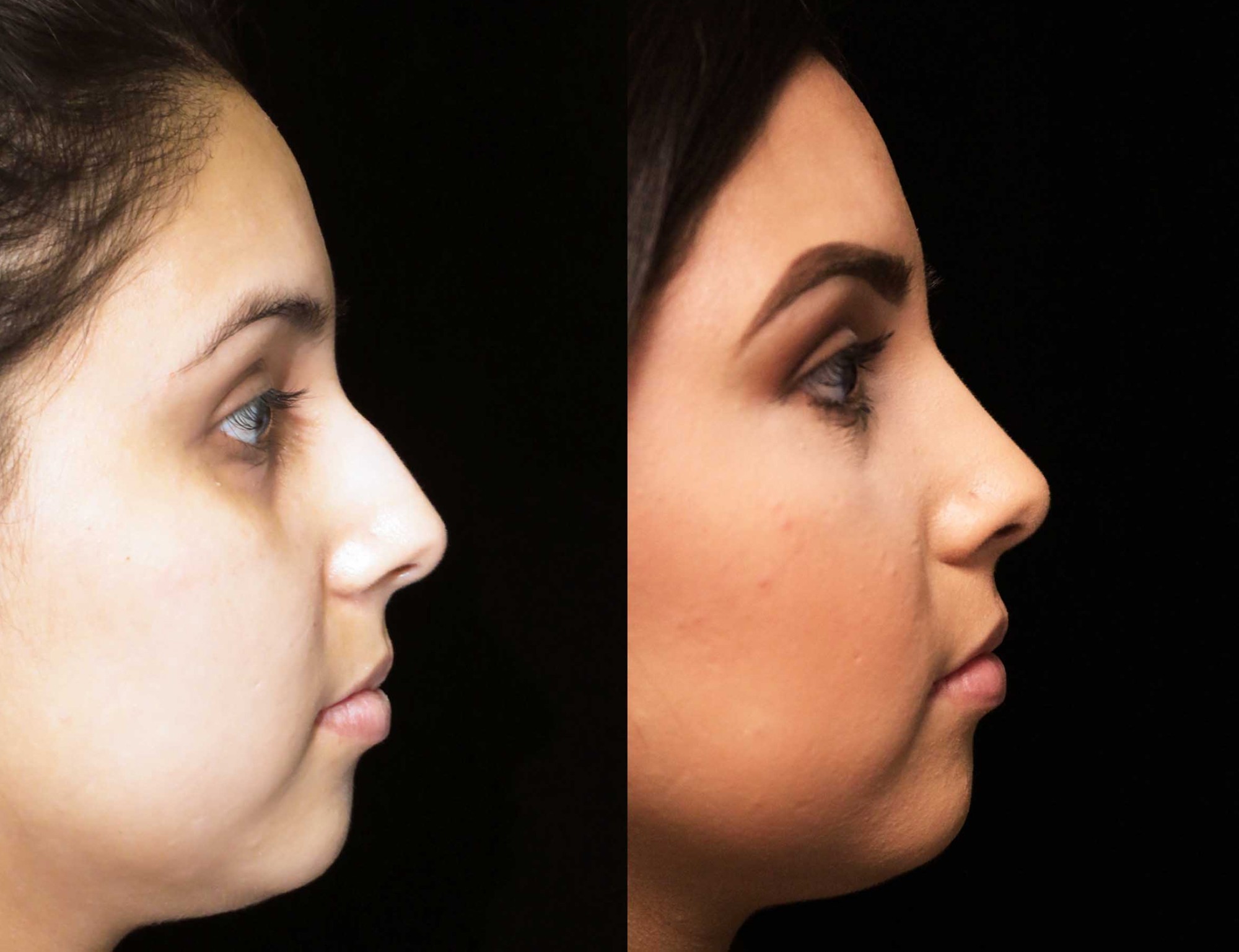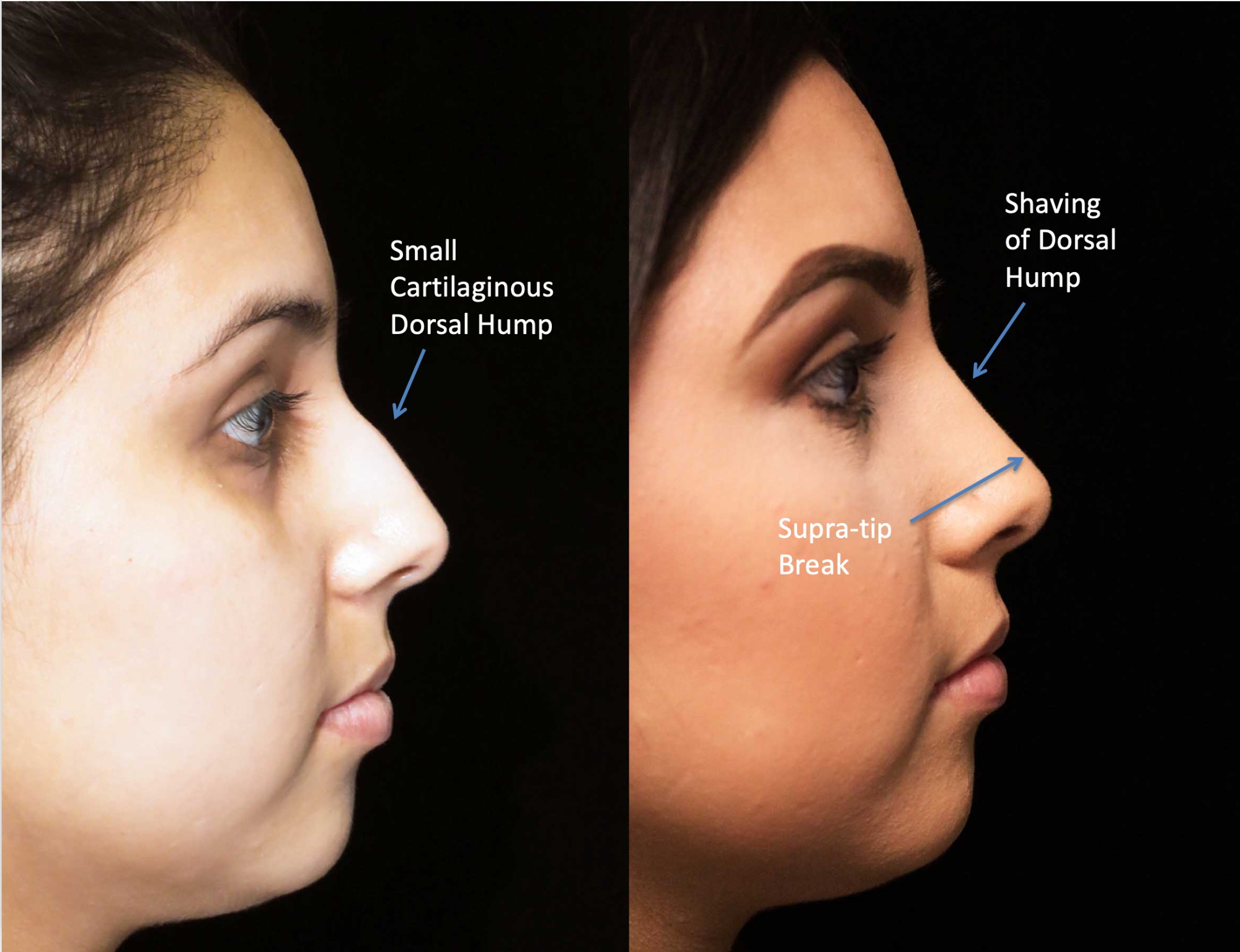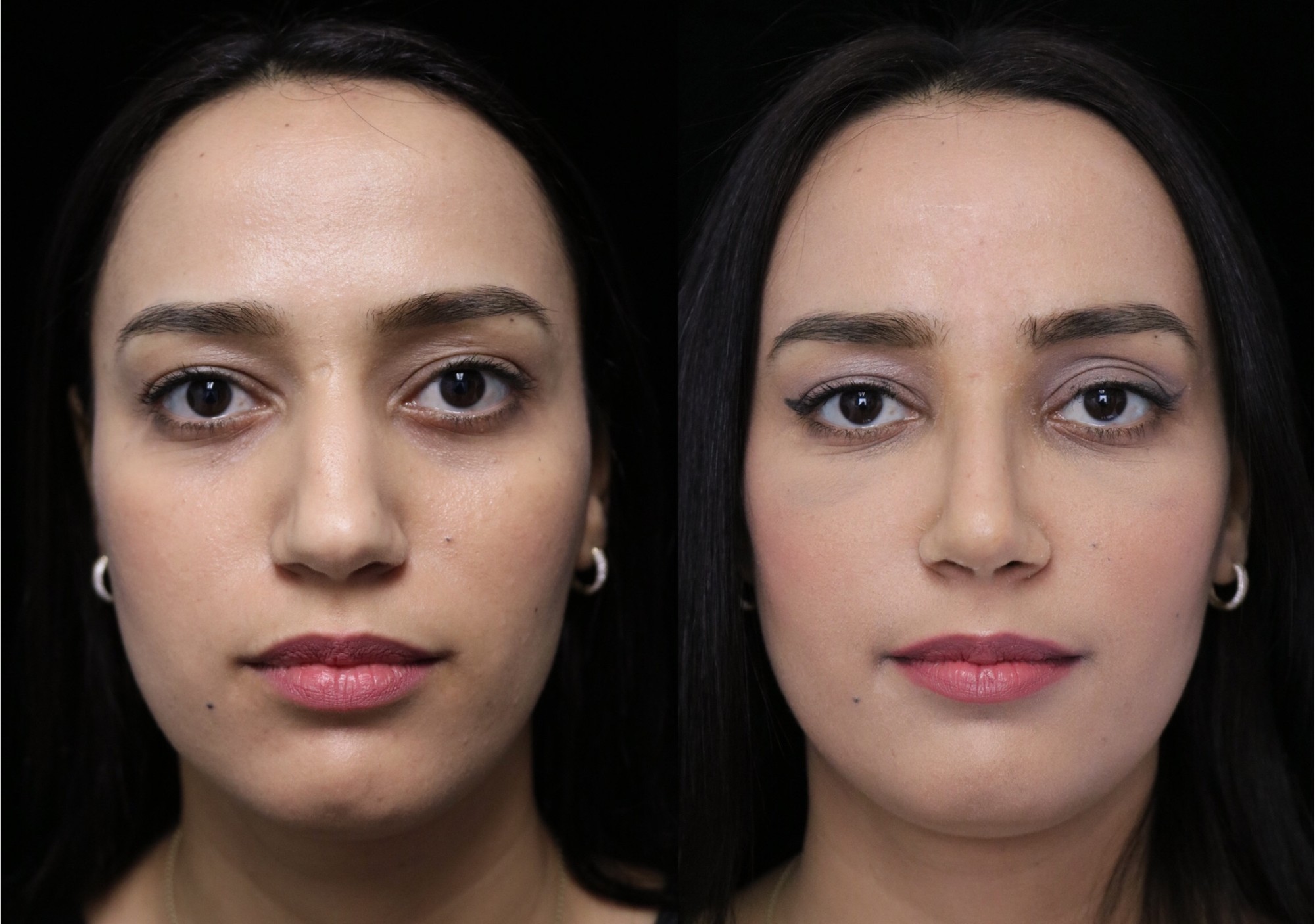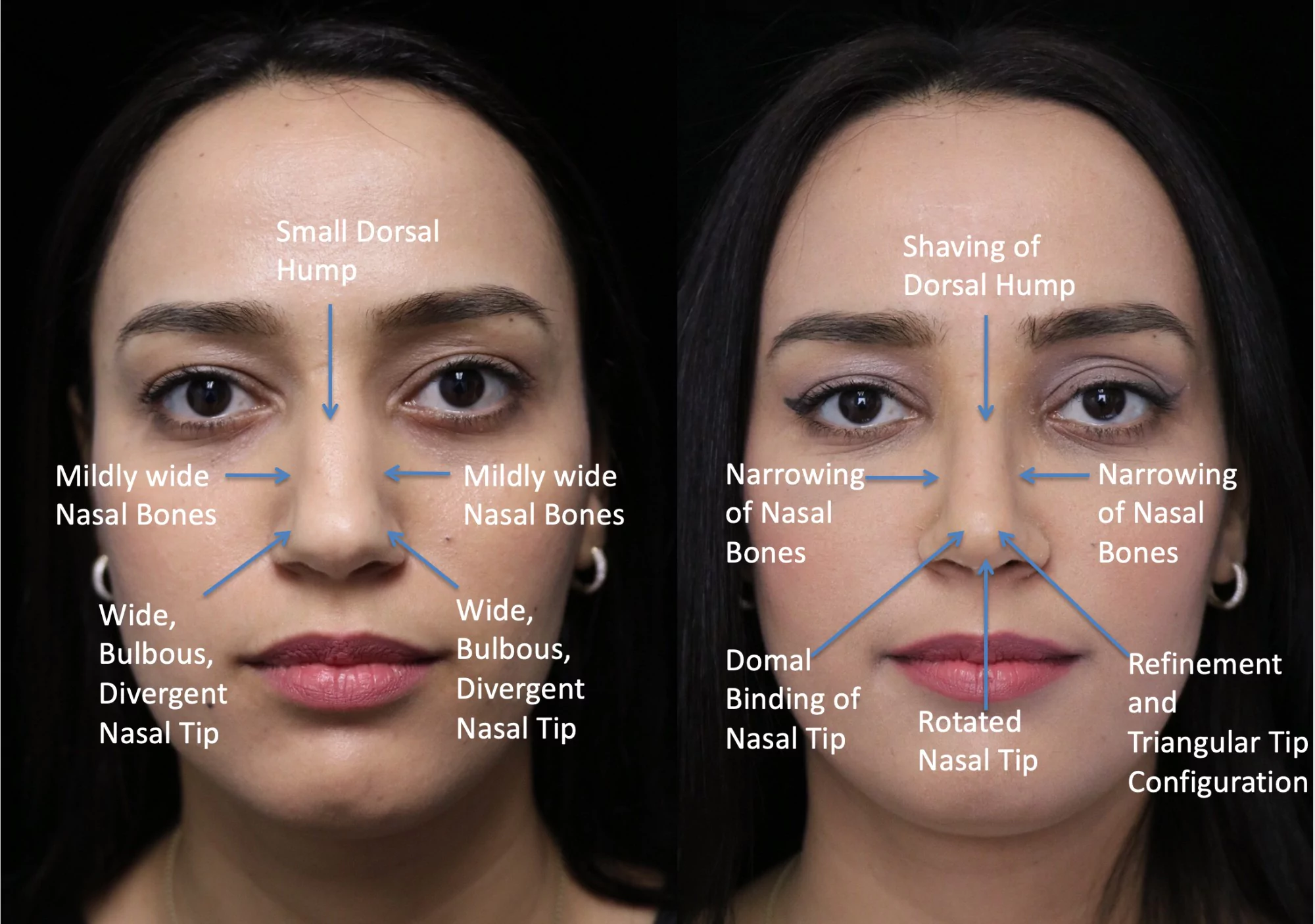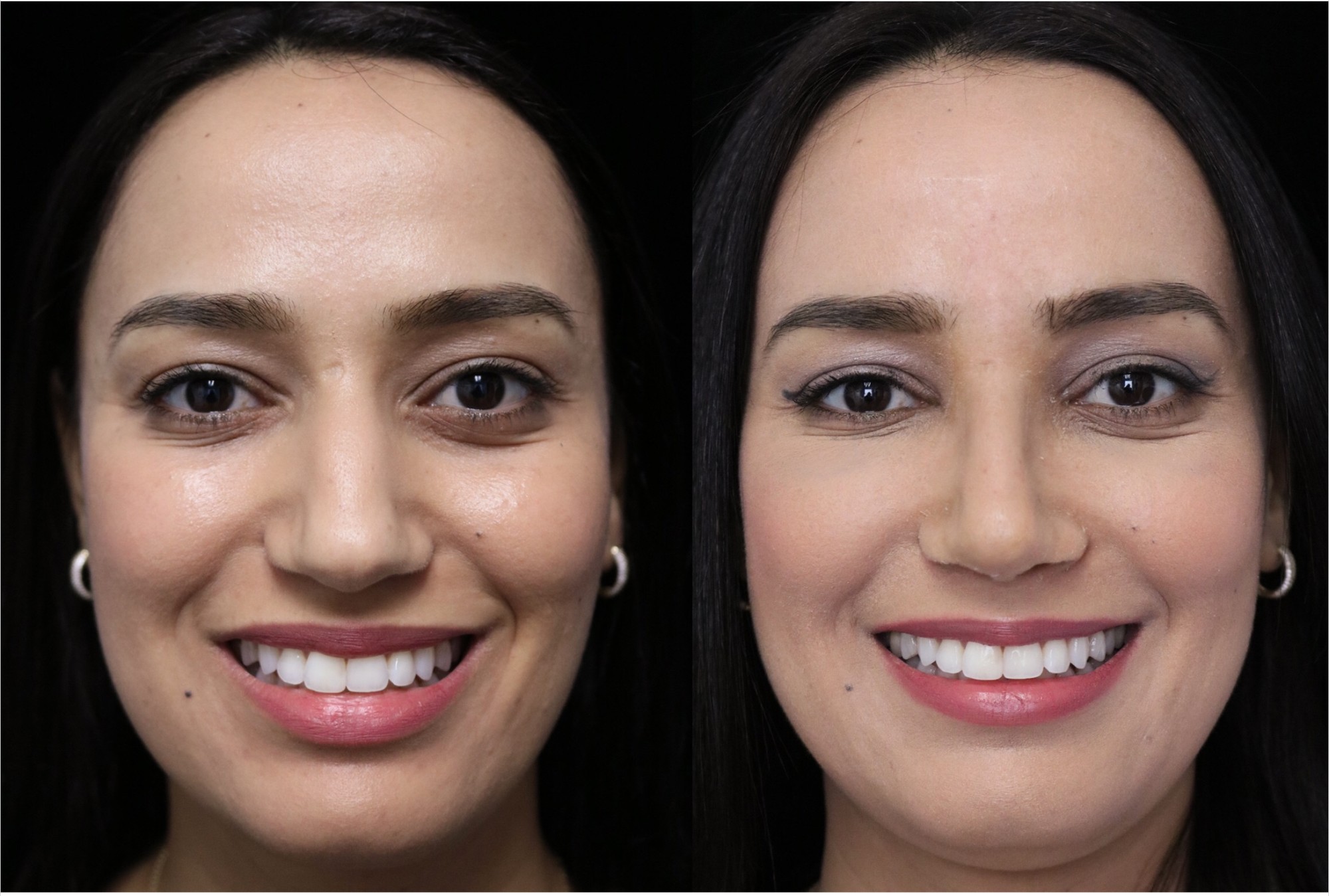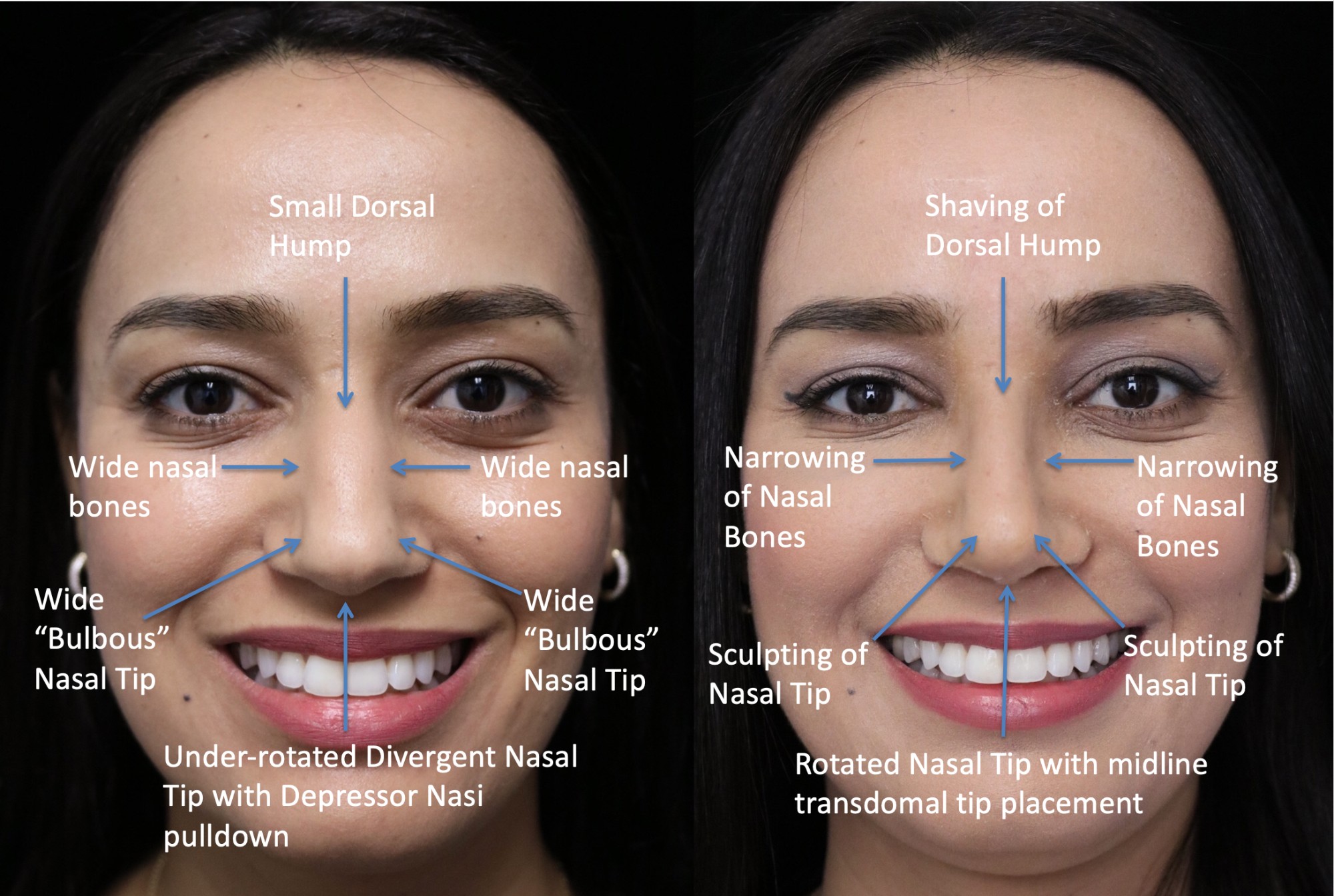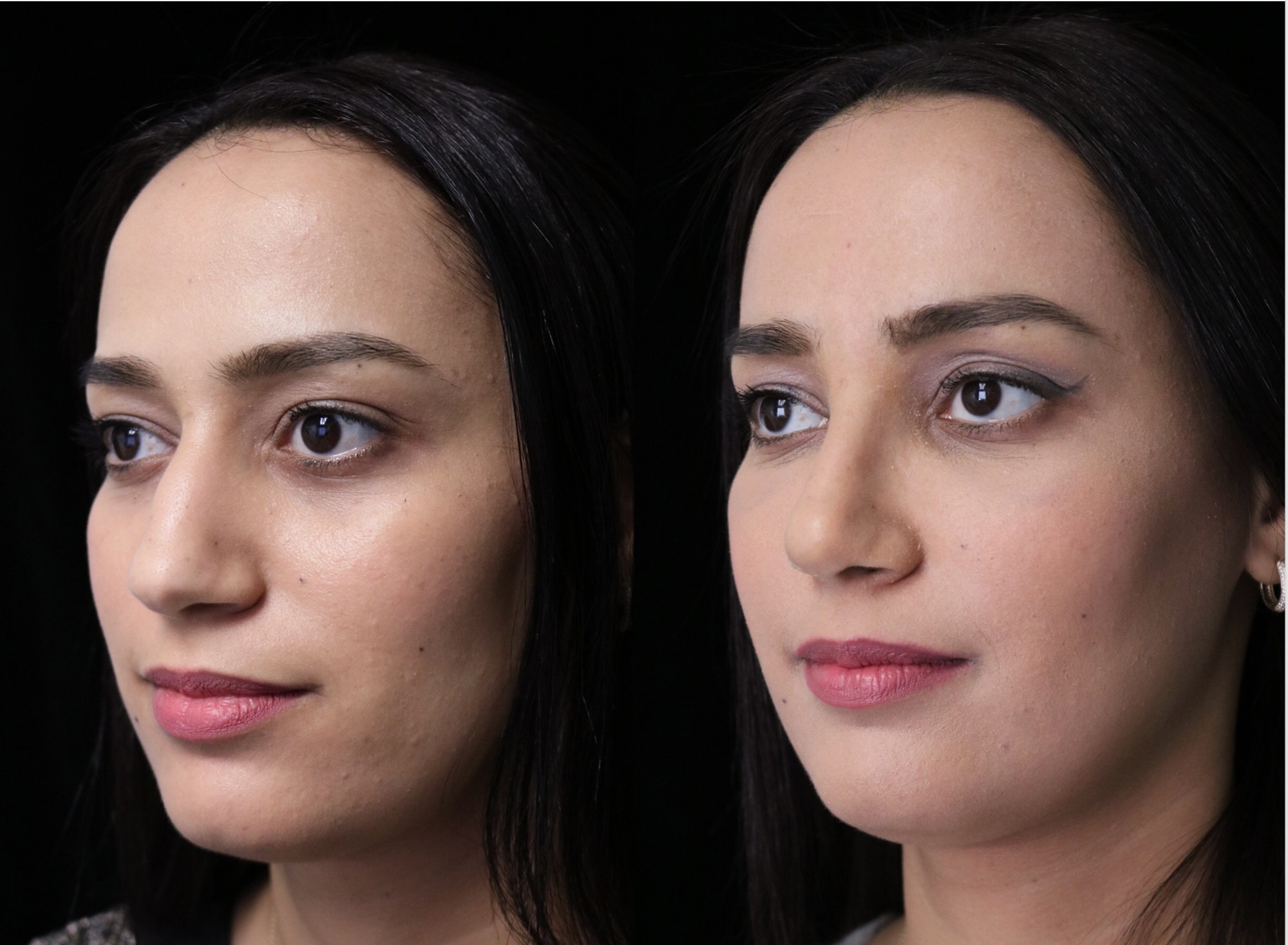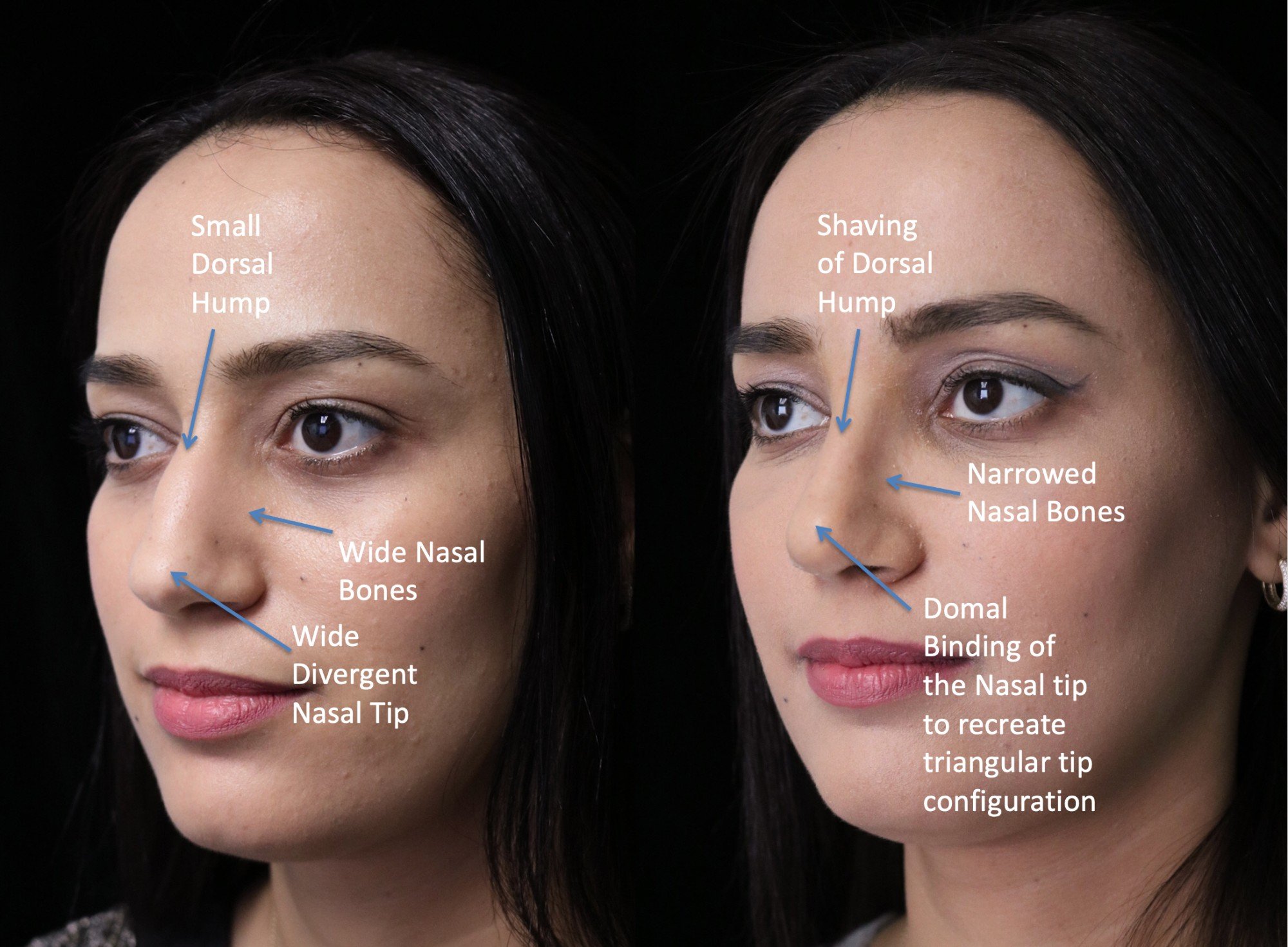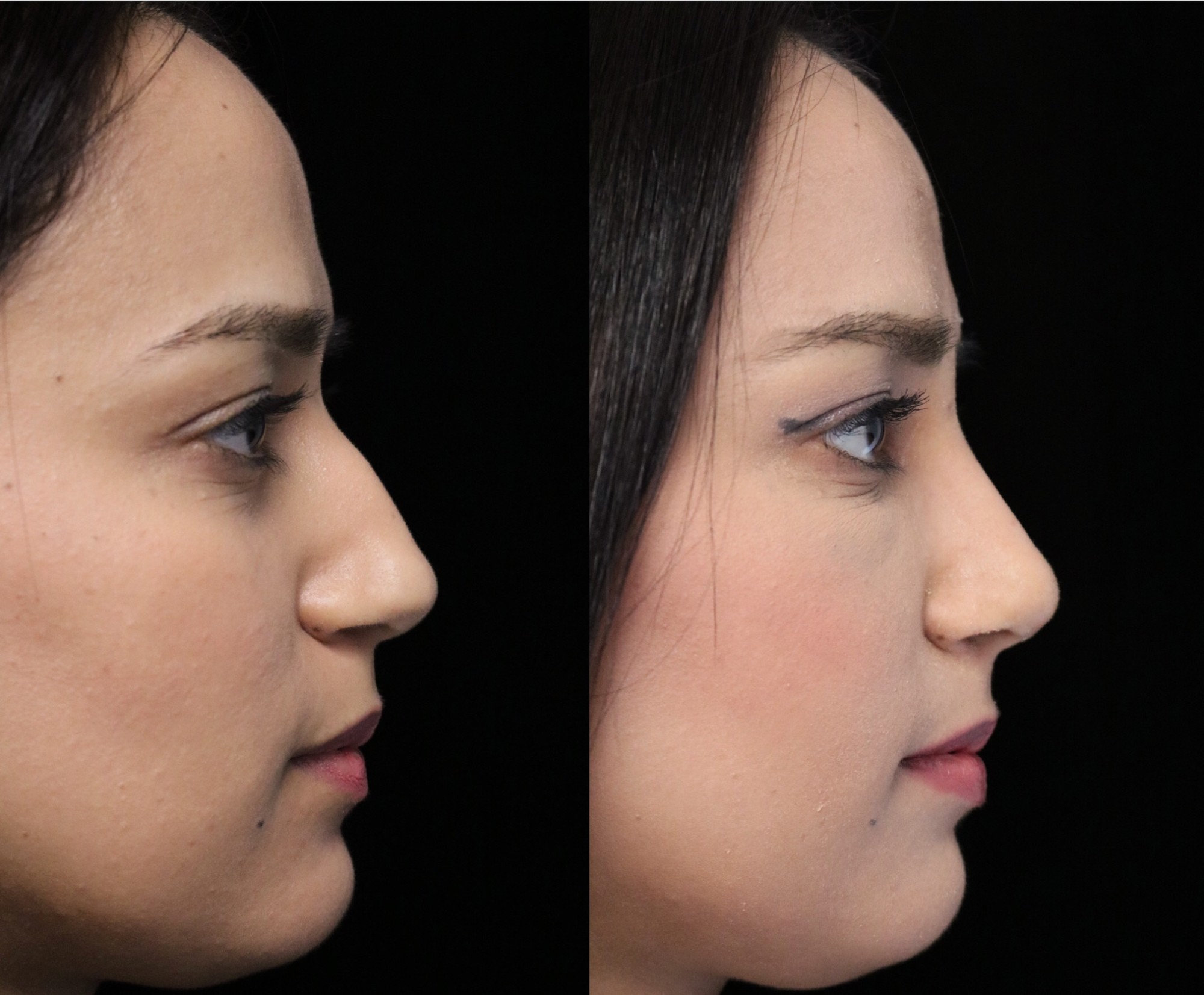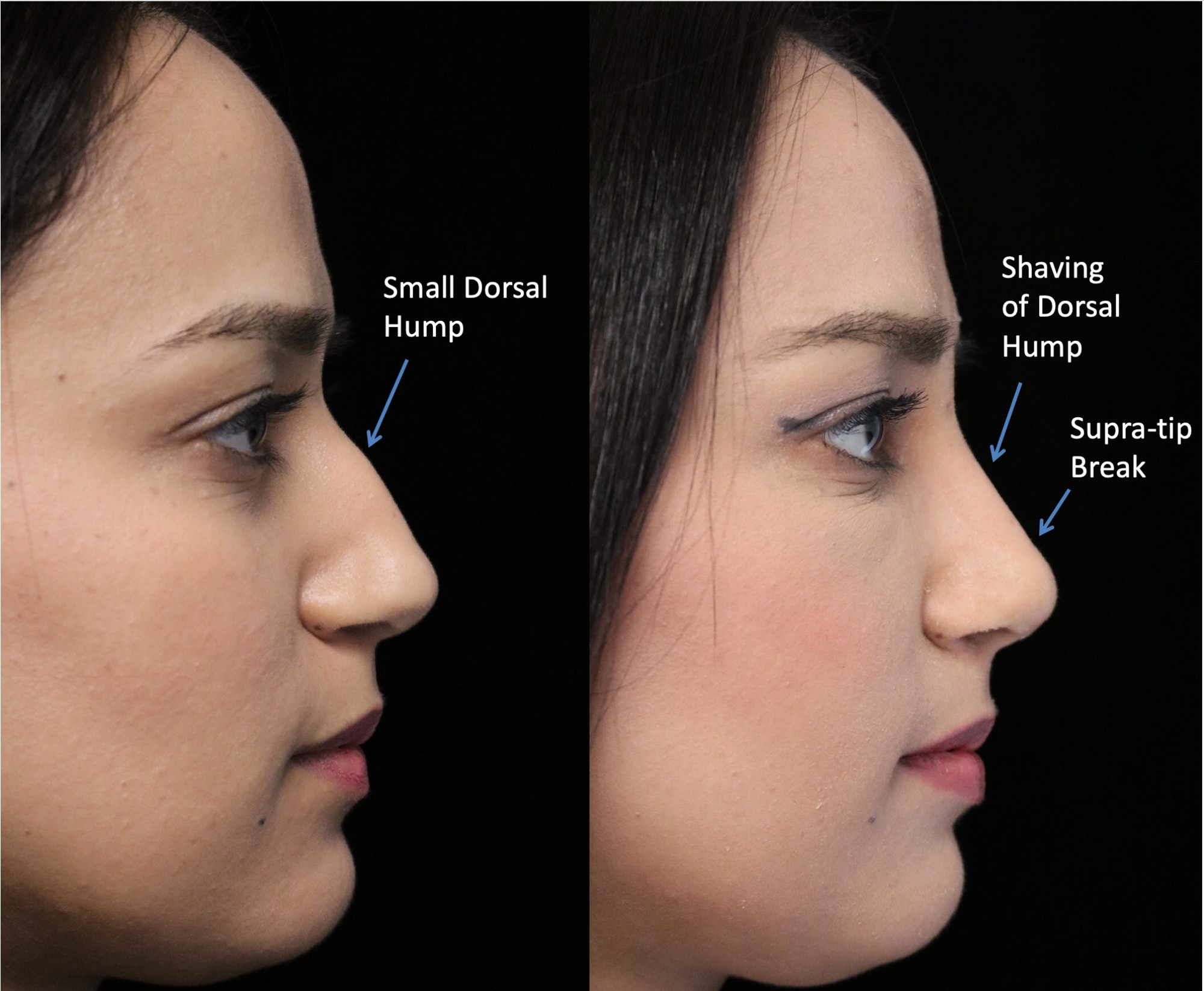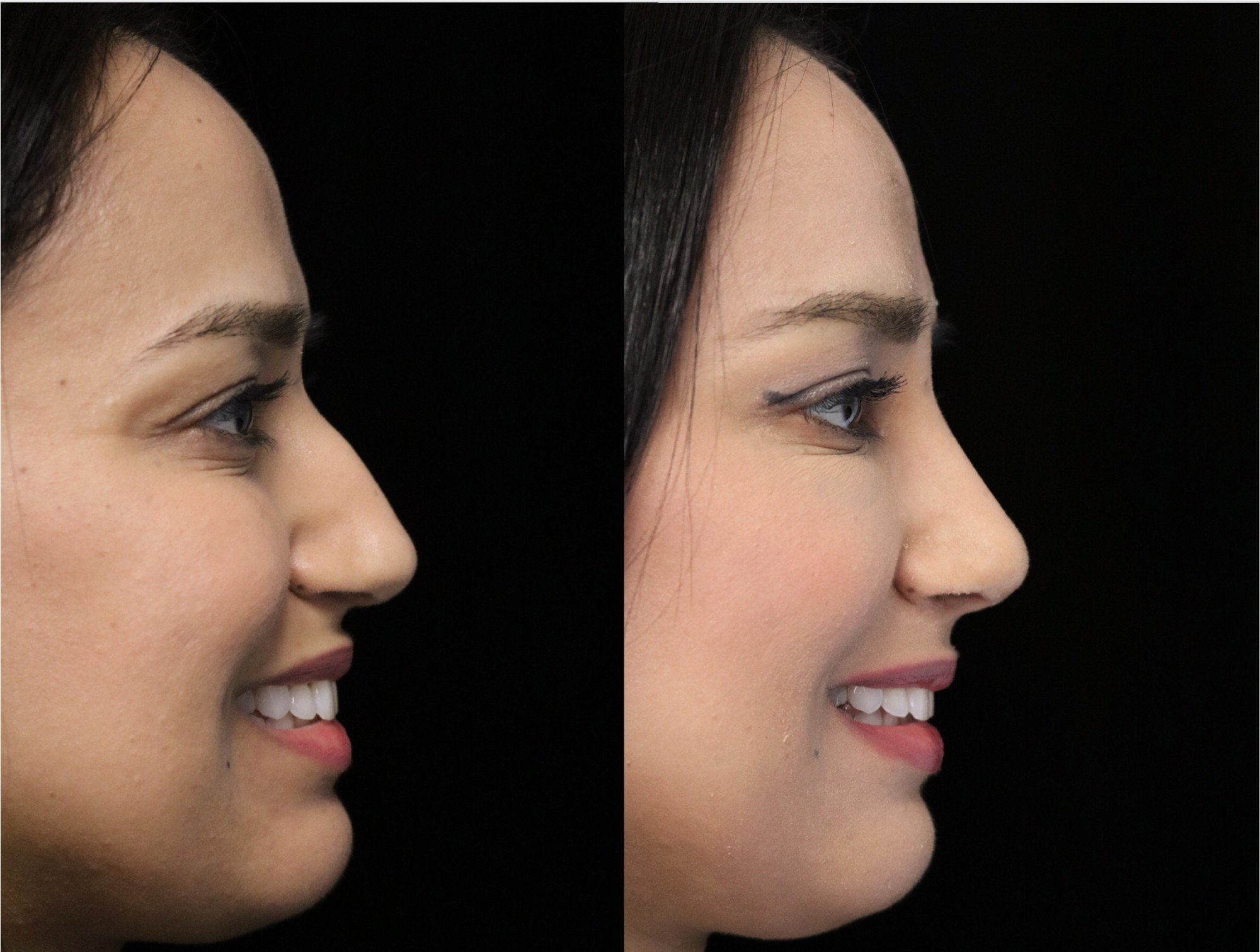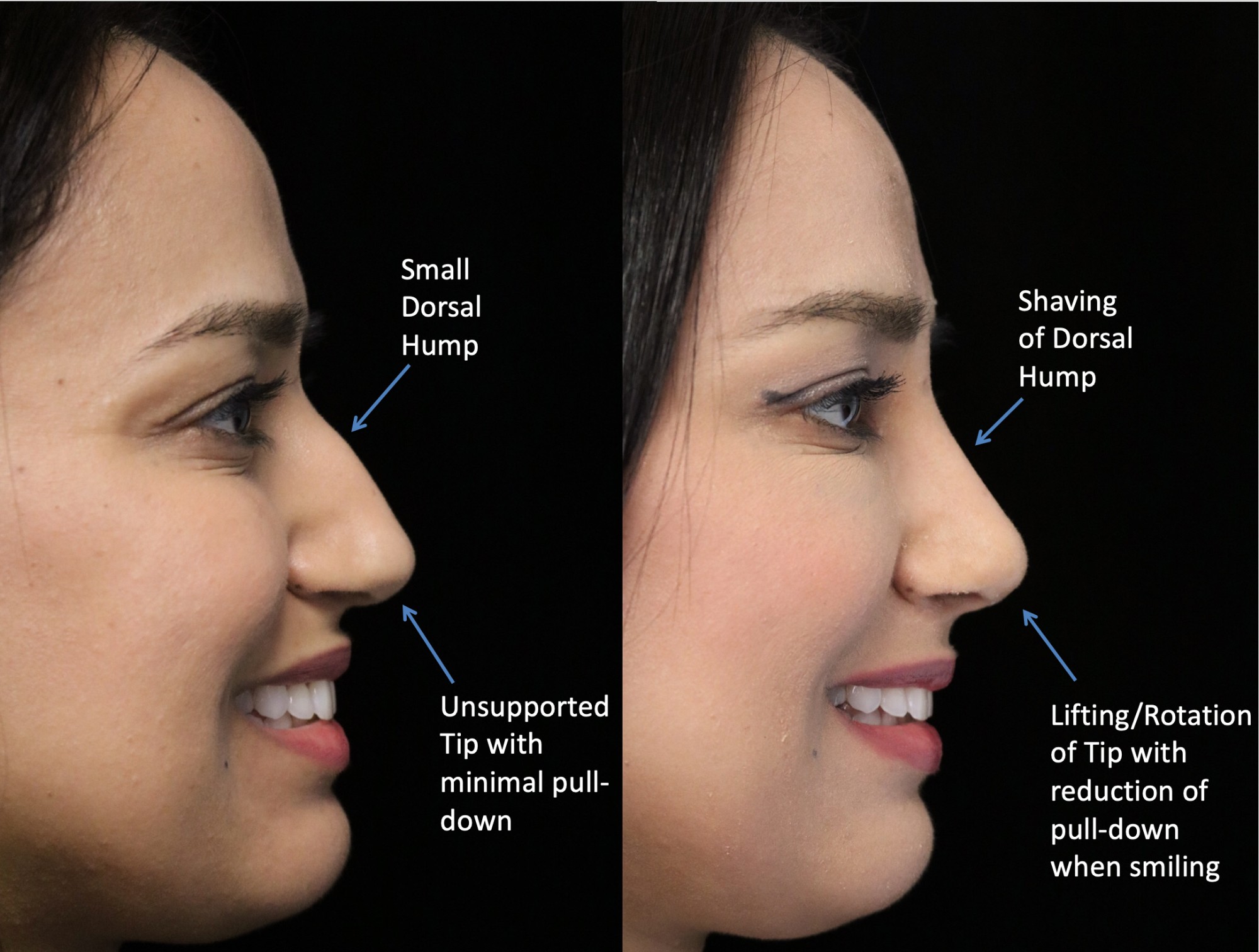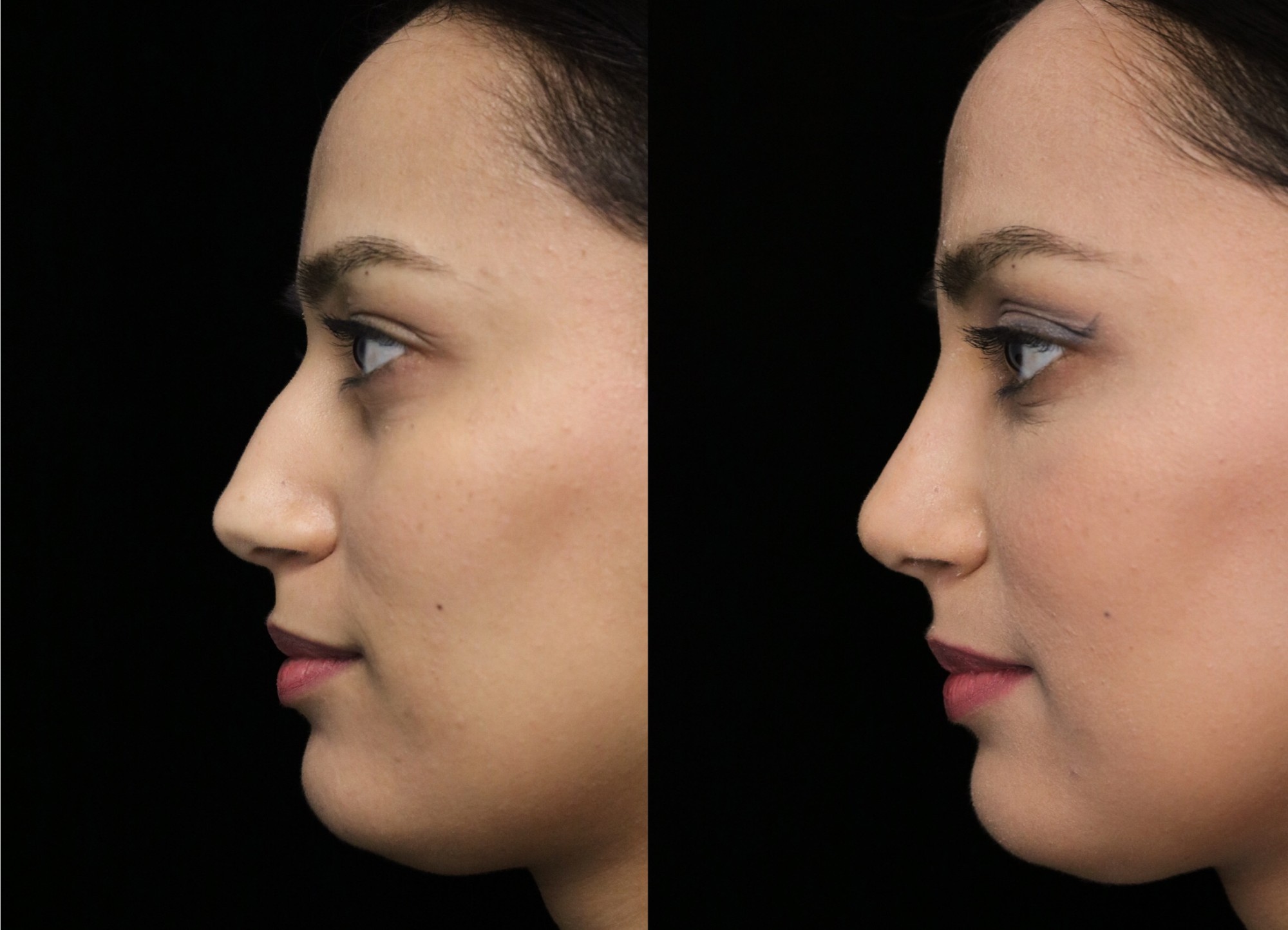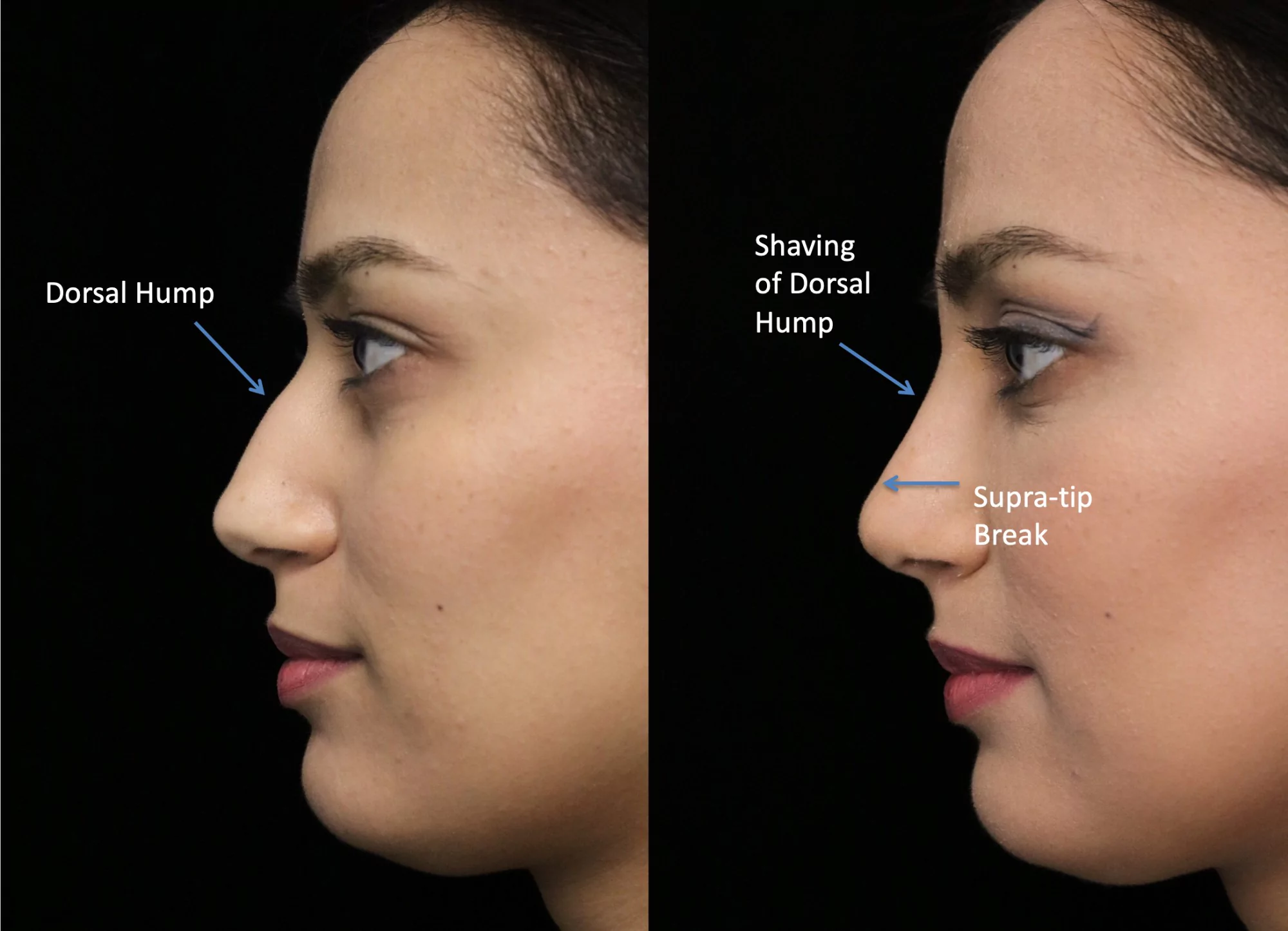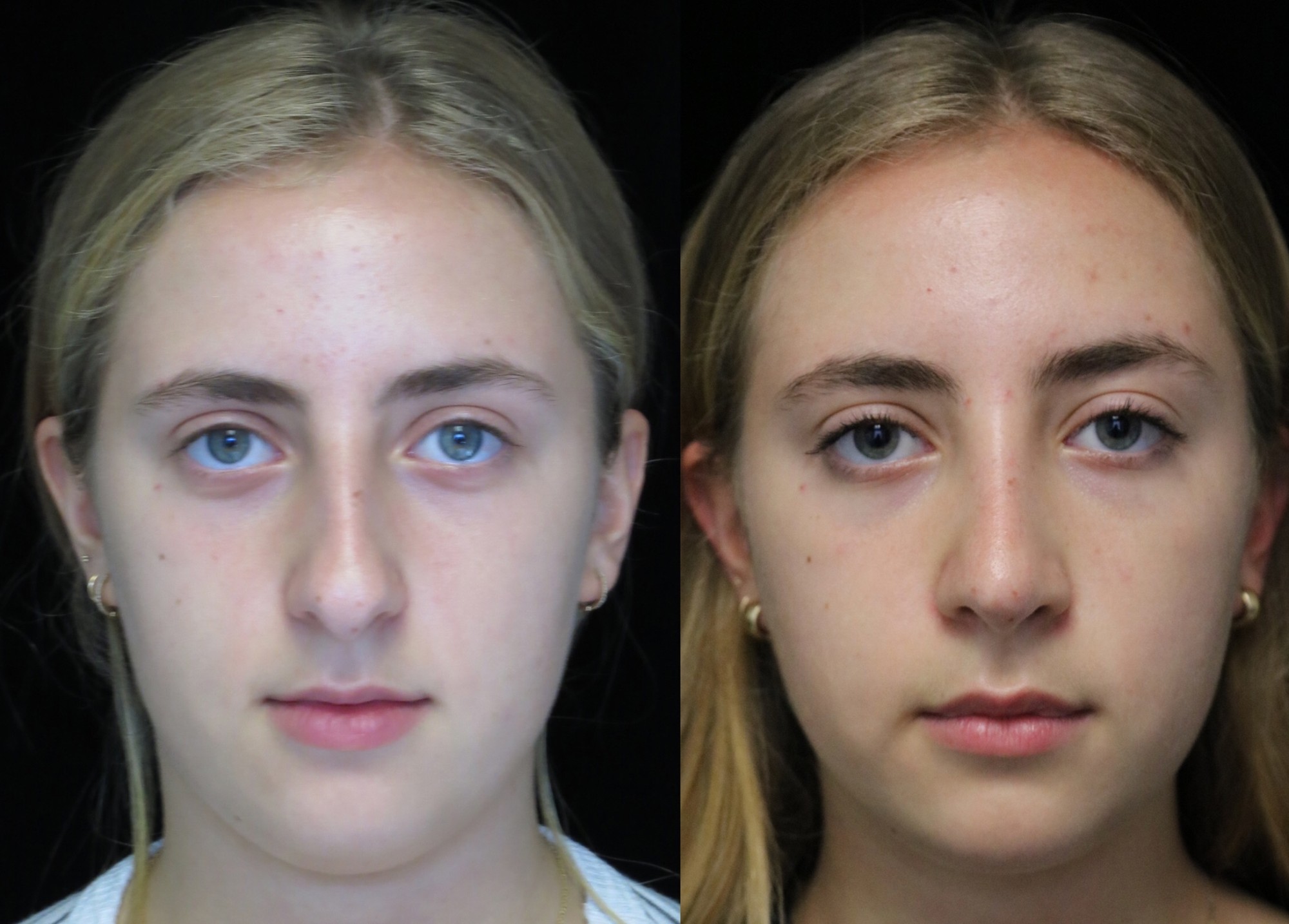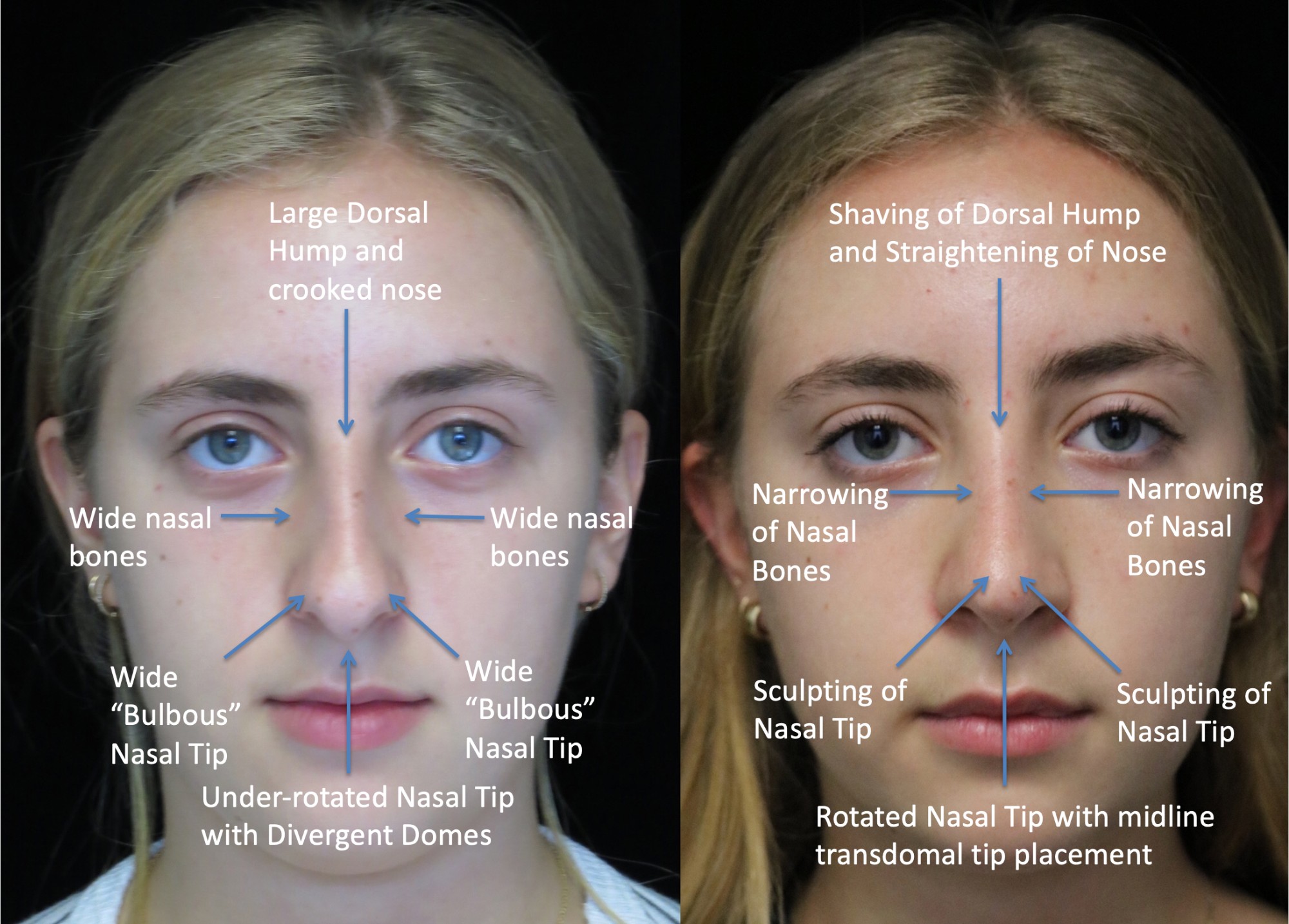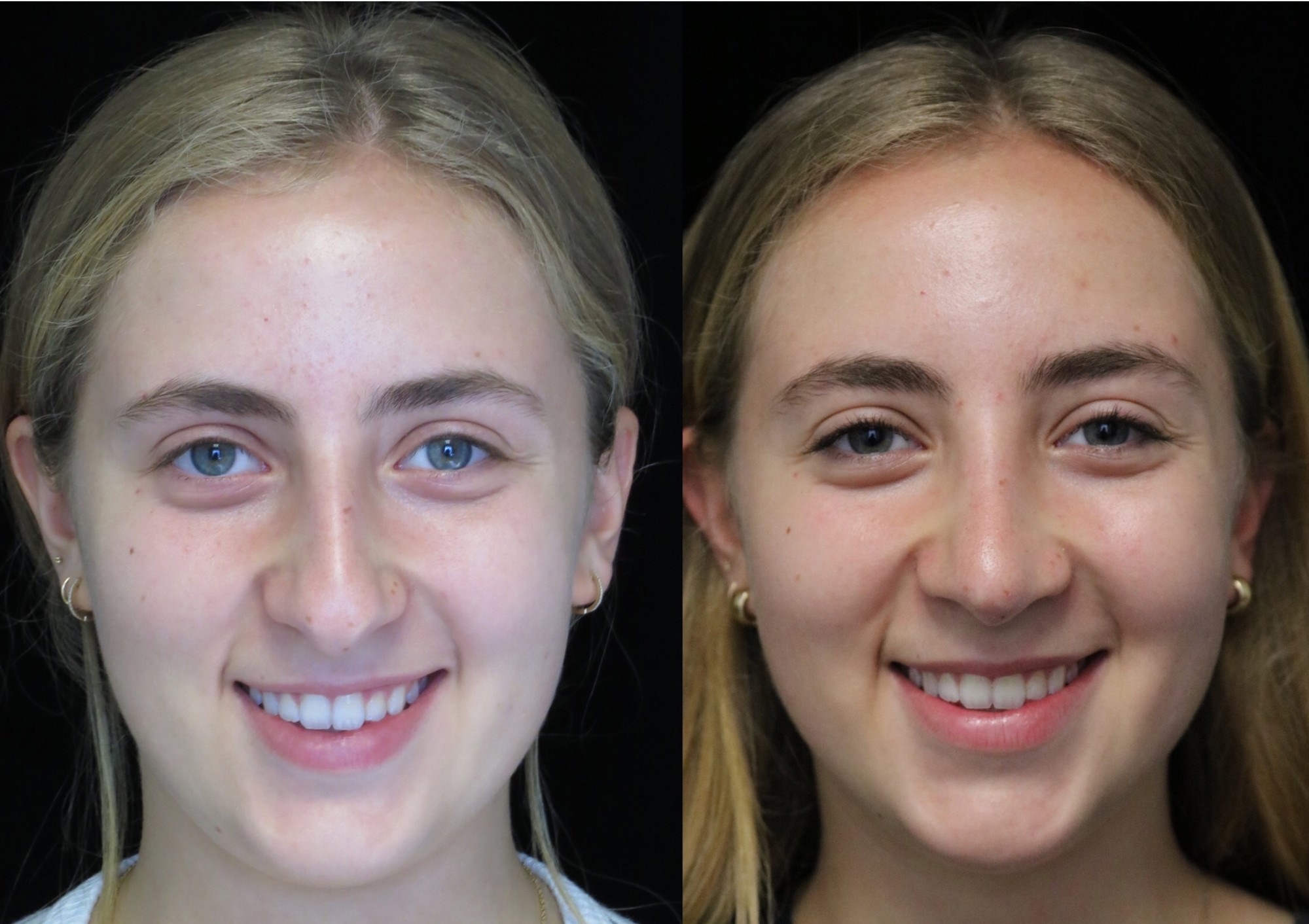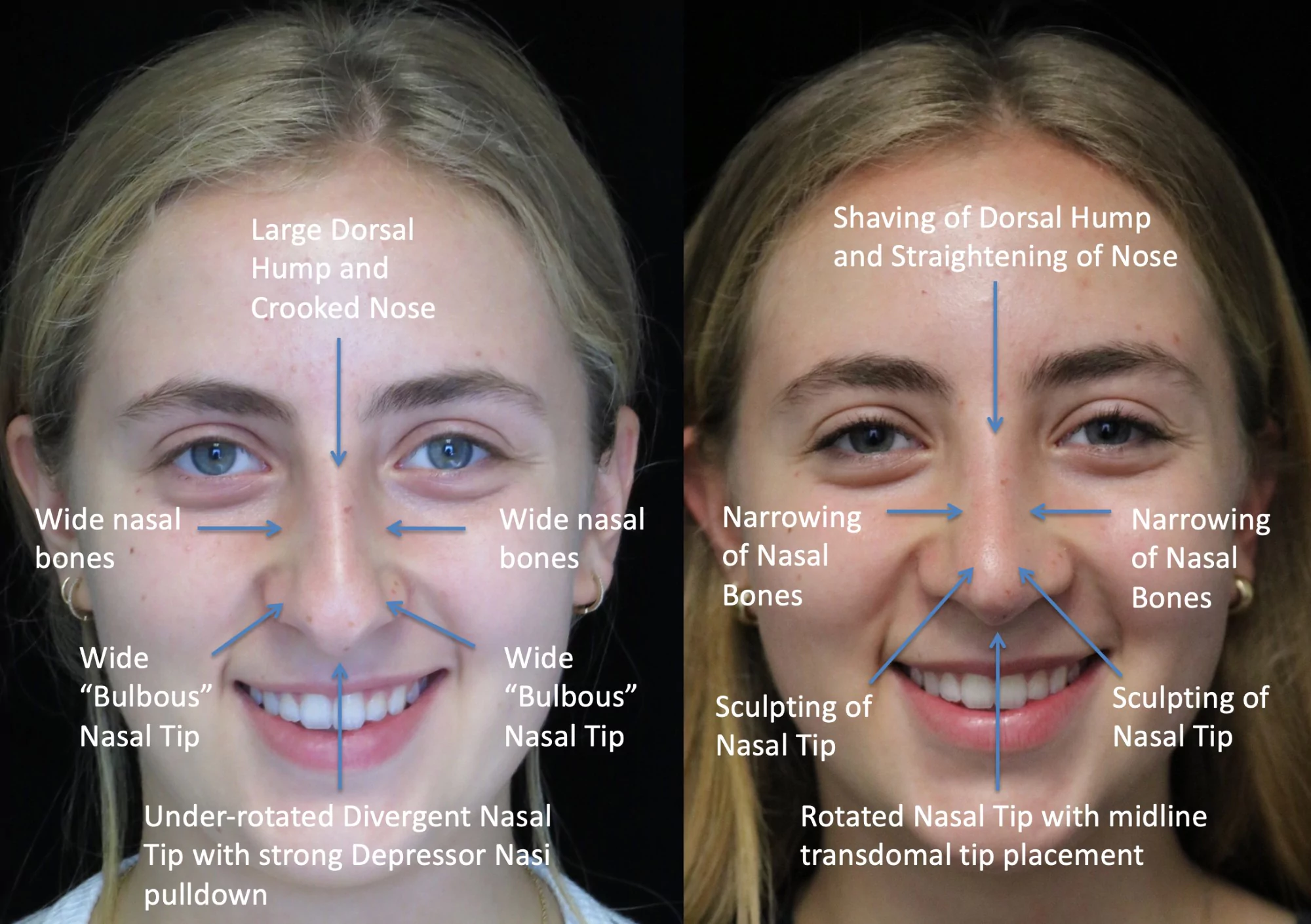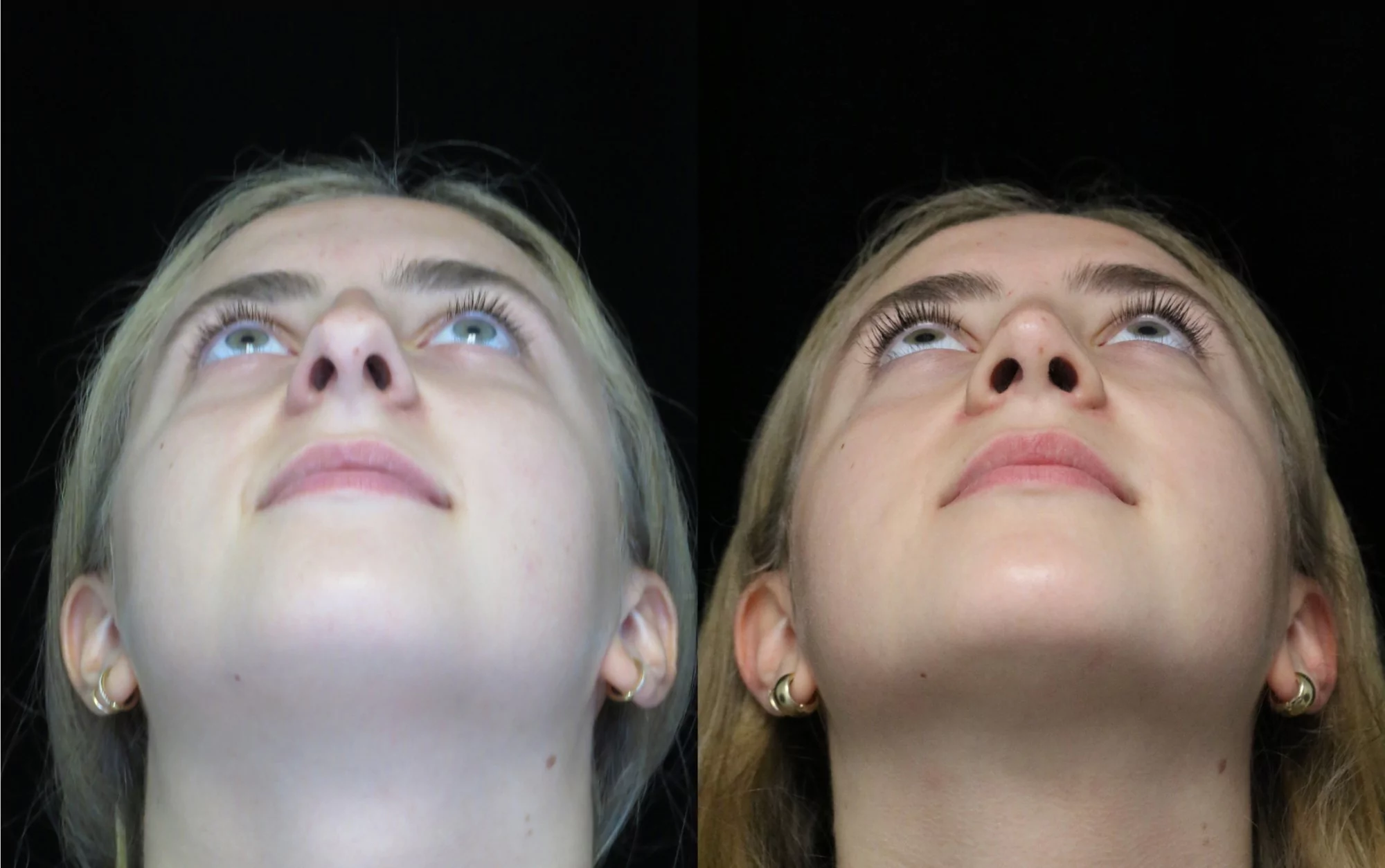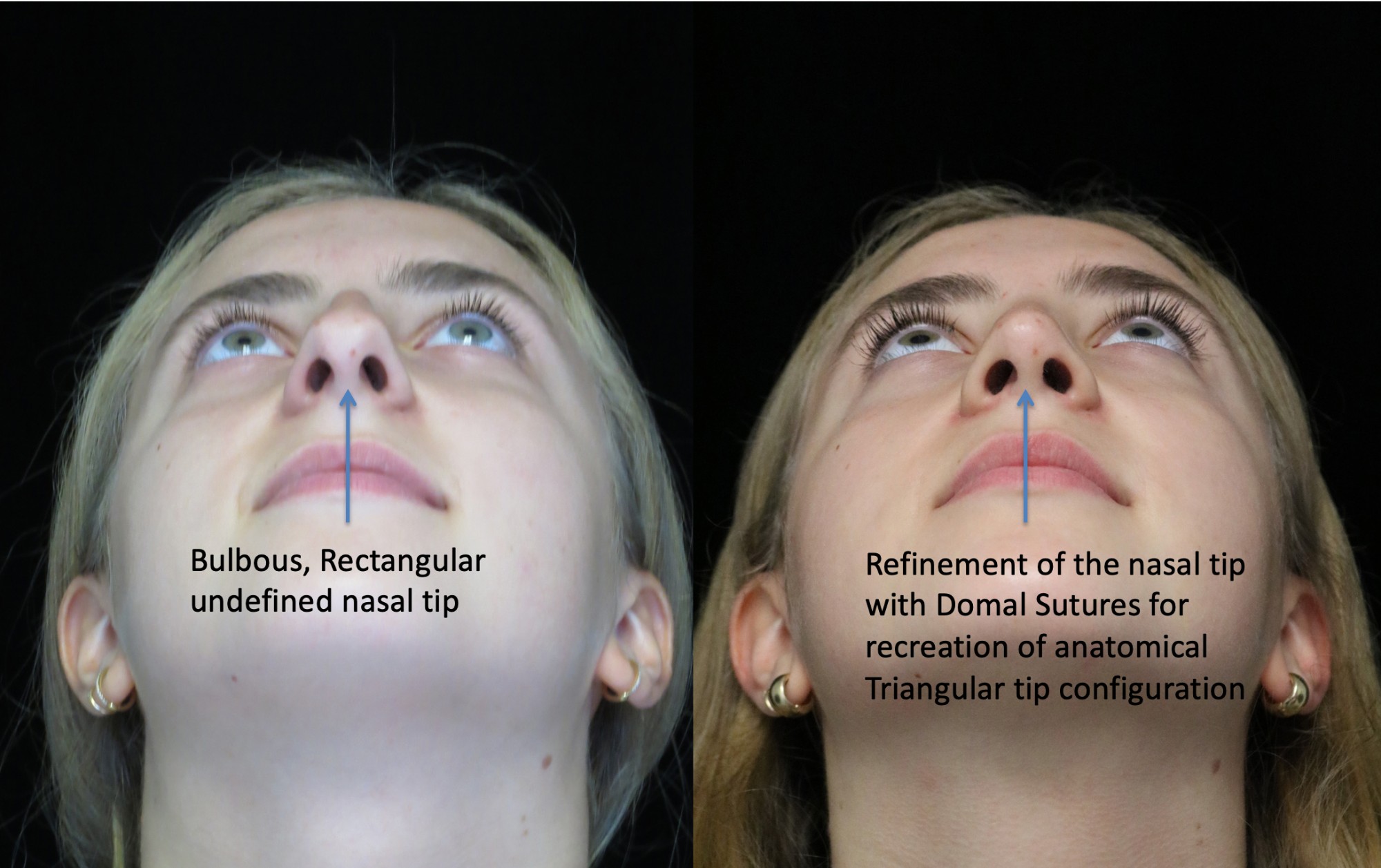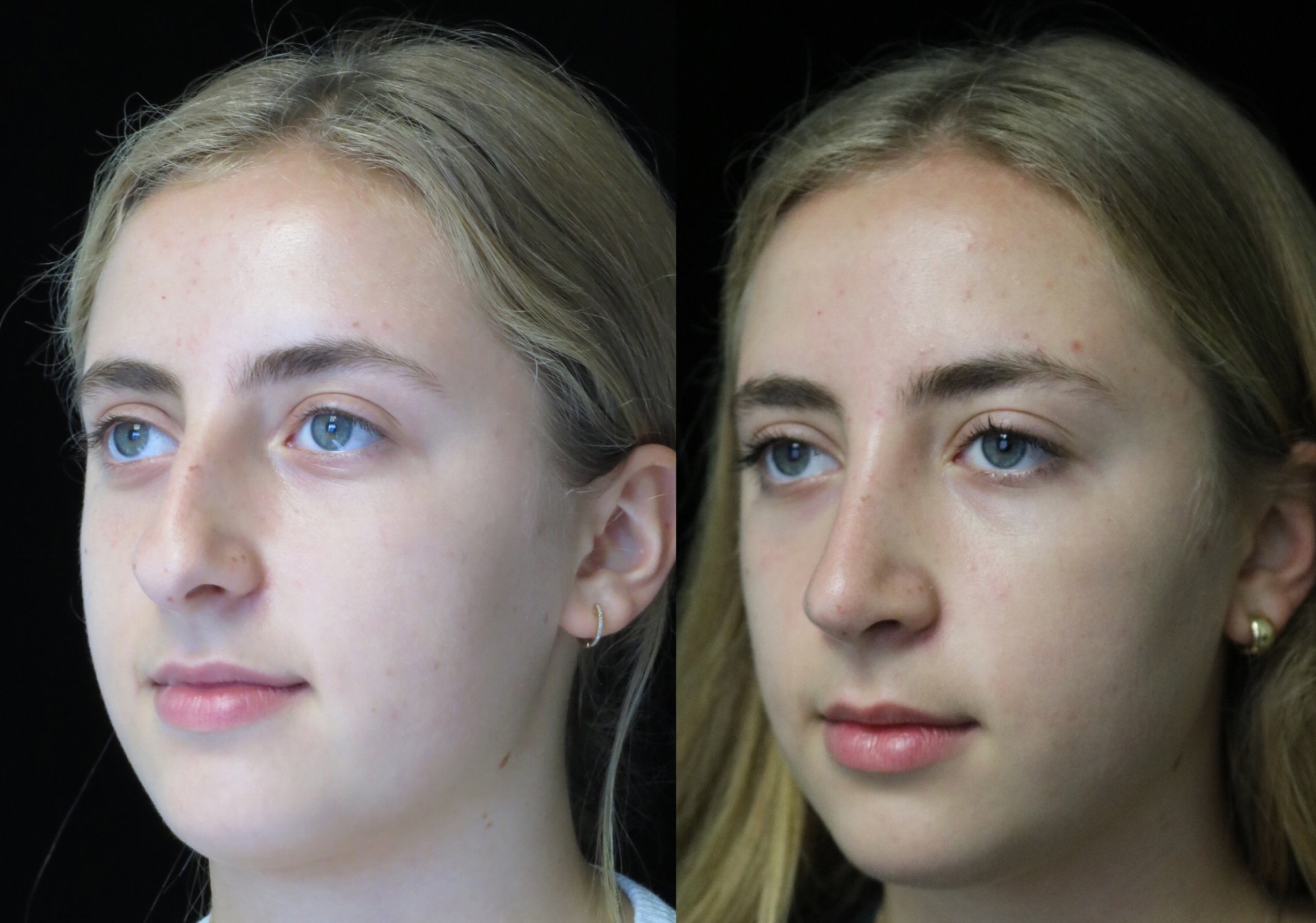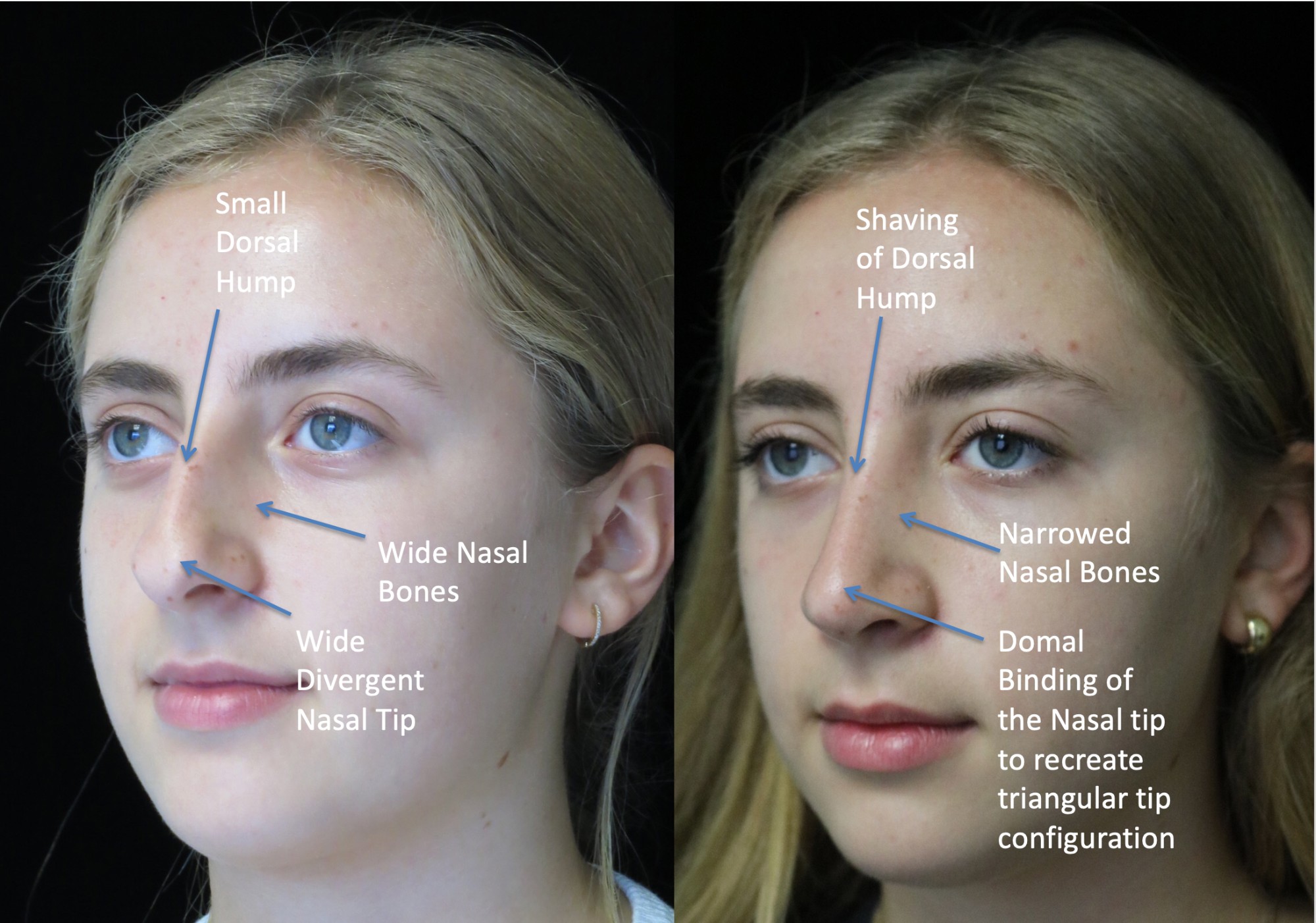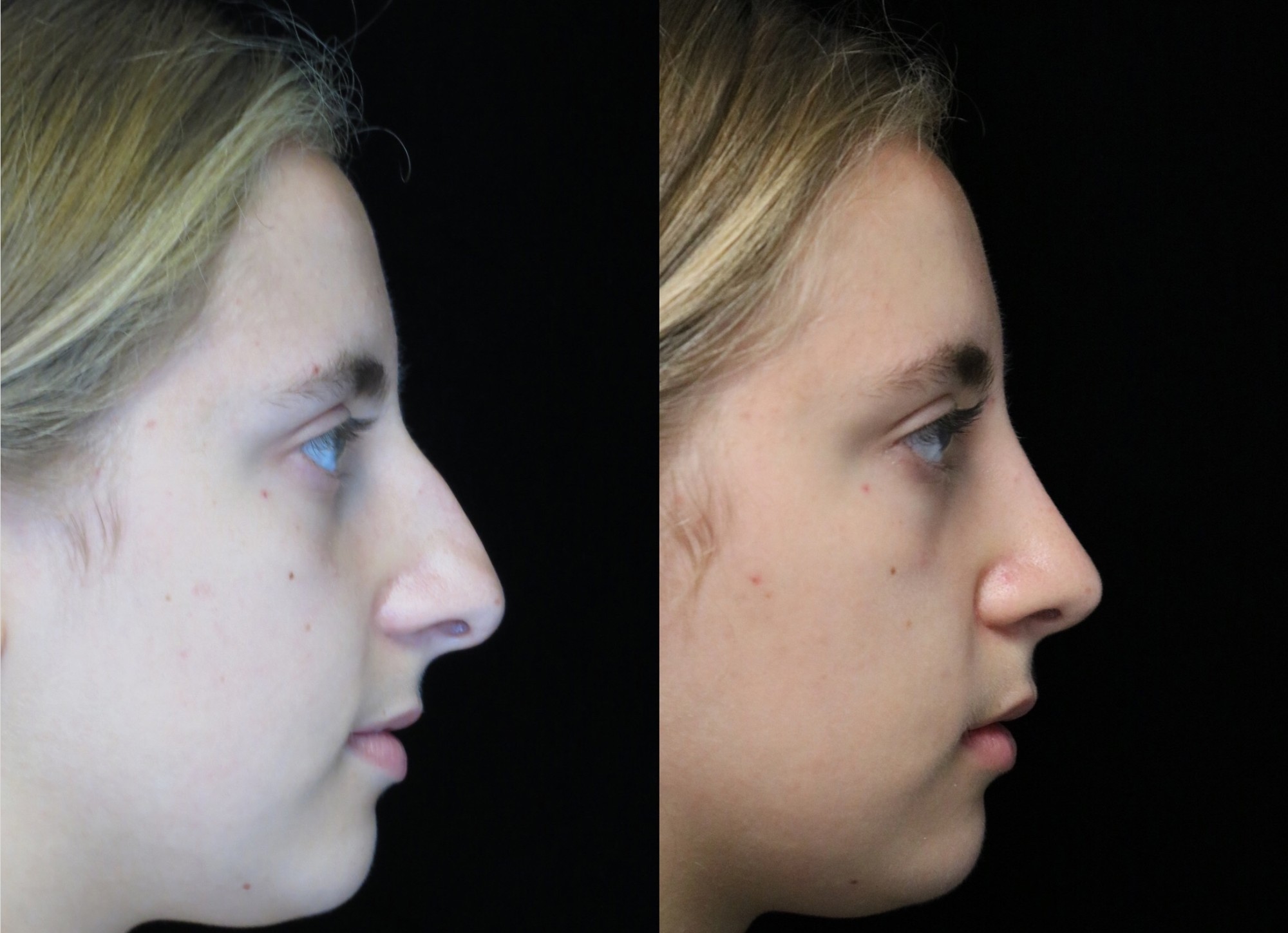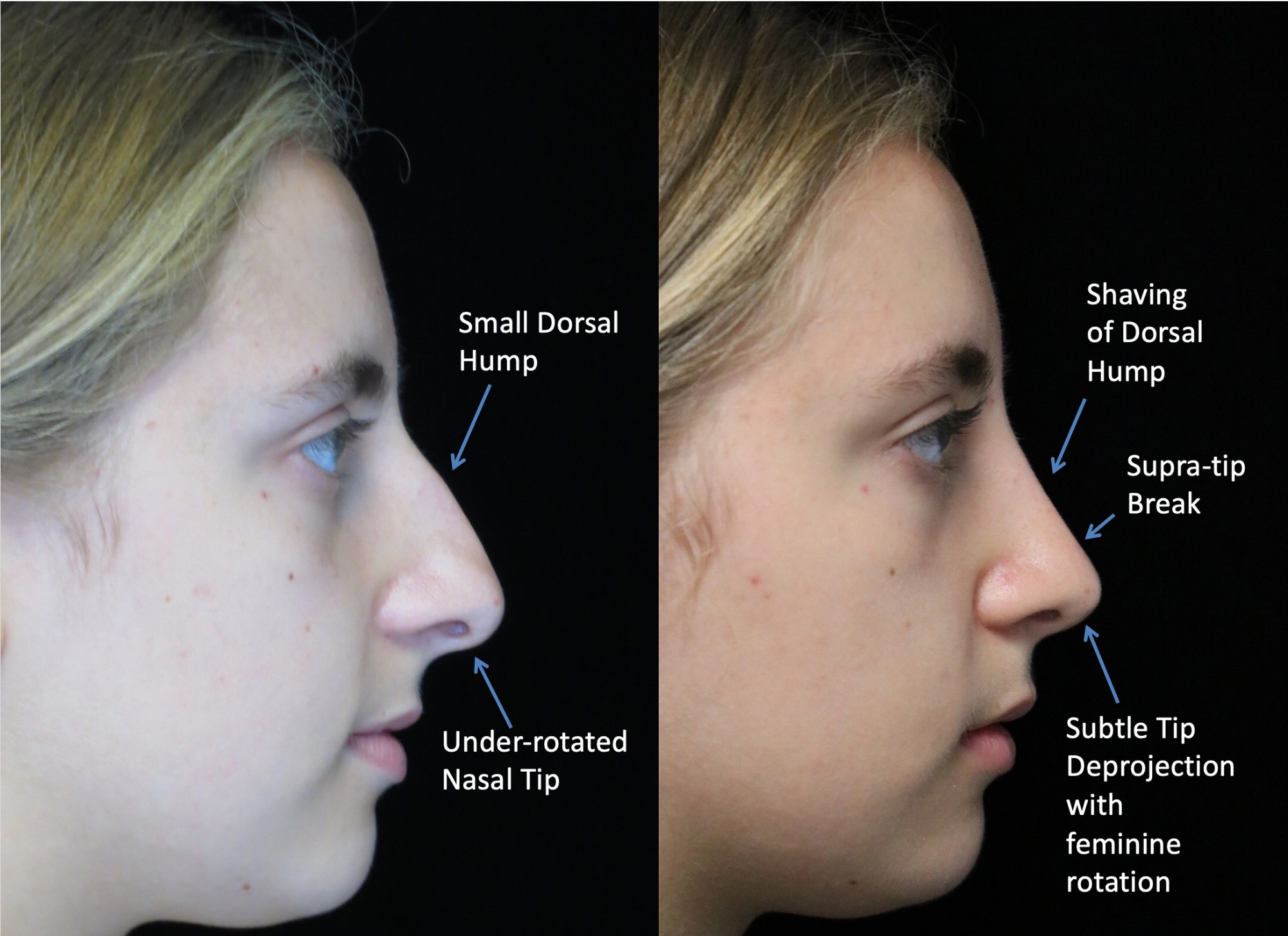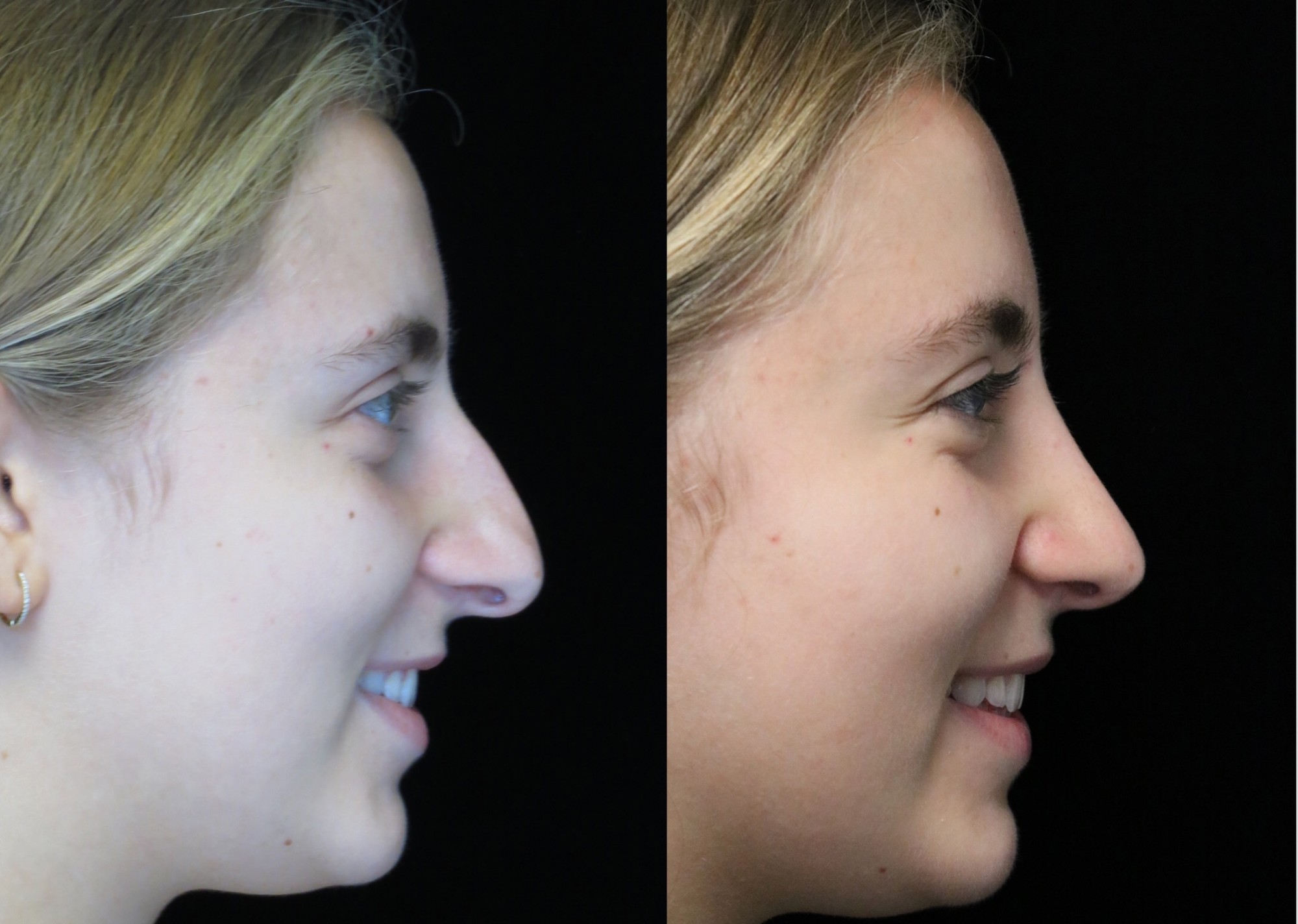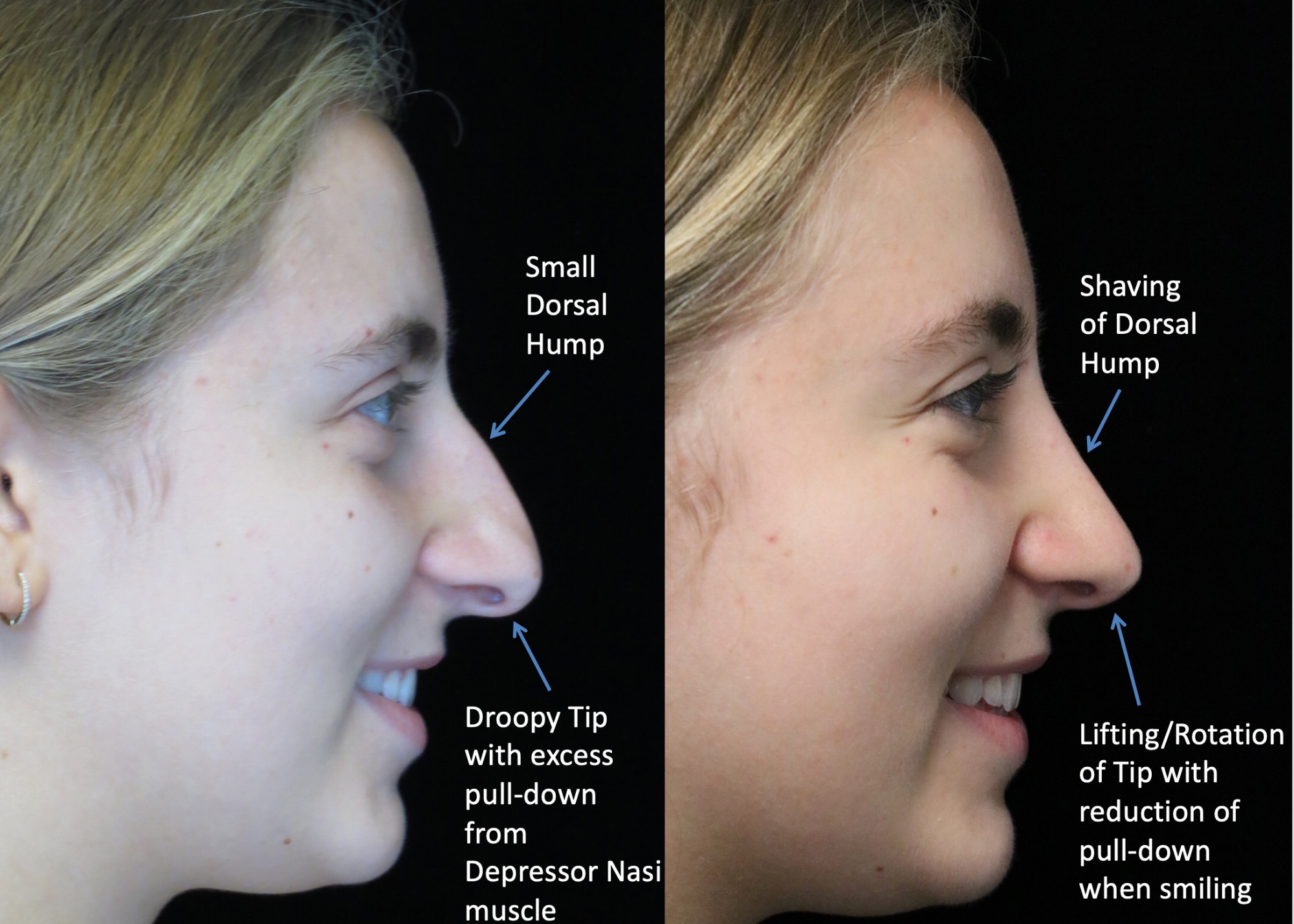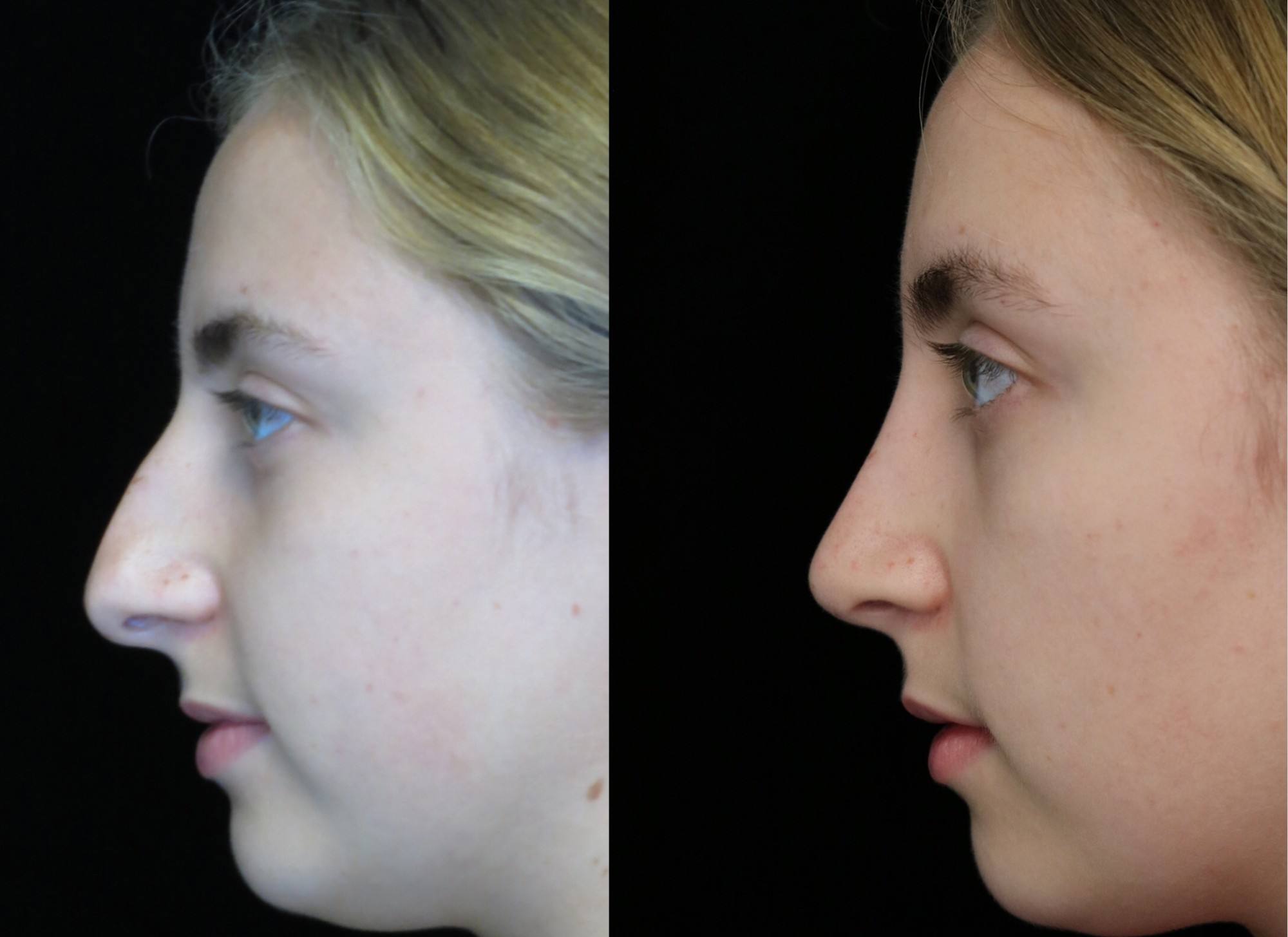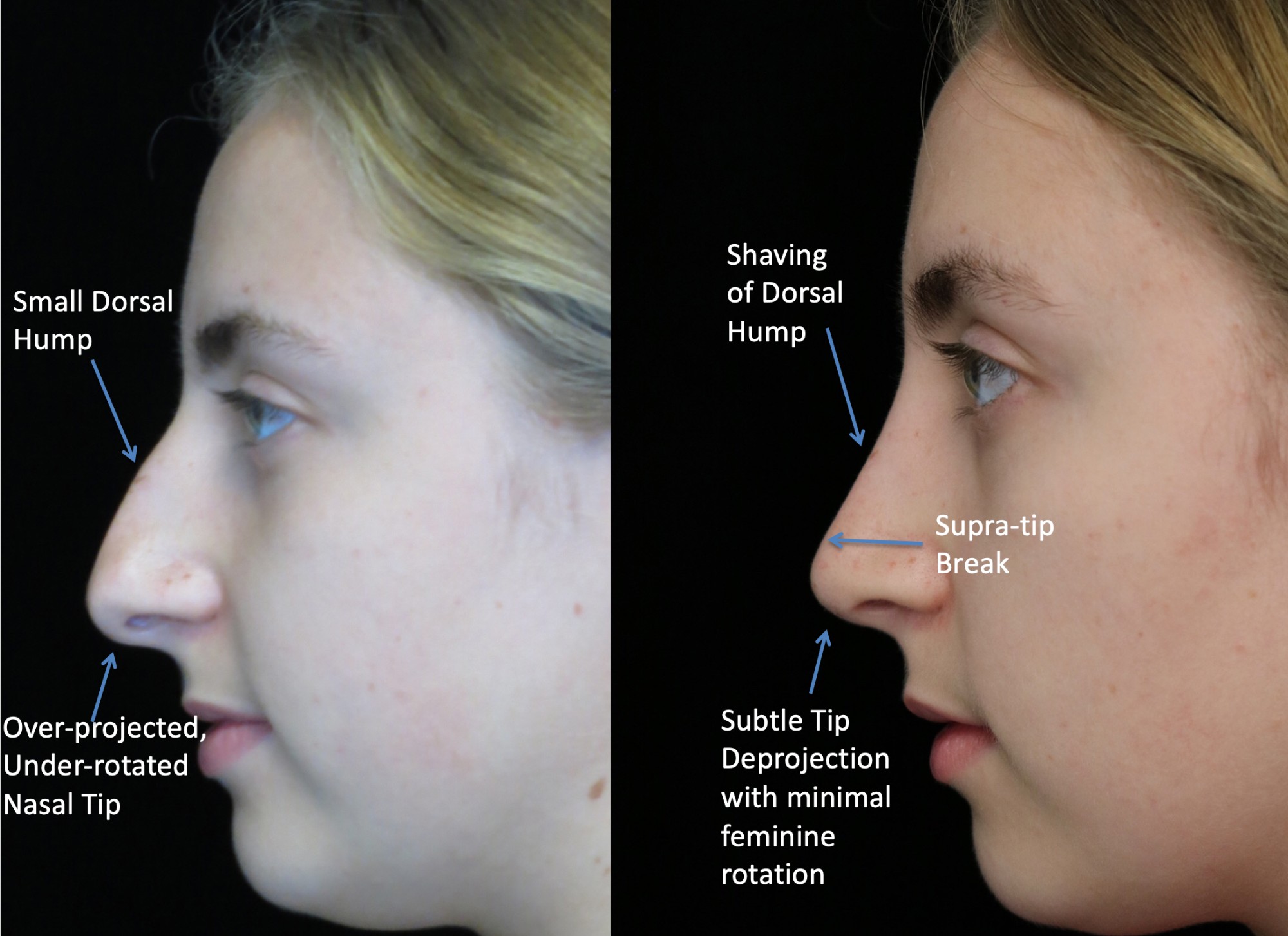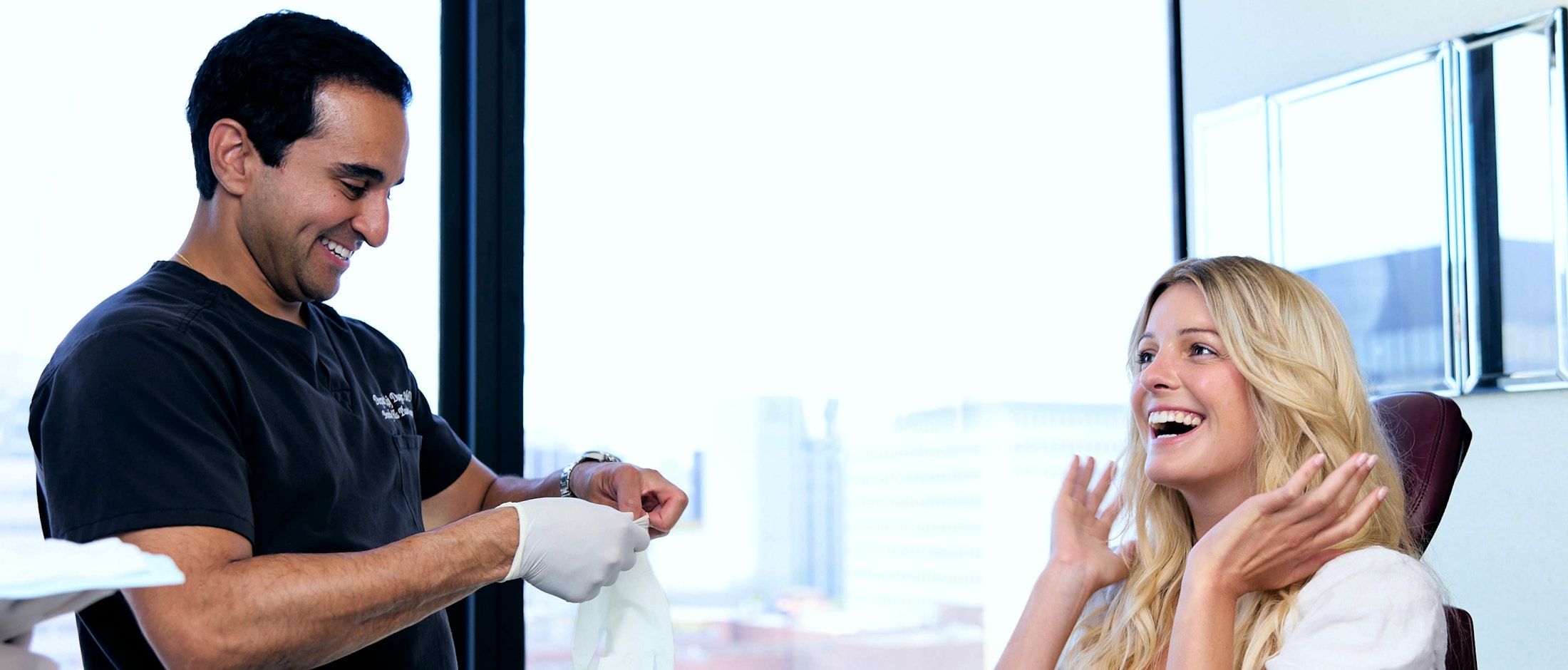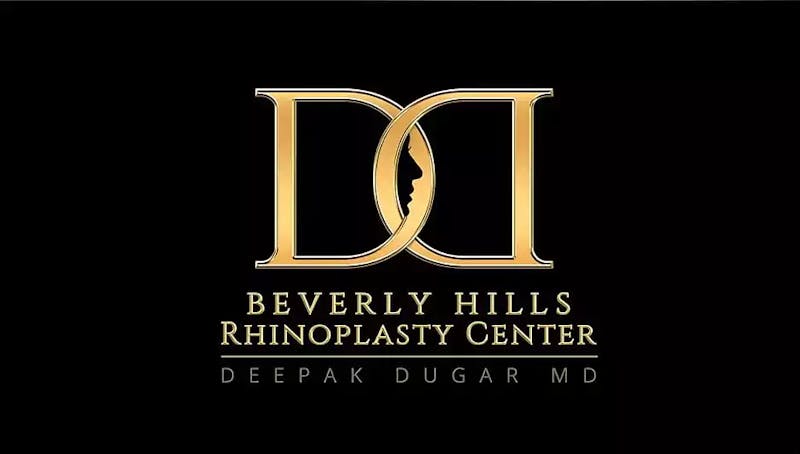
The size, shape, and position of the nose in relation to the rest of our facial features play an important role in our perceived attractiveness. For some, the appearance of the nose is a source of pride and confidence, but for others, it can be a reason for enhancement.
Table Of Contents
- What is a closed rhinoplasty?
- Closed rhinoplasty: Bulbous tip, dorsal hump, and other cosmetic nasal issues
- How does closed rhinoplasty work?
- What are the advantages of closed rhinoplasty?
- What are the disadvantages of a closed rhinoplasty?
- Closed Rhinoplasty Before and After
- Getting ready for closed rhinoplasty: Before and after your surgery
The size, shape, and position of the nose in relation to the rest of the face all play an important role in our perceived attractiveness. For some, how their nose looks is a source of pride and confidence. For others, it can be a reason for enhancement.
For the latter, a closed rhinoplasty (often called a Scarless Nose® job or surgery) can help improve the look of the nose without visible scarring. If you’re considering a closed rhinoplasty, here’s what you need to know about this safe and popular procedure.
What is closed rhinoplasty?
Closed rhinoplasty (endonasal rhinoplasty) is also performed under general anesthesia but with all incisions made within the nostrils on the mucosa. The surgeon typically makes separate surgical openings in the left and right nostrils. It’s less invasive and causes less swelling compared with an open rhinoplasty. This procedure is recommended for primary noses (i.e., patients who have not had rhinoplasty surgery performed on their nose).
The main advantage of a closed rhinoplasty or Scarless Nose® surgery is that it does not alter the natural characteristics of the nose and simply refines and enhances the patients’ existing nasal anatomy. This approach allows for nose refinement without drastic or excessive changes.
Many patients do not want an overly surgical look that makes it obvious to their family or peers that they’ve undergone a rhinoplasty. For this reason, closed rhinoplasty is preferred as there are fewer tell-tale signs of surgery.
How is it different from open rhinoplasty?
Unlike closed rhinoplasty, open rhinoplasty requires the surgeon to make a small incision on the patient’s columella, or the soft tissue separating the nostrils. This gives the surgeon access to the underlying bone and cartilage structure of the nose. This makes open rhinoplasty a relatively more invasive procedure, which results in more stitches and a longer recovery period.
The main advantage of an open rhinoplasty, however, is that it allows for total reconstruction of the nose. It is also ideal for revision rhinoplasty since the original shape of the nose has already been modified. It allows total reconstruction from scratch, with the surgeon reshaping the nose into any structure desired.
Think of it as remodeling versus rebuilding a home. If a home is good overall with excellent bones and structure, the new owner may decide to simply remodel the home, which is akin to getting a closed rhinoplasty. But if a home has complicated anatomy, tearing it down and rebuilding from scratch might be preferable, much akin to getting an open rhinoplasty.
For these reasons, open rhinoplasty is highly recommended for individuals who have significant deformities or injuries. This procedure may also help improve less-than-ideal results of a previous and subpar rhinoplasty.
Closed rhinoplasty for bulbous tips, dorsal humps, and other nasal issues
From an aesthetic standpoint, closed rhinoplasty addresses the following issues:
-
Overly large nose – If the size or width of your nose disproportionate to the rest of your face, a closed rhinoplasty can refine and slim down your nose for overall facial balance..
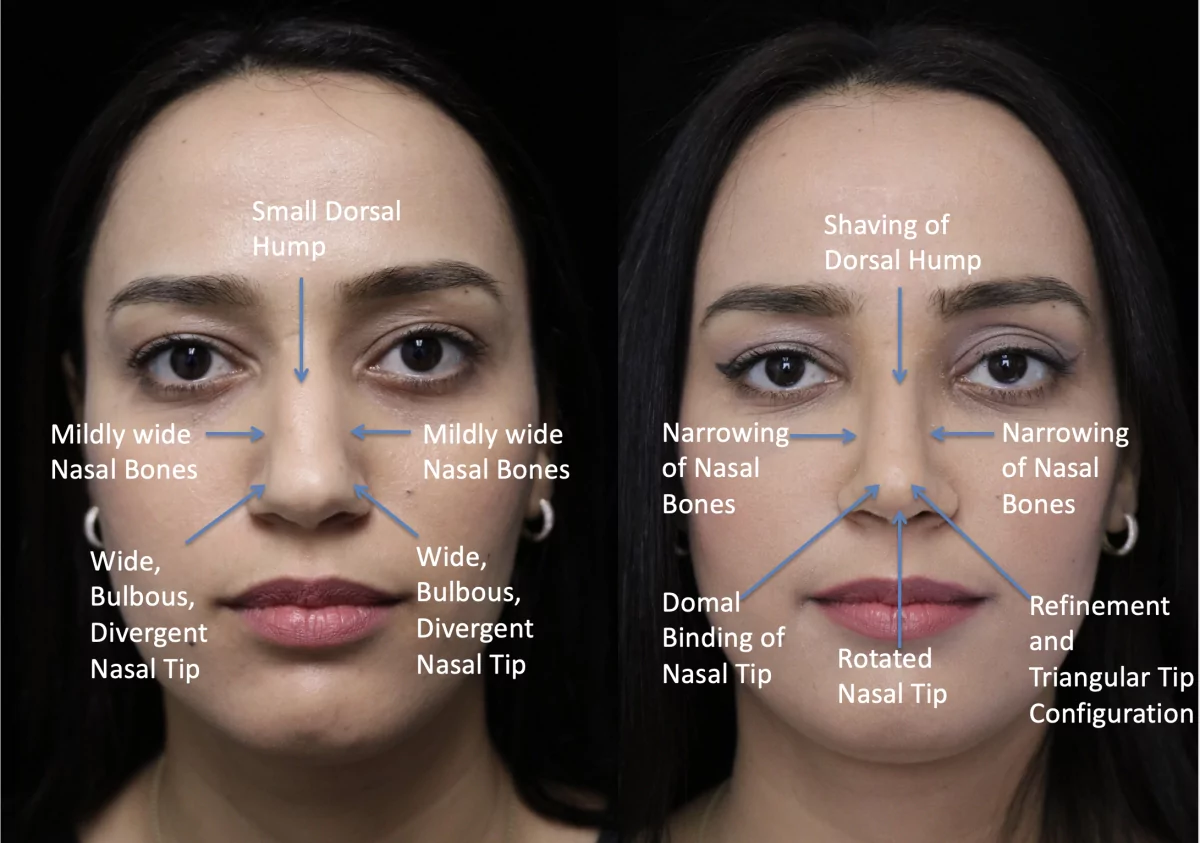
-
Misshapen nose – A closed nose job can enhance the shape of the nose, particularly for patients with wide nasal bones, bulbous or droopy tips, or asymmetrical noses. Click here for more information on nose shape and rhinoplasty.
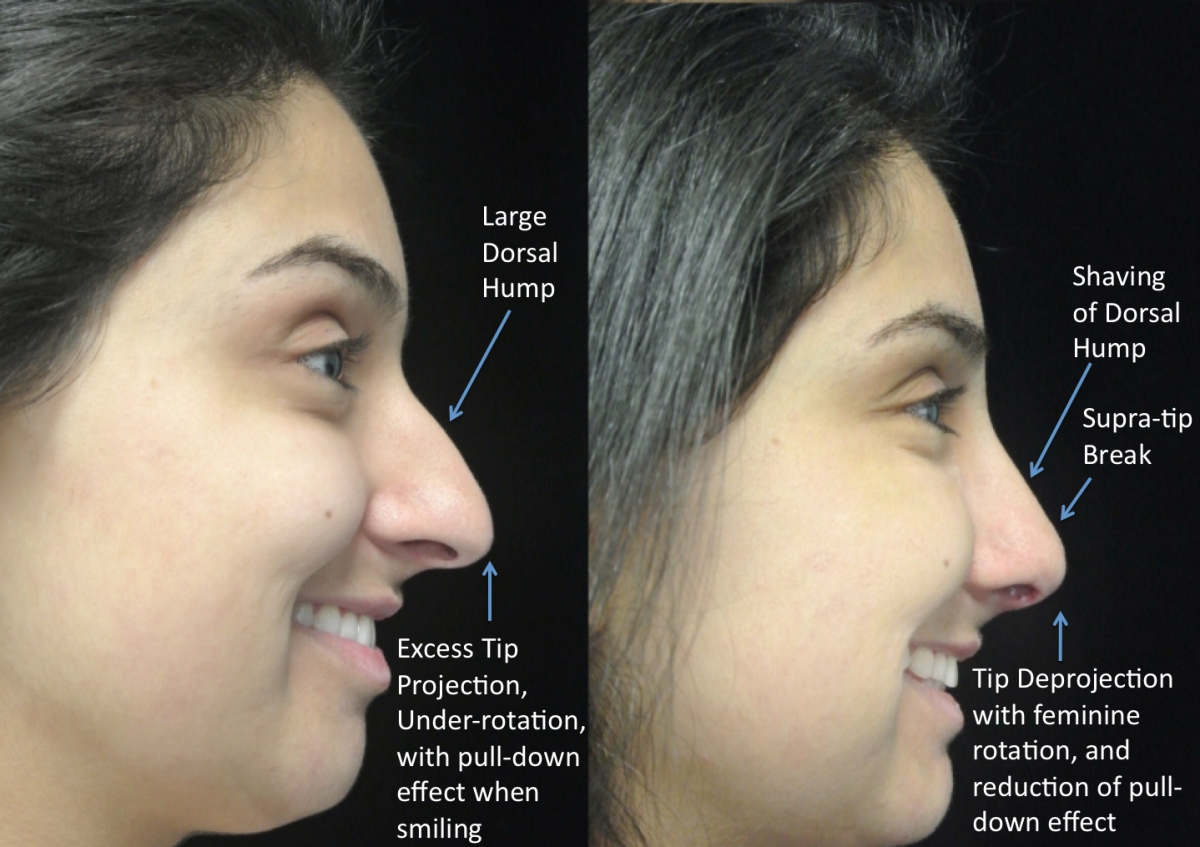
-
Unflattering nose angle –The angle formed at the point where the nose and forehead meet, and from the nasion to the tip of the nose, can make your nose look short or long. Rhinoplasty will help create the ideal angle for your nose.
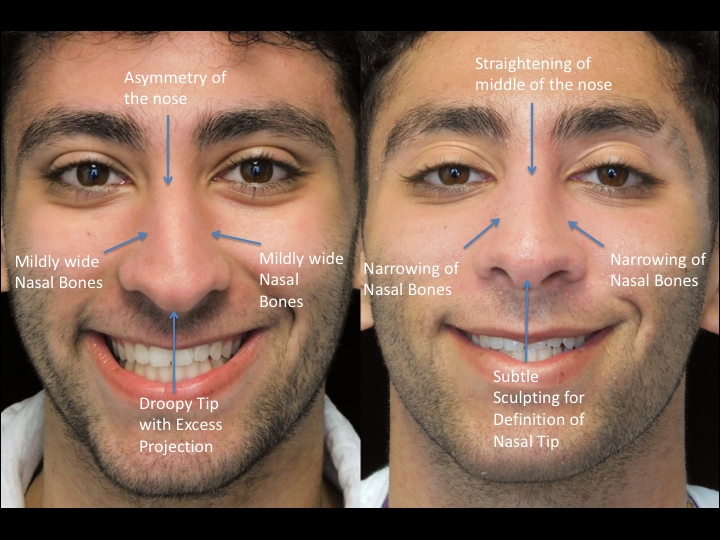
-
Unwanted nose bump – Dorsal humps are cartilage and bone irregularities that can distort the appearance of the nose. A rhinoplasty can help create a smoother nose bridge.
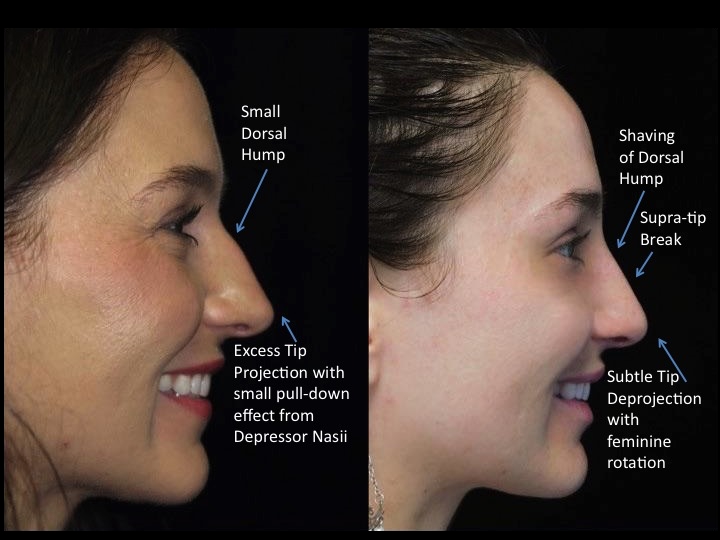
Scarless nose surgery can also address more serious issues. If the surgeon discovers a deviated septum or nasal valve collapse that is causing nasal breathing problems, a rhinoplasty will greatly benefit you. Breathing issues can be addressed either independently via functional surgery or in conjunction with cosmetic nasal surgery.
How does closed rhinoplasty work?
The surgeon starts by making small incisions inside the nostrils and through the mucosa instead of the external part of the nose that is covered in skin so that there is no visible scarring. Through these small and strategic incisions, a highly skilled closed rhinoplasty surgeon is able to visualize the structures of the nose and shape them to the desired aesthetic result.
Once the Scarless Nose® surgery is complete, the surgeon will close the incisions with dissolvable sutures, or dissolvable stitches. A small cast or splint will then be placed over the nose to assist in healing.
A professional consultation is important to understand whether or not you are a good candidate for a closed rhinoplasty. If you are unsure whether you would be a better candidate for either the “open” or “closed” procedure, schedule a consultation with a reputable doctor who will guide you to the best option based on your natural nose shape and your desired outcome.
Is there an age requirement?
Rhinoplasty is generally recommended for patients aged 15 and up. At this age, the facial skeleton is usually mature enough to undergo cosmetic changes. Another way for surgeons to determine whether or not the facial skeleton has fully developed is to understand when the patient’s foot size has stopped growing, since the growth of the foot is closely correlated to the growth of the facial skeleton.
All rhinoplasty candidates are evaluated on a case-by-case basis. Schedule a consultation today to find out if you can safely undergo closed rhinoplasty.
What are the advantages of closed rhinoplasty?
-
No scarring –One advantage of a closed rhinoplasty is that all incisions are made inside the nose with no external cuts or scars. This minimizes the risk of permanent external scarring, which is often the case with open rhinoplasty and other procedures that involve external incisions.
-
Shorter surgery time –With open rhinoplasty, half the operating time is spent making external incisions, deconstructing the nose, and closing those incisions. Closed rhinoplasty, by comparison, tends to have a shorter operating time because the nose is not being reconstructed from scratch.
-
Better circulation on the skin of the nasal tip – Patients experience less swelling after a closed rhinoplasty since the skin’s natural drainage channels remain largely undisturbed during surgery.
-
Faster recovery time – Patients enjoy a shorter recovery period due to the internal incisions with no external cuts or scars to heal. Most patients are able to be back to socializing seven days after surgery. Once the cast is removed, there are little to no tell-tale signs of surgery.
What are some disadvantages of a closed rhinoplasty?
Like any surgical procedure, patient selection is of paramount importance. A thorough and honest consultation with a closed rhinoplasty surgeon will help you determine whether or not this technique is ideal for you.
In our practice, 98% of patients say that they’re happy with the results, while the remaining 2% feel underwhelmed with the outcome as the worst case scenario. And for some patients, an open rhinoplasty might be the better option depending on their needs and natural nasal anatomy.
That said, the calculated risks that come with closed rhinoplasty are quite manageable for the highly trained surgeon. This means that there is a much lower chance of getting a botched nose job — a common prospect for patients who go through open rhinoplasty, which often does too much to the nose.
In any case, it’s important for patients to verify that their surgeon is skilled and that they performed rhinoplasty multiple times. Moreover, it’s important for them to decide whether they agree with the surgeon’s aesthetic style and preferences. The best way to find out if you’re a good candidate for either open or closed rhinoplasty is to have an honest consultation with a board certified surgeon who will discuss the best procedure for you.
Dr. Deepak Dugar is the only Board Certified Rhinoplasty Surgeon in the United States whose practice is solely dedicated to Scarless Nose®; Surgery.
Before and after closed rhinoplasty
The best way to evaluate a surgeon’s work is to look at real patients’ before and after closed rhinoplasty photos (see below). Helping patients visualize the anticipated results of the procedure can make them feel more confident about going into surgery.
Additionally, you may also try our FaceTouchUp Nose Morph tool for help visualizing any cosmetic changes to your own nose by playing around with your own anatomy. It is important to note that morphing technologies never can accurately predict final results so they should only be used as a conversation tool to identify the goals, but never to predict the final results.
Getting ready for closed rhinoplasty
What to do before surgery
To ensure a successful procedure, patients should follow these practices prior to surgery:
- Avoid unprescribed medications – Your surgeon might advise against taking any over-the-counter and non-prescription medications for about two weeks before the procedure to make sure that these do not interfere during the procedure and recovery process.
- Avoid smoking – When considering rhinoplasty, patients should be in good overall health and avoid smoking four weeks before and after surgery since smoking can potentially delay healing by vasoconstricting the blood vessels.
- Limit sun exposure – Patients are advised to avoid prolonged or unprotected sun exposure for six weeks following rhinoplasty. Doctors recommend wearing SPF 30 or higher.
- Avoid food or fluid intake – Patients must avoid eating or drinking hours before the surgery or as indicated by the surgeon or anesthesiologist.
When in doubt, follow your surgeon’s advice to prepare for surgery and ensure optimal results from your closed rhinoplasty.
What to do after surgery
Once Scarless Nose® surgery is complete, the patient must take measures to ensure proper healing:
- Don’t drive after surgery – For your immediate safety, make arrangements to have someone take you home following the procedure while you wait for the anesthesia to wear off. You must have someone take care of you for 24 hours.
- Don’t blow your nose – If there is blockage or drainage in your nose, you may gently sniff up, swallow or spit out any contents but do not blow your nose and try to clean the inside of your nose itself. If you must sneeze, try sneezing with an open mouth to help minimize any disturbance in the nose while it heals.
- Stick to a soft diet – Patients are generally advised to stick to cool and bland foods like plain crackers within the first 24 hours following a closed rhinoplasty. They are also advised to stick with soft foods like soup, oatmeal, mashed potatoes, or smoothies within the first few days of surgery while avoiding hot or spicy meals and beverages during this time.
- Avoid heavy or strenuous activities – While recovering from surgery, avoid demanding physical activities like heavy lifting, strenuous exercise, or contact sports for at least six weeks to protect the surgical site and ensure that it heals properly.
- Take your prescriptions – Any prescription medication to help with recovery and pain management will be provided by the day of the surgery. Take your prescriptions as directed.
- Keep your cast clean/dry – Keep your cast clean and dry during recovery. You will be required to apply antibiotic ointment to your stitches using a q-tip or a clean, soft-tipped applicator to keep it moist.
- Sleep on your back – Surgeons typically advise patients to sleep on their backs for at least one to six weeks while recovering from closed rhinoplasty. This will help keep the swelling more manageable and prevent any pressure to the nose.
- Keep your head elevated – Place your head on two pillows to keep it elevated to help with swelling.
- Use a toothbrush with soft bristles – Switch to a soft bristle toothbrush while recovering from closed rhinoplasty to ensure comfort. Avoid excessive movement or pressure to the upper lip.
Your surgeon will provide support and make sure that you have all the information you need for a timely recovery following closed rhinoplasty. It’s also common practice for surgeons to set follow-up meetings with patients to discuss the results of the procedure.
Consult an expert in Scarless Nose® surgery
Have peace of mind and look forward to the results when you work with a rhinoplasty specialist.
As a Board Certified surgeon with years of extensive practice, Dr. Deepak Dugar M.D. specializes in closed rhinoplasty to help patients feel more confident about their appearance. His entire practice is devoted to Scarless Nose® surgery, making him the only Board Certified Rhinoplasty Surgeon in the United States to hold this distinction.
Dr. Dugar believes that patient education is one of the most important aspects of closed rhinoplasty, which is why he welcomes patients to his Beverly Hills office for in-depth consultations. He puts patients at ease with his calm and affable nature, creating a relaxed and no-pressure atmosphere in which patients feel empowered to make their own decisions.
Our fully accredited and state-licensed surgical facility in the Camden Medical Arts Building near Rodeo Drive allows us to provide the best care and treatment for rhinoplasty candidates. Our trained staff will provide the support you need for a seamless and successful rhinoplasty.
For any questions or concerns you might have about getting your nose done, get in touch with us today. You can schedule an appointment here. You can also contact us at 310.276.1703 and [email protected] for more information.

